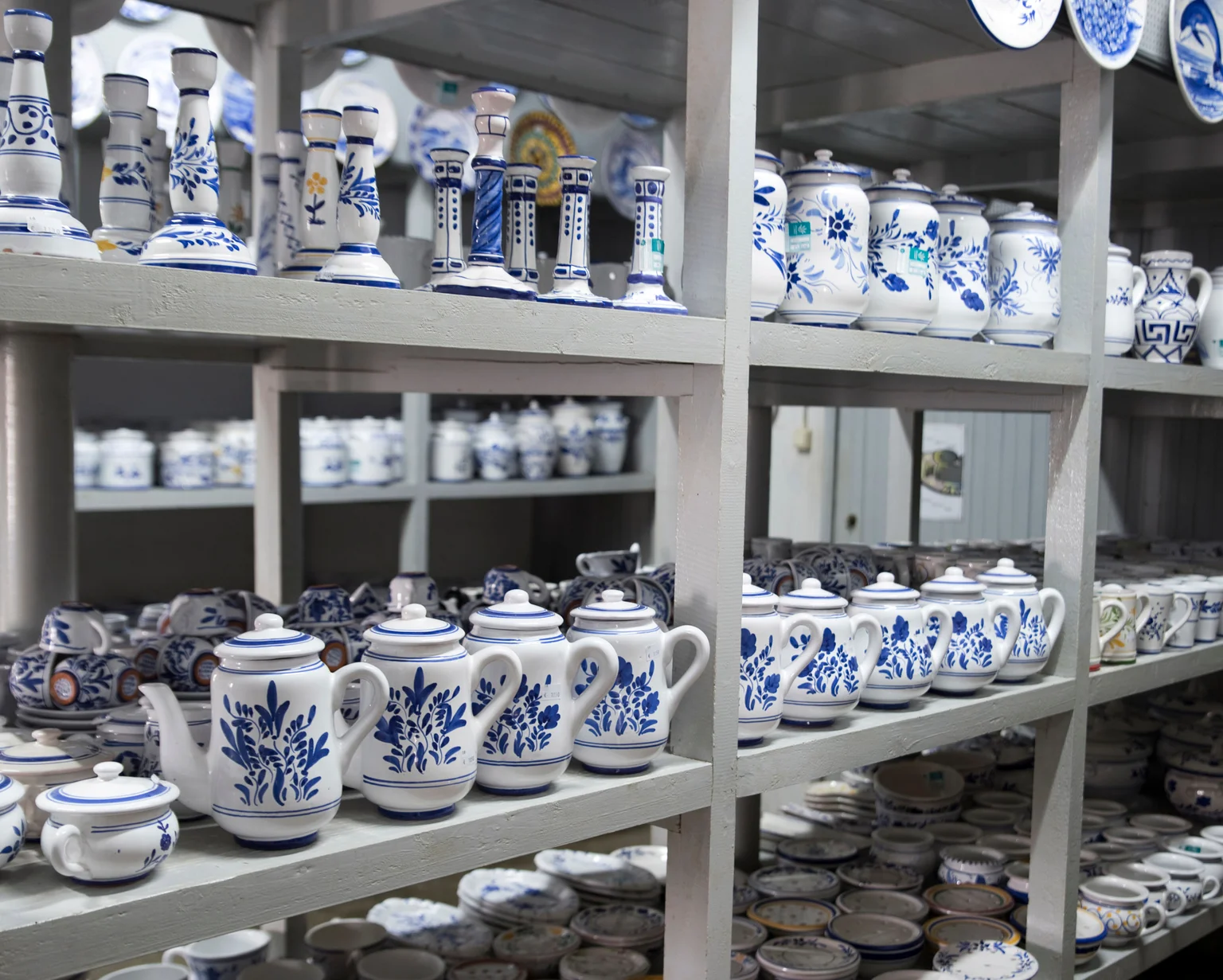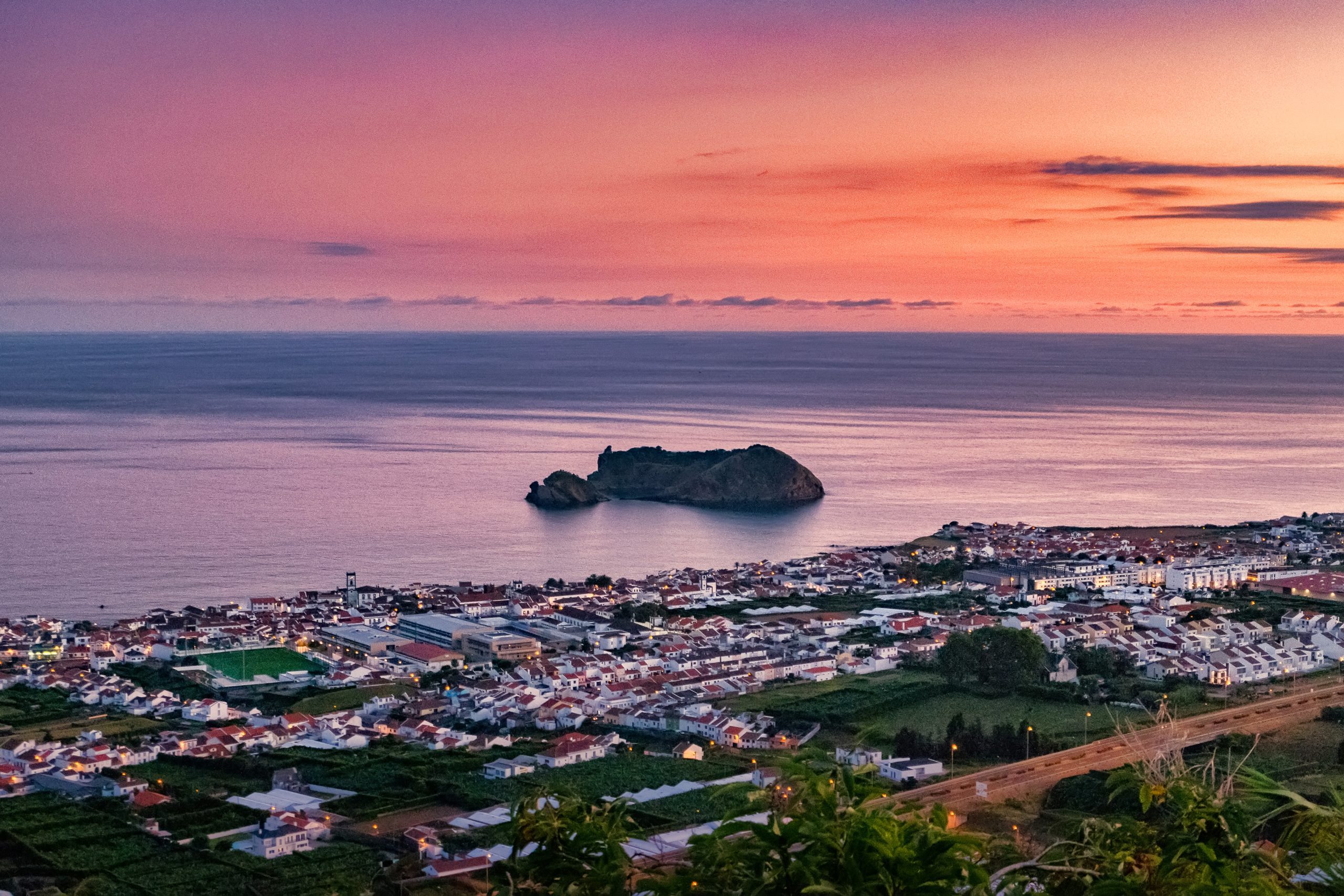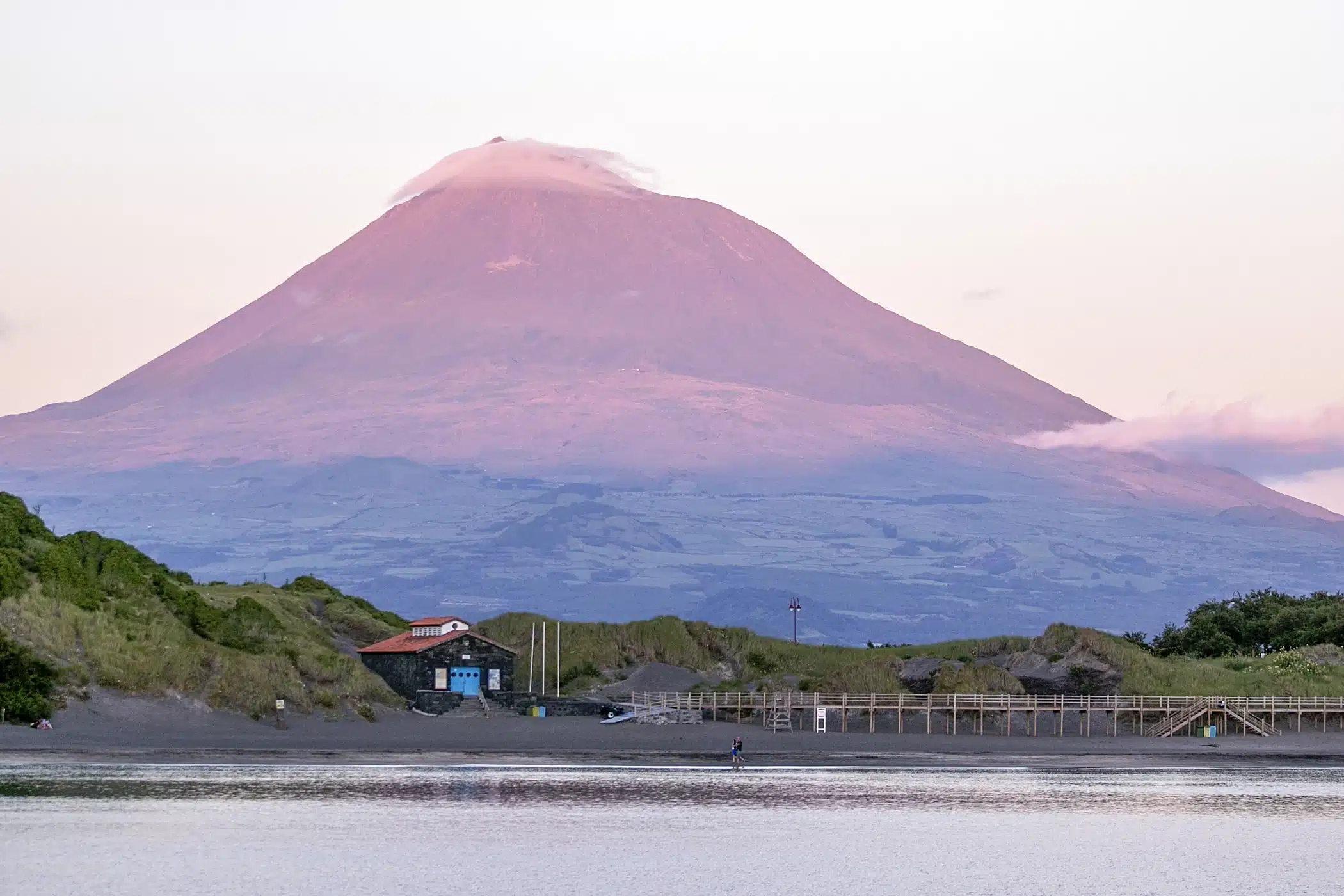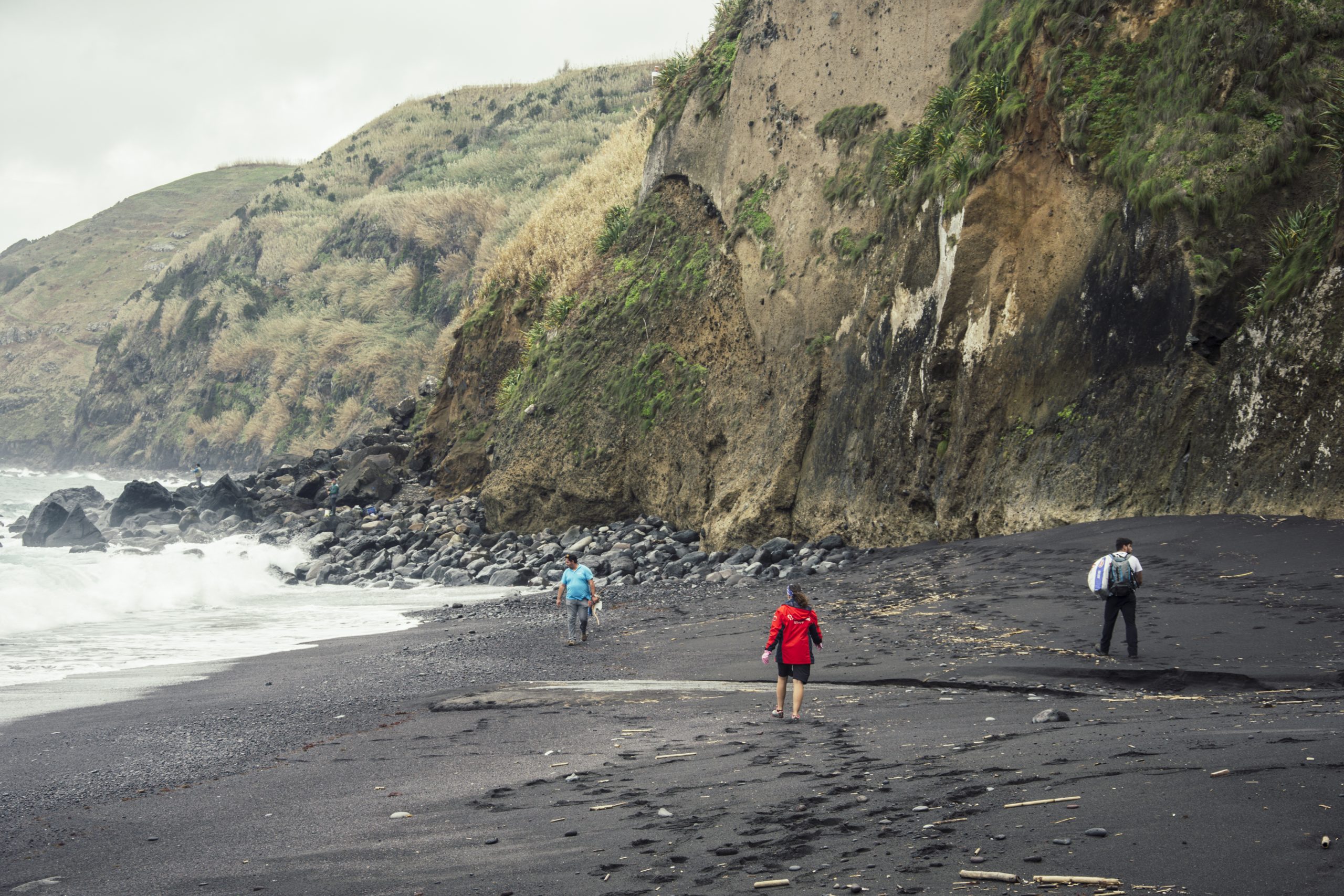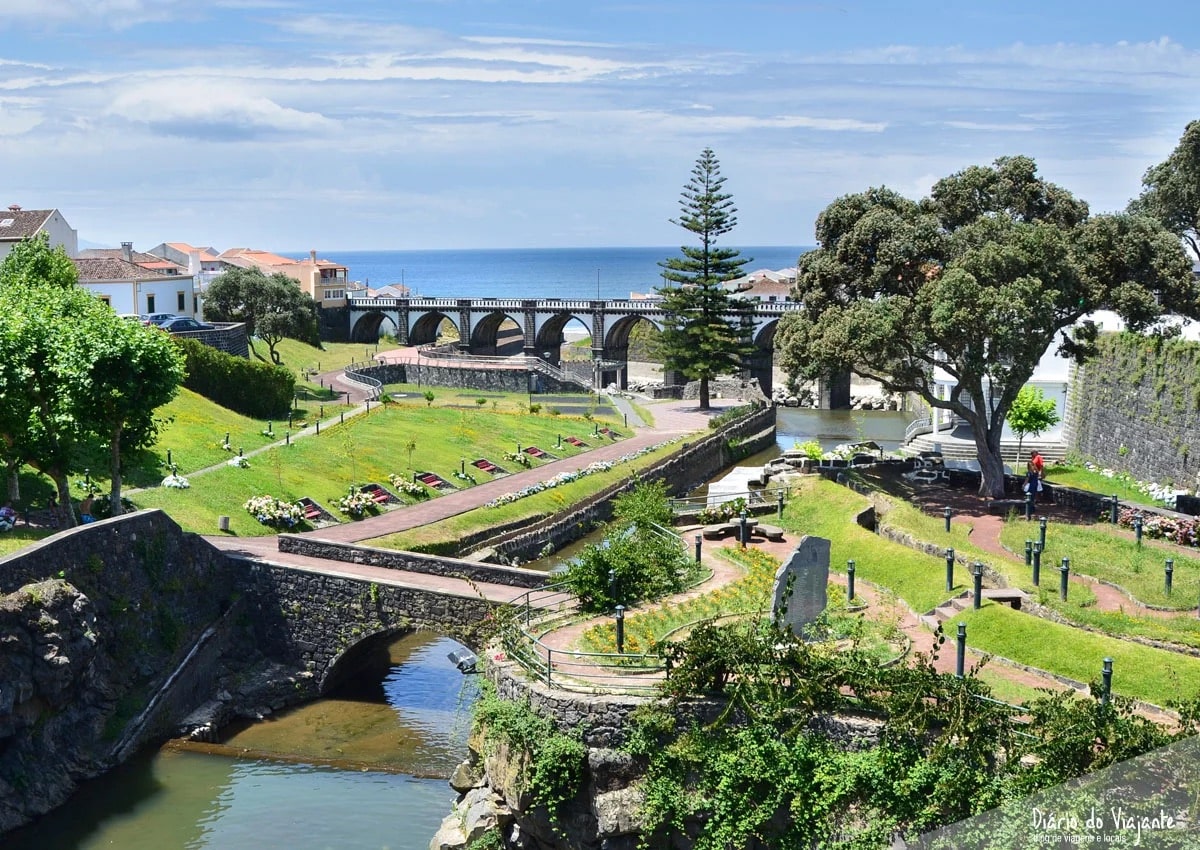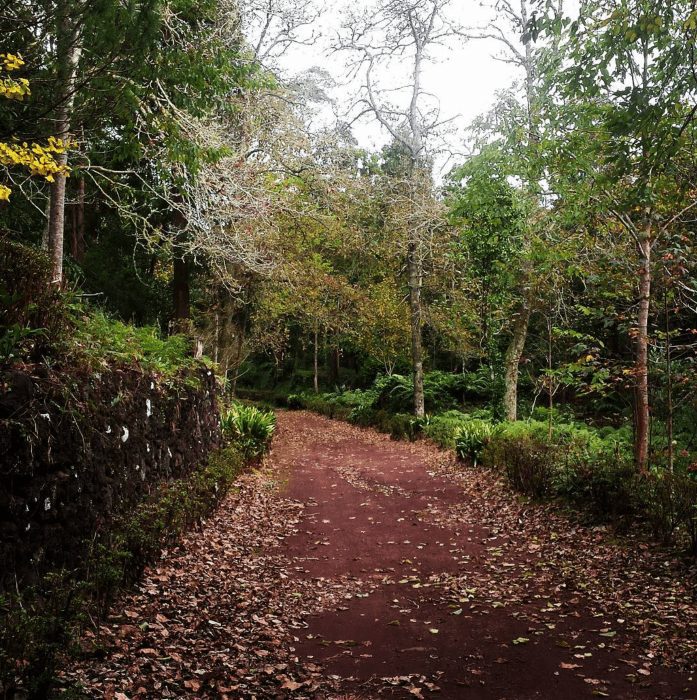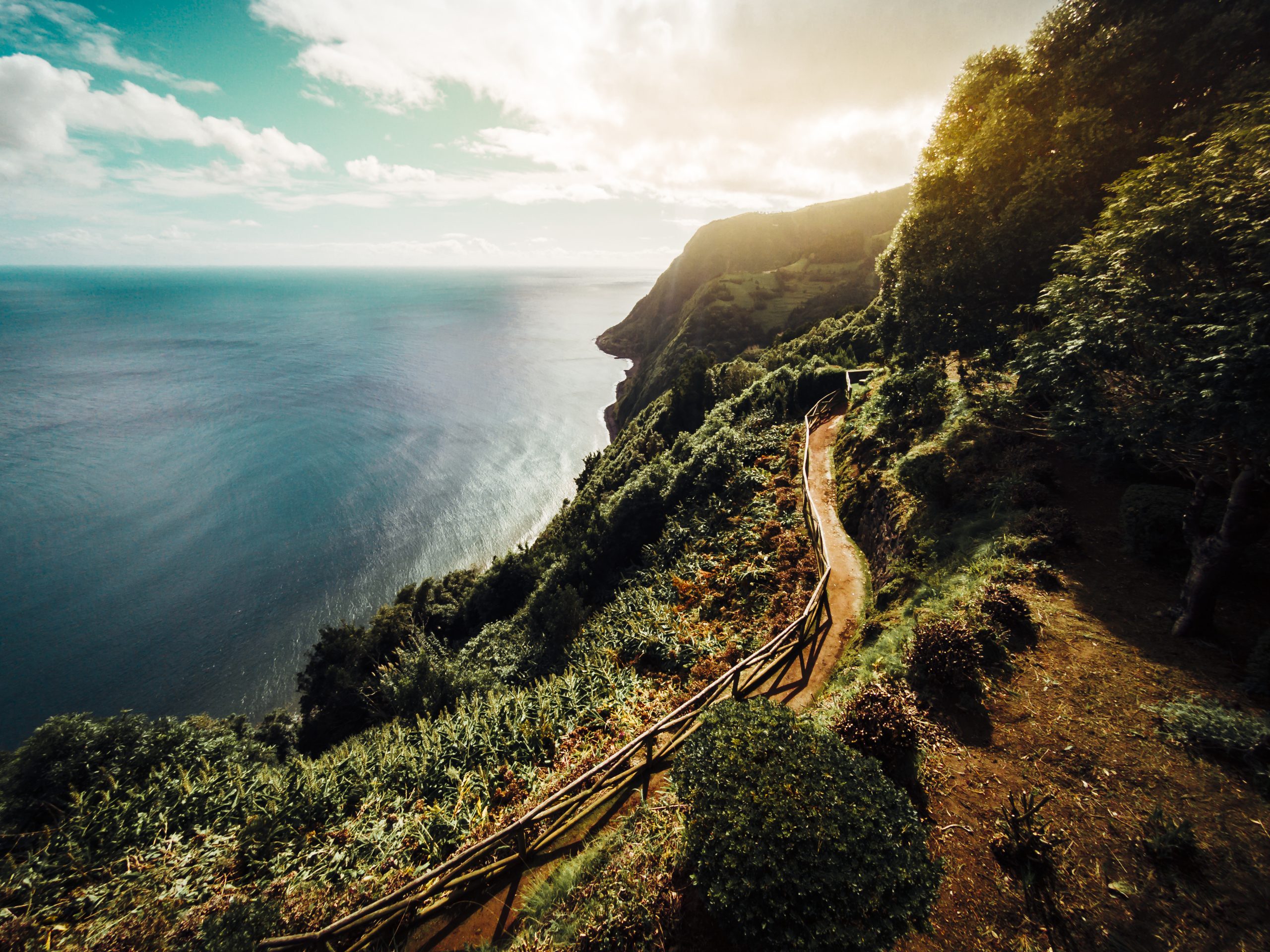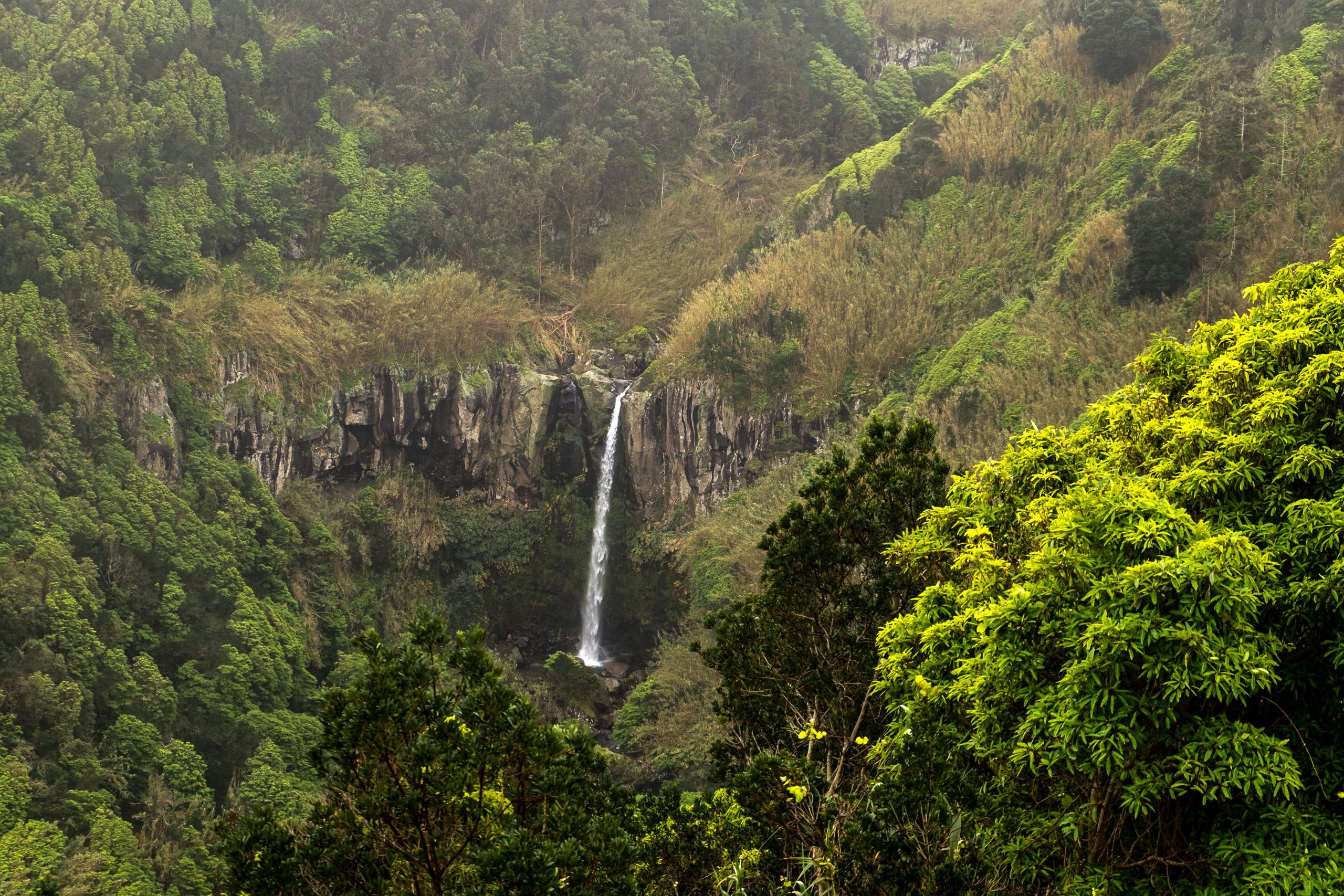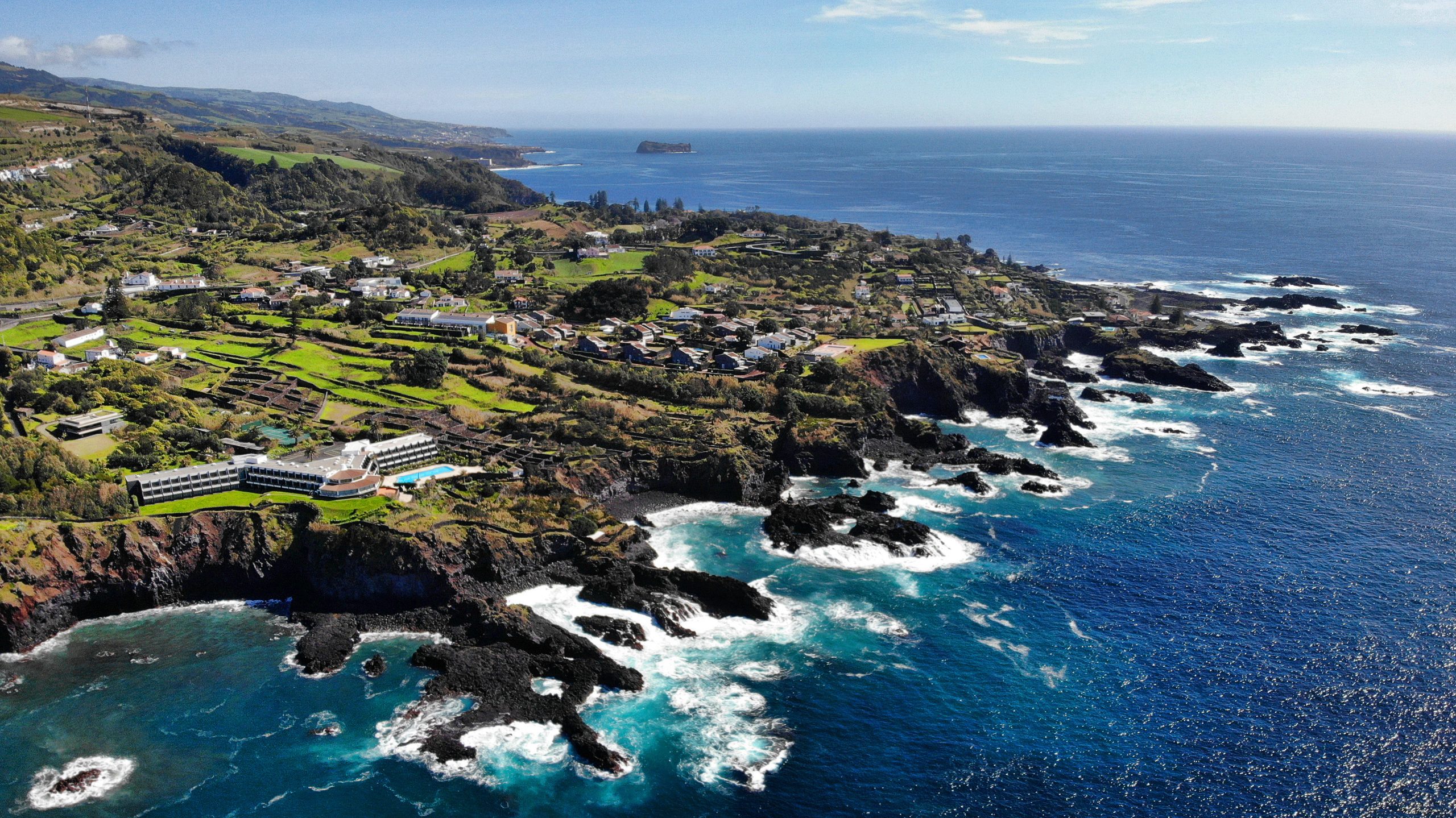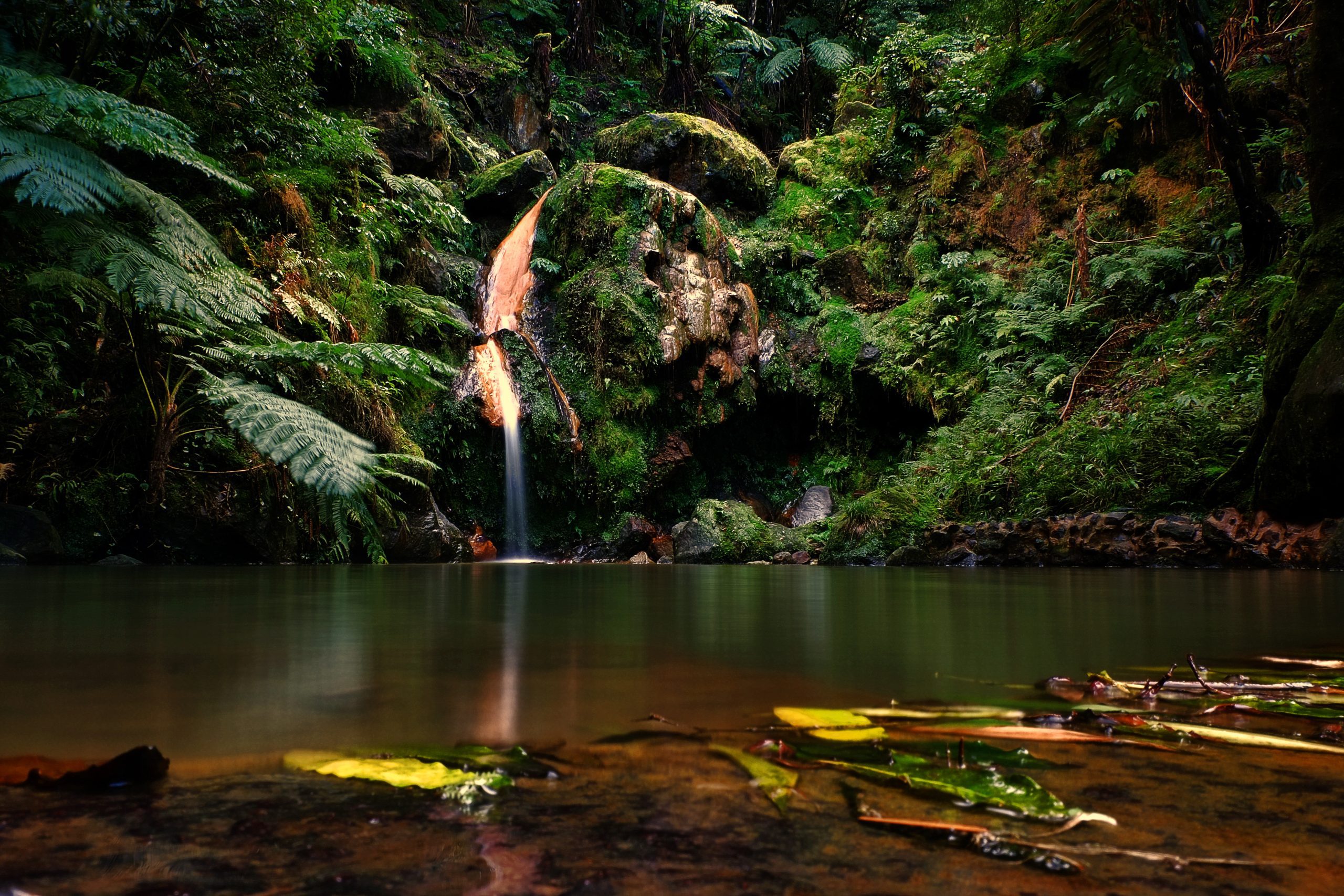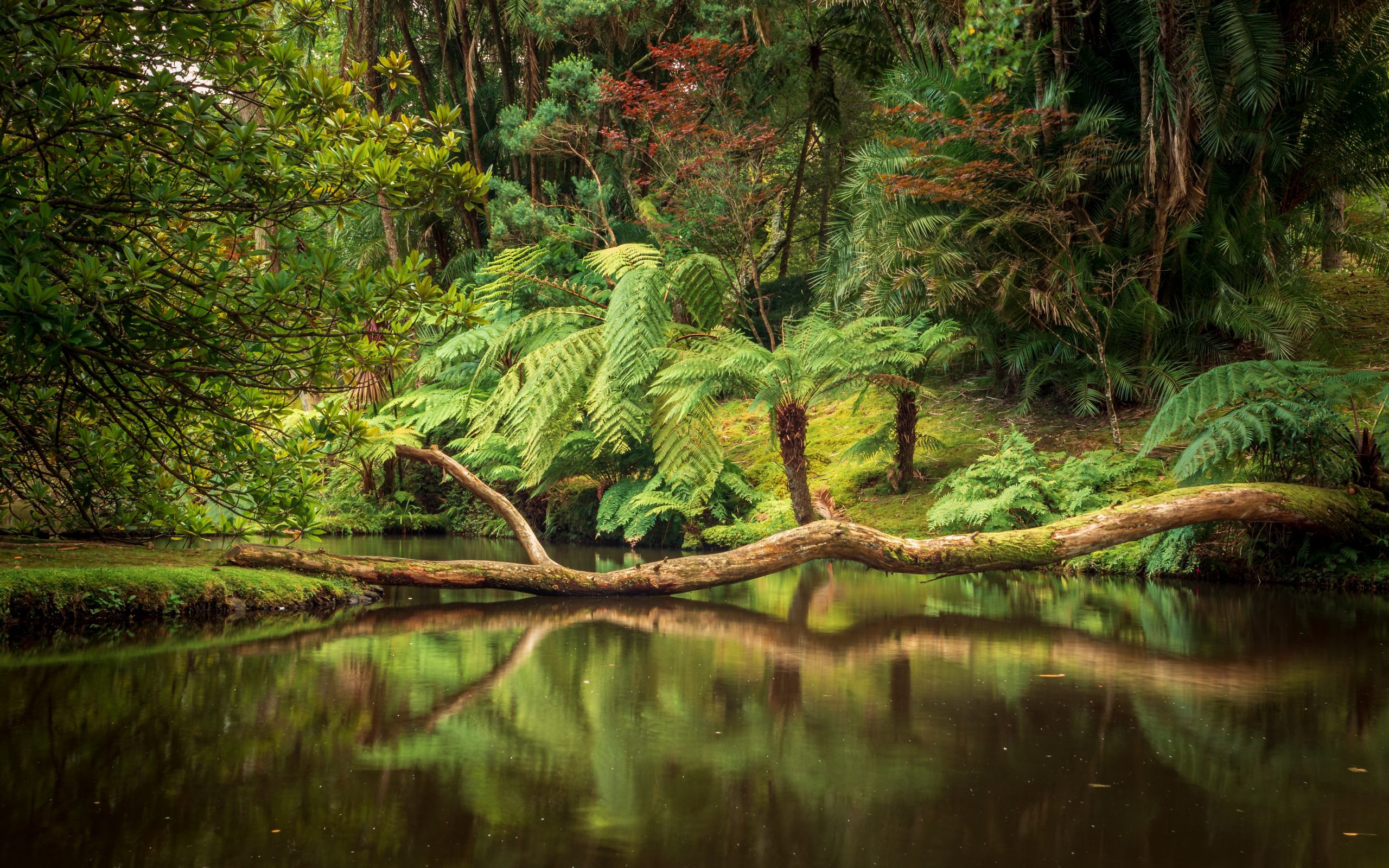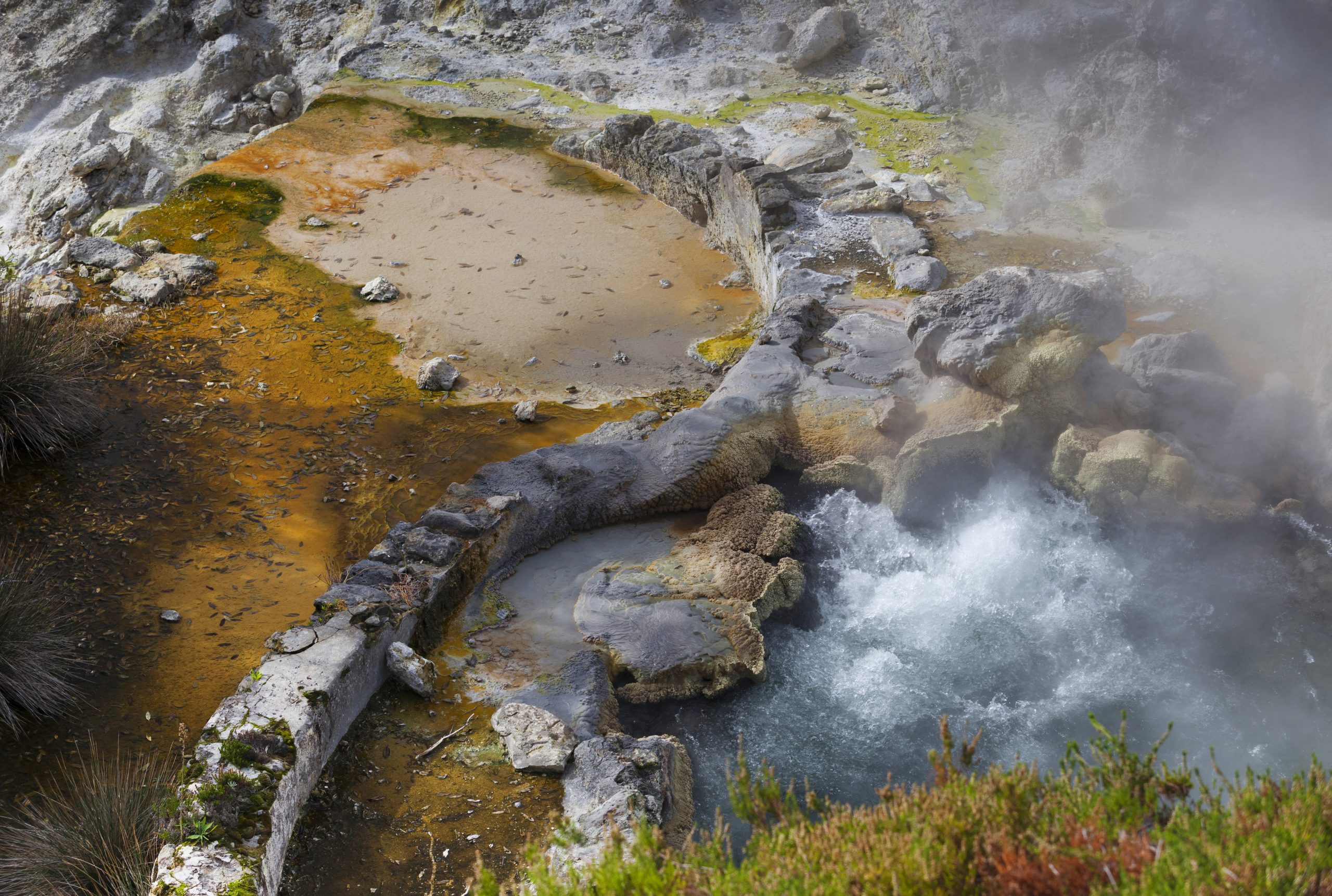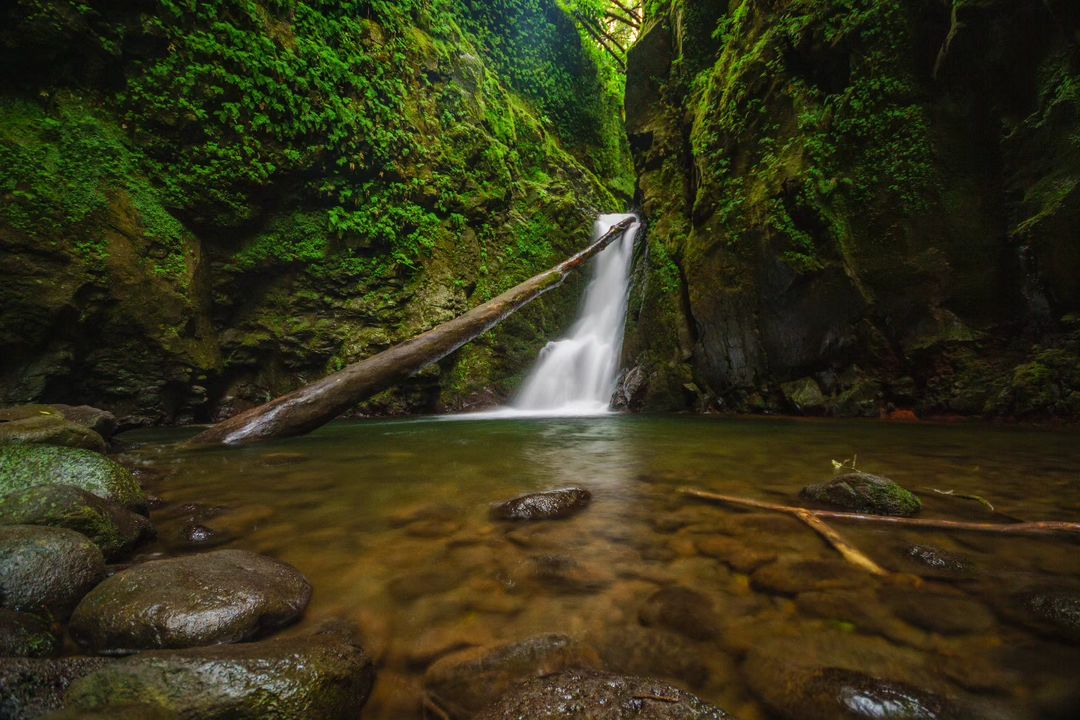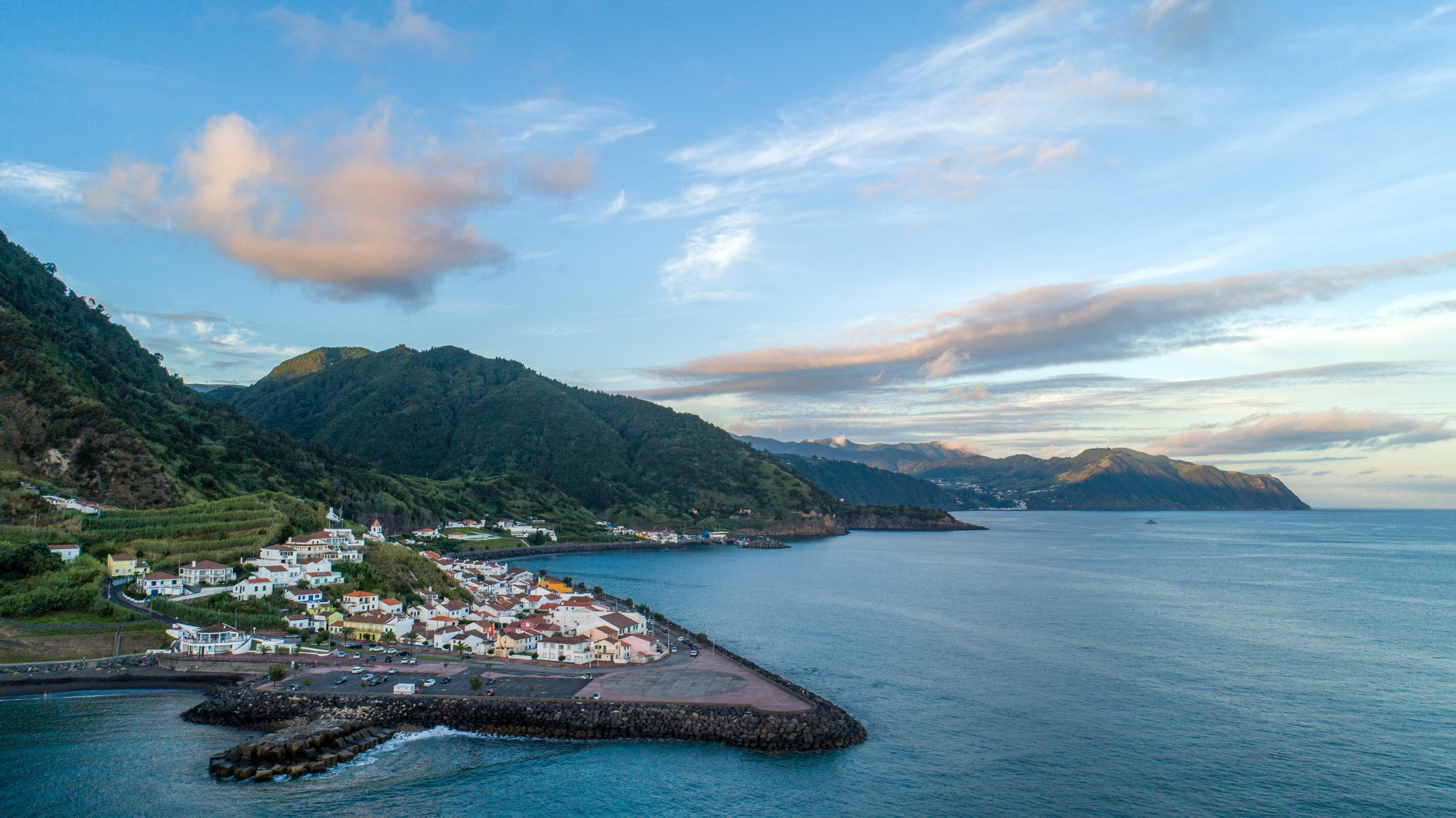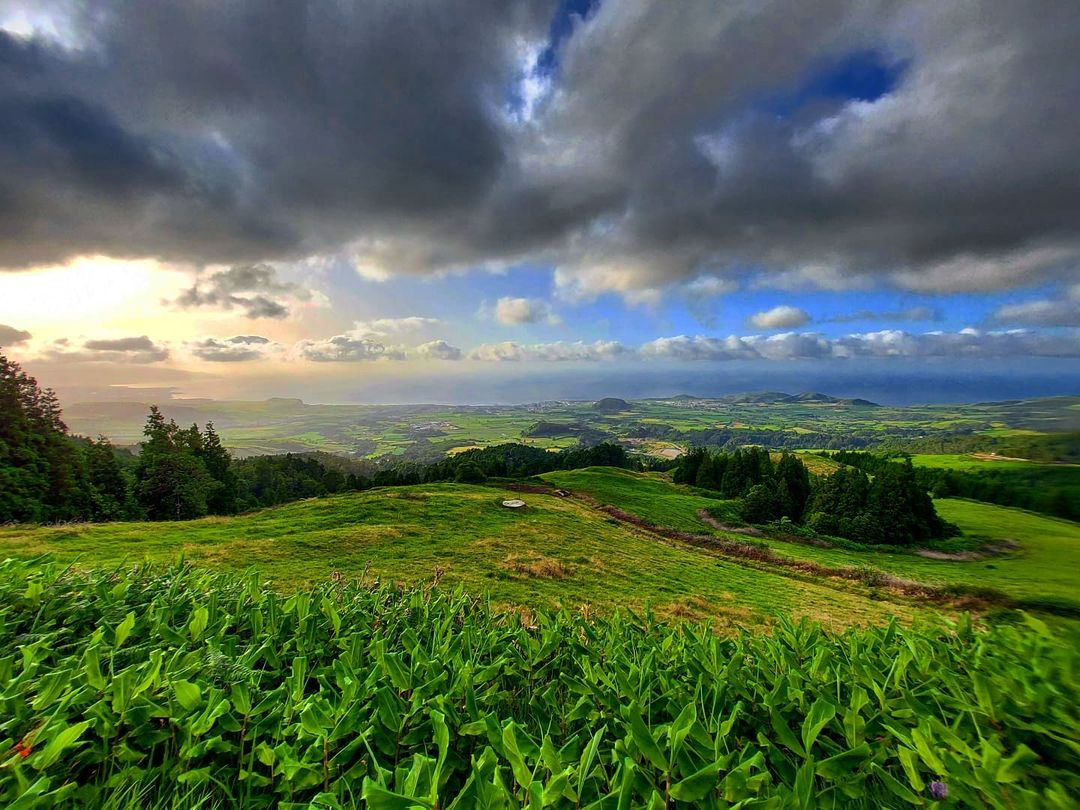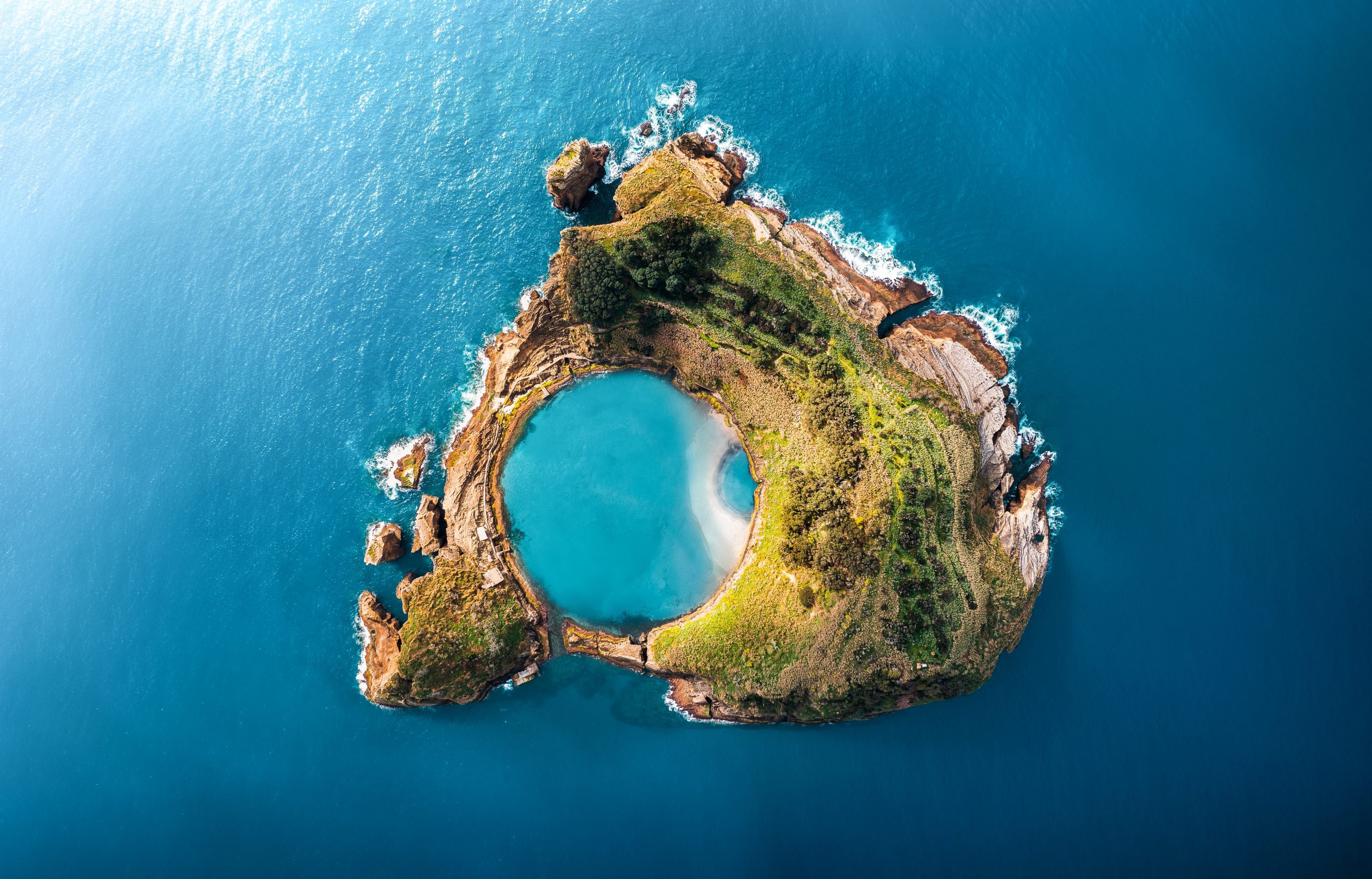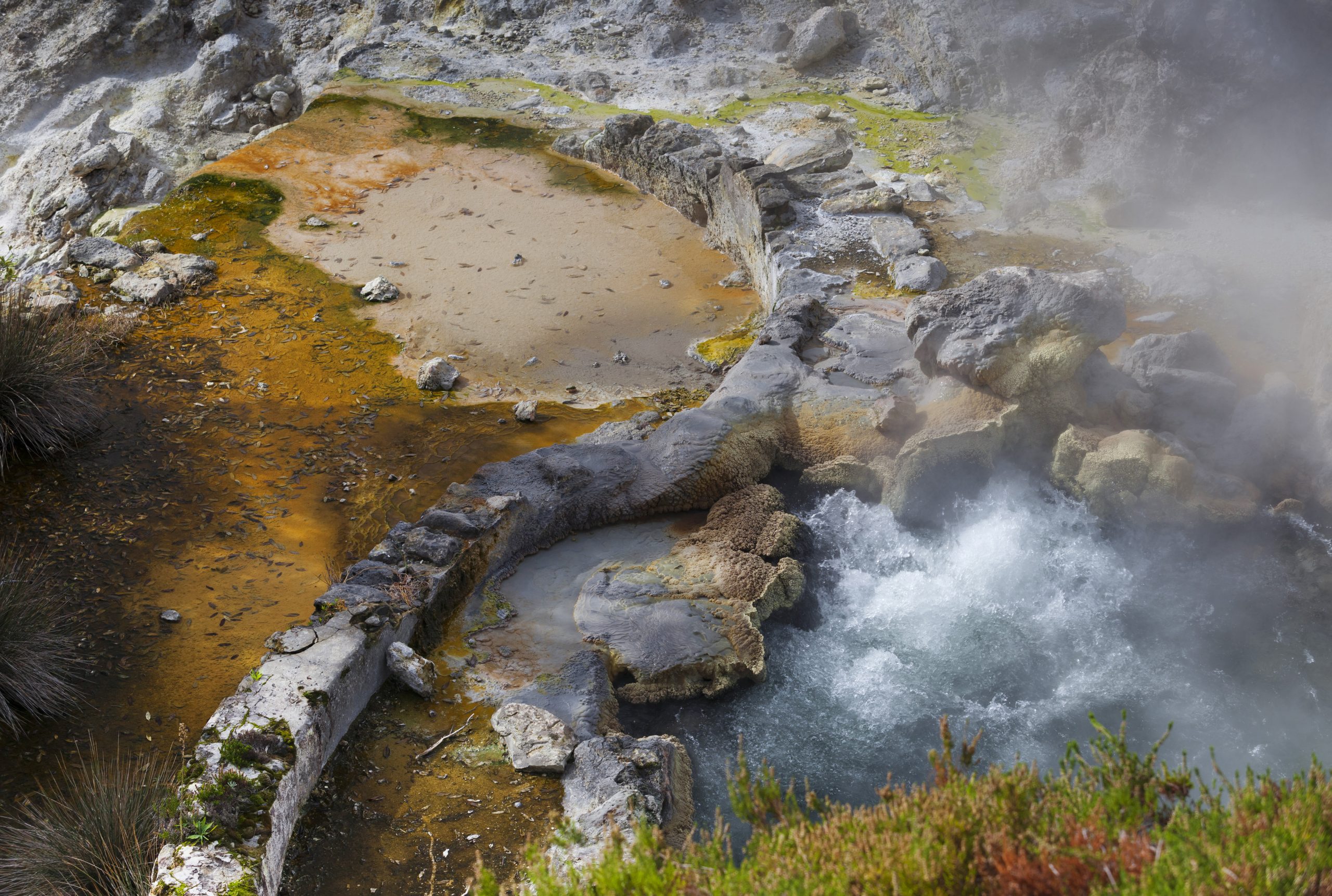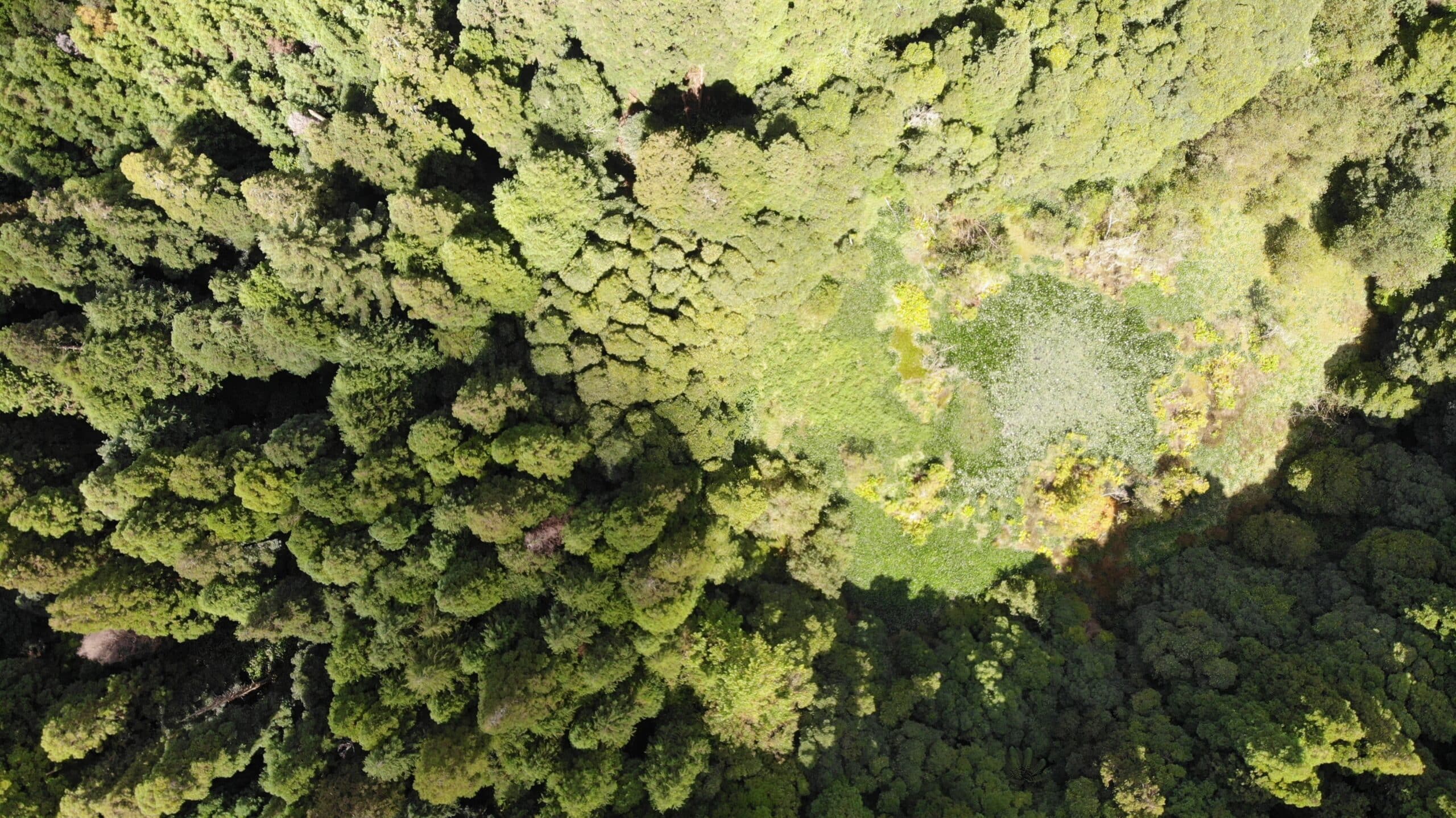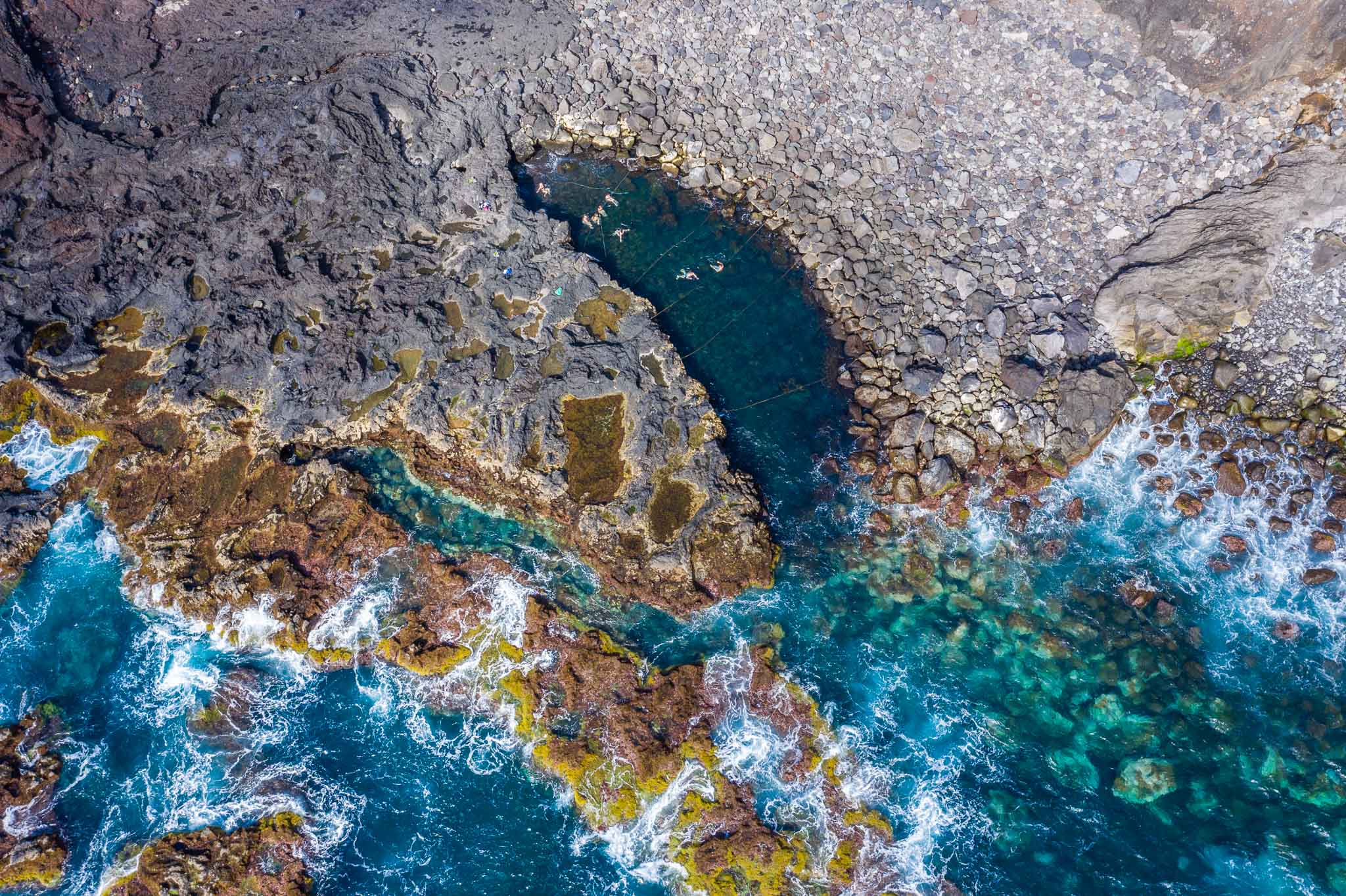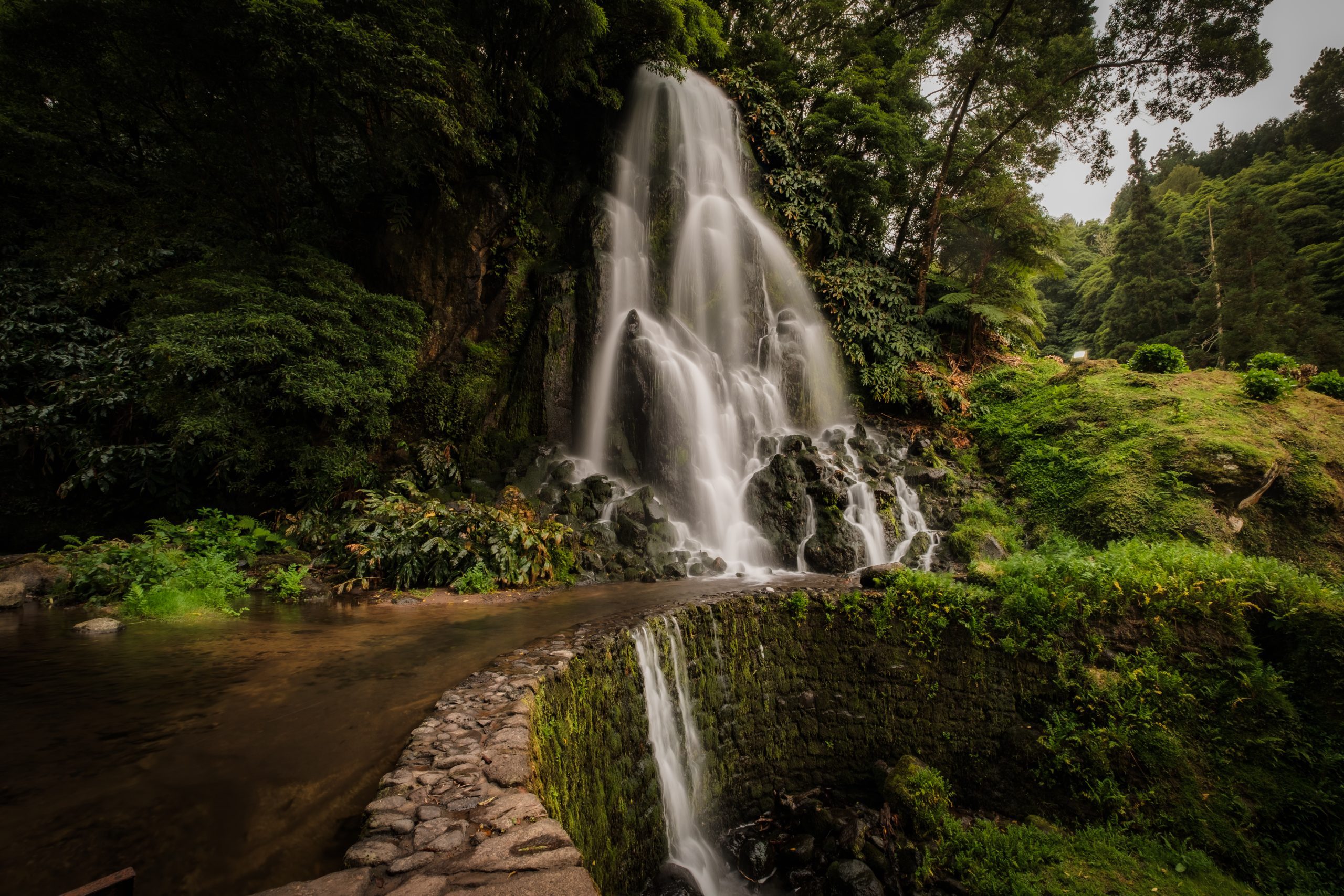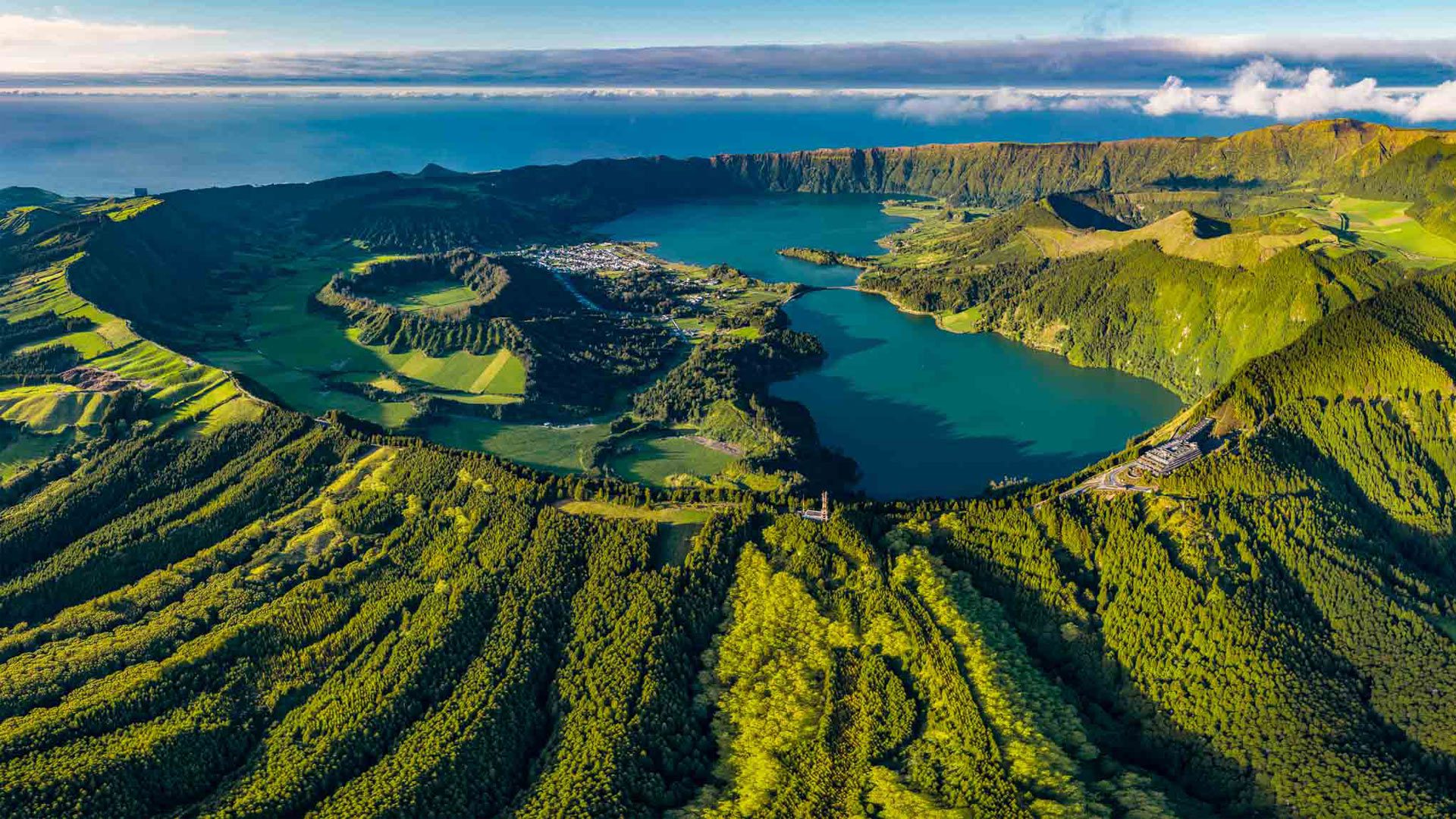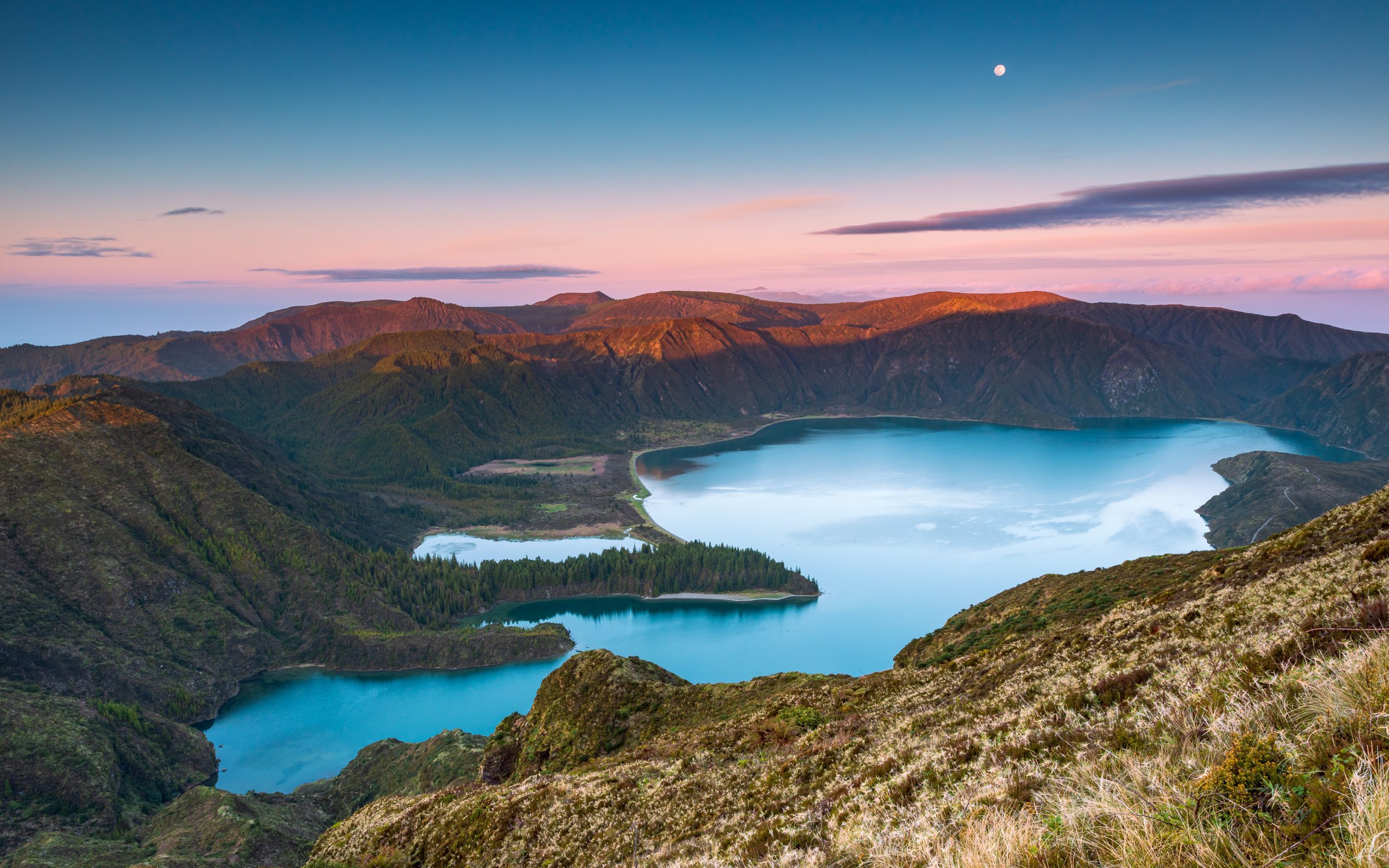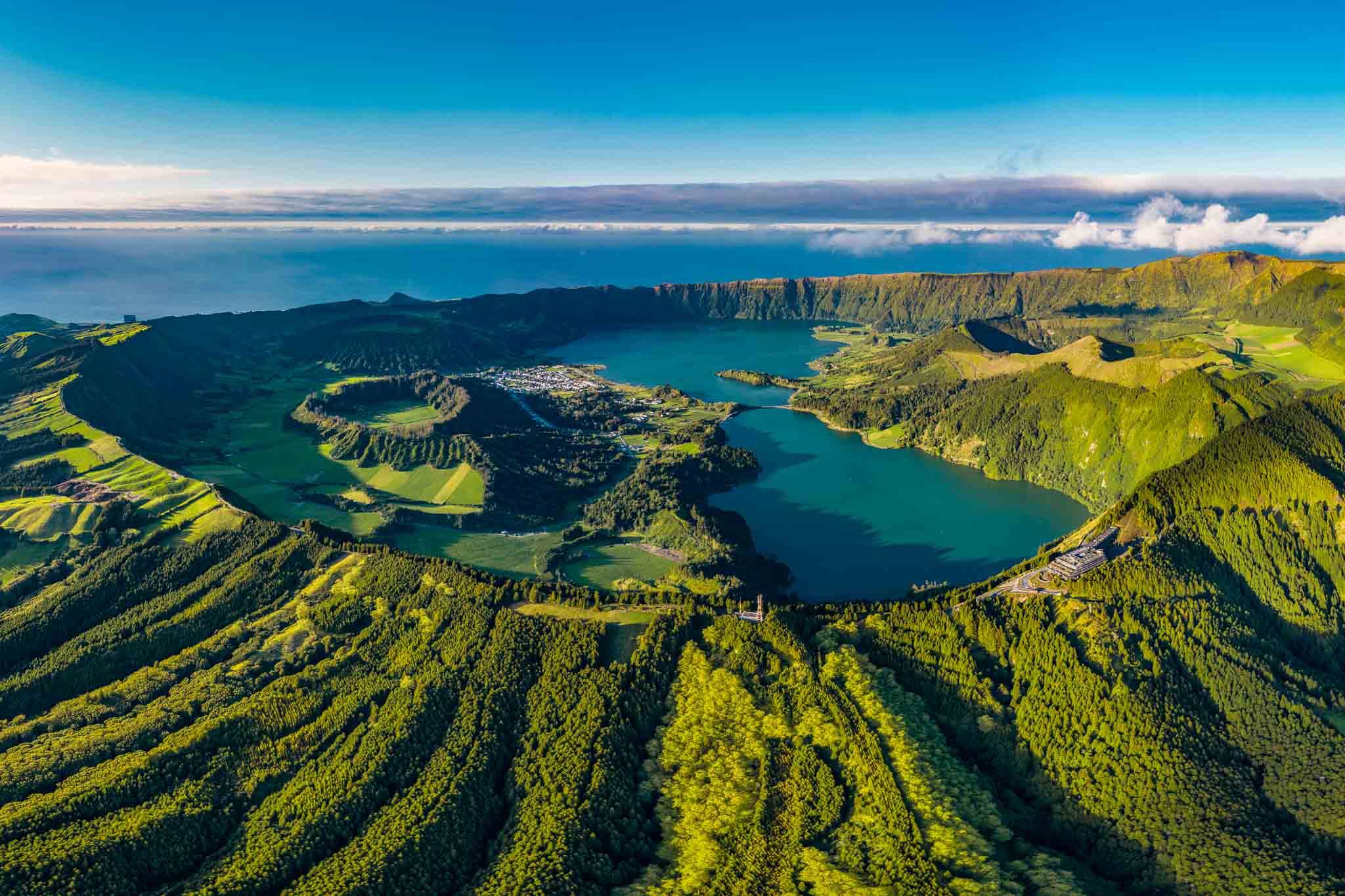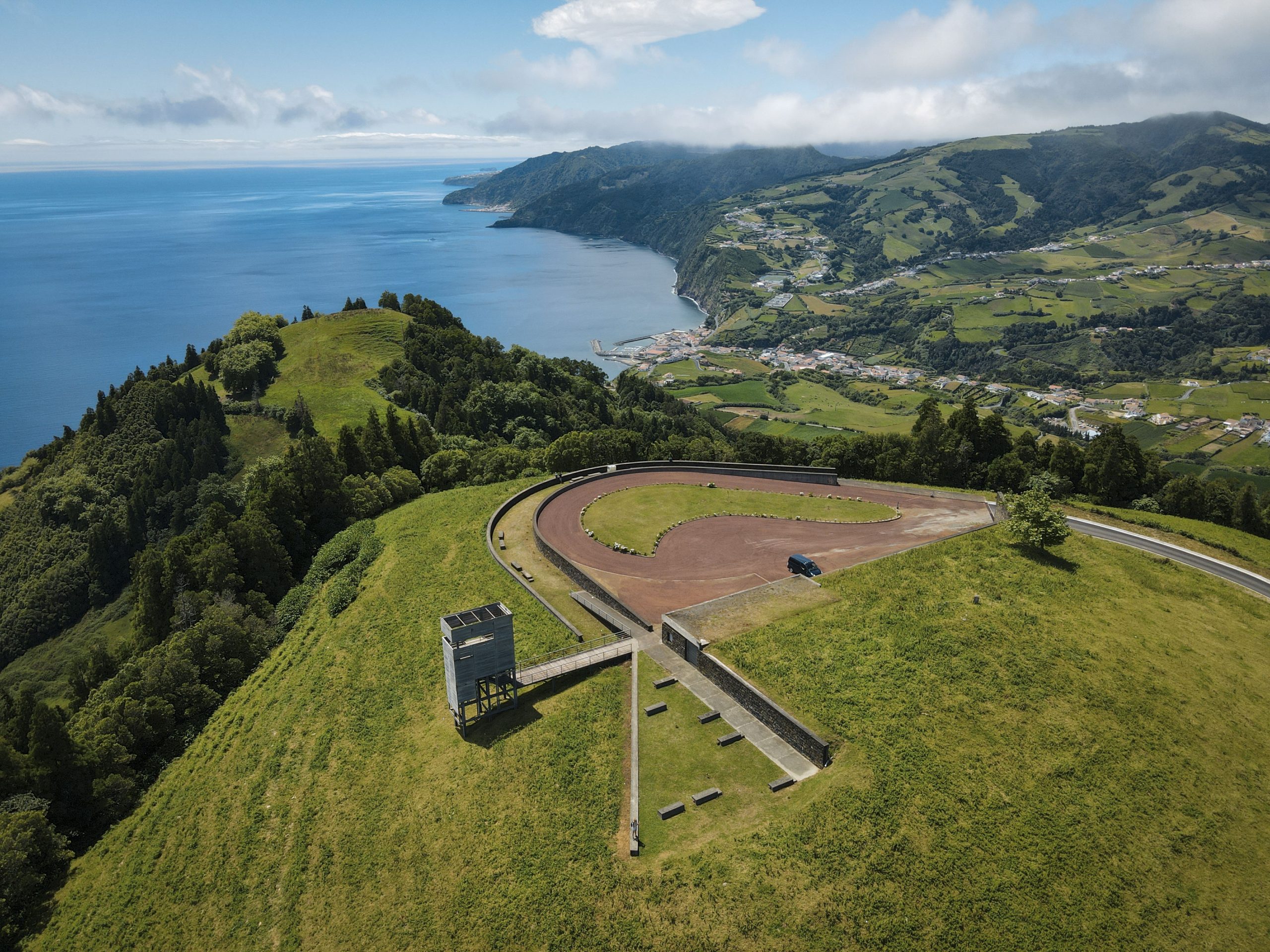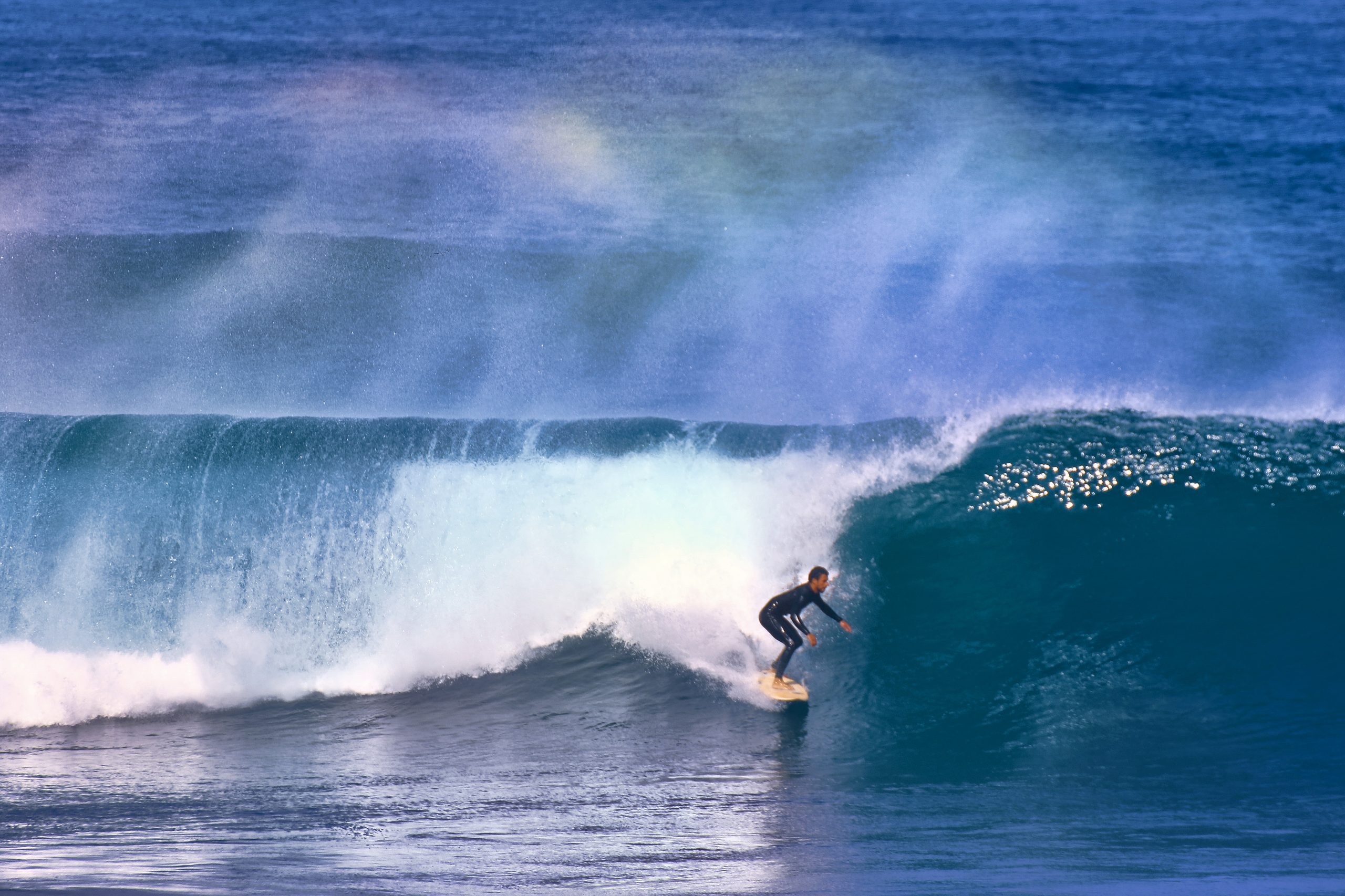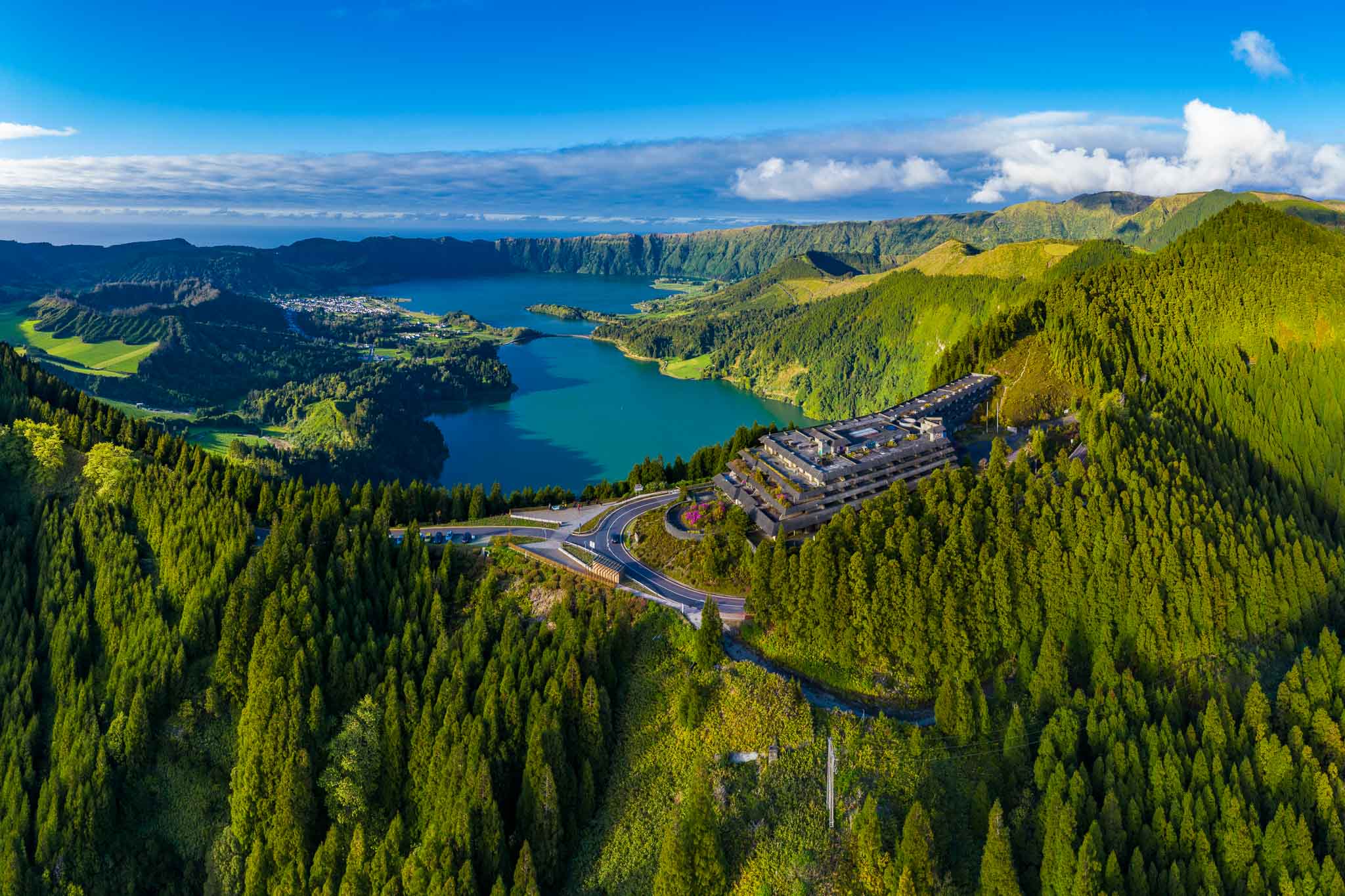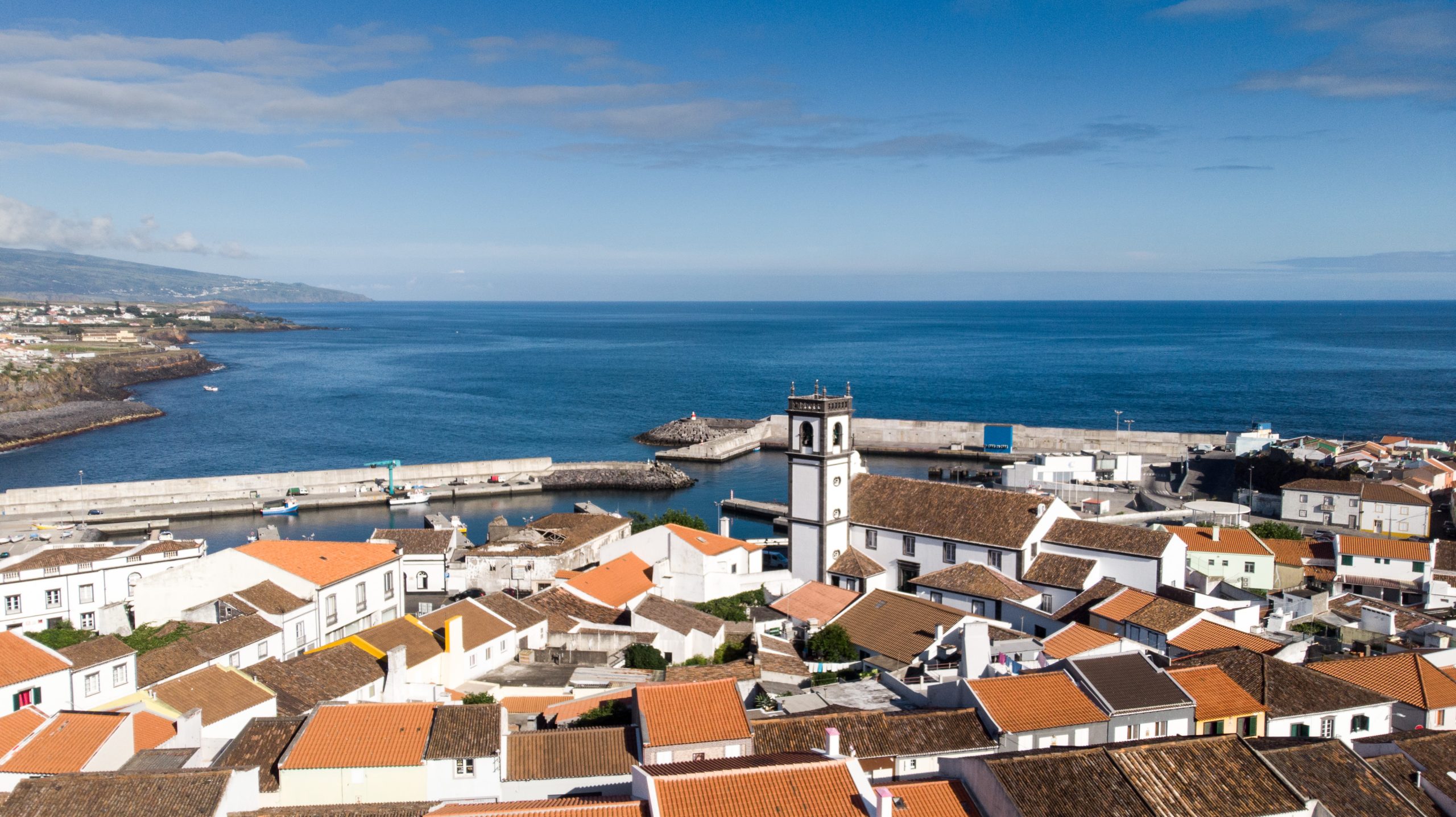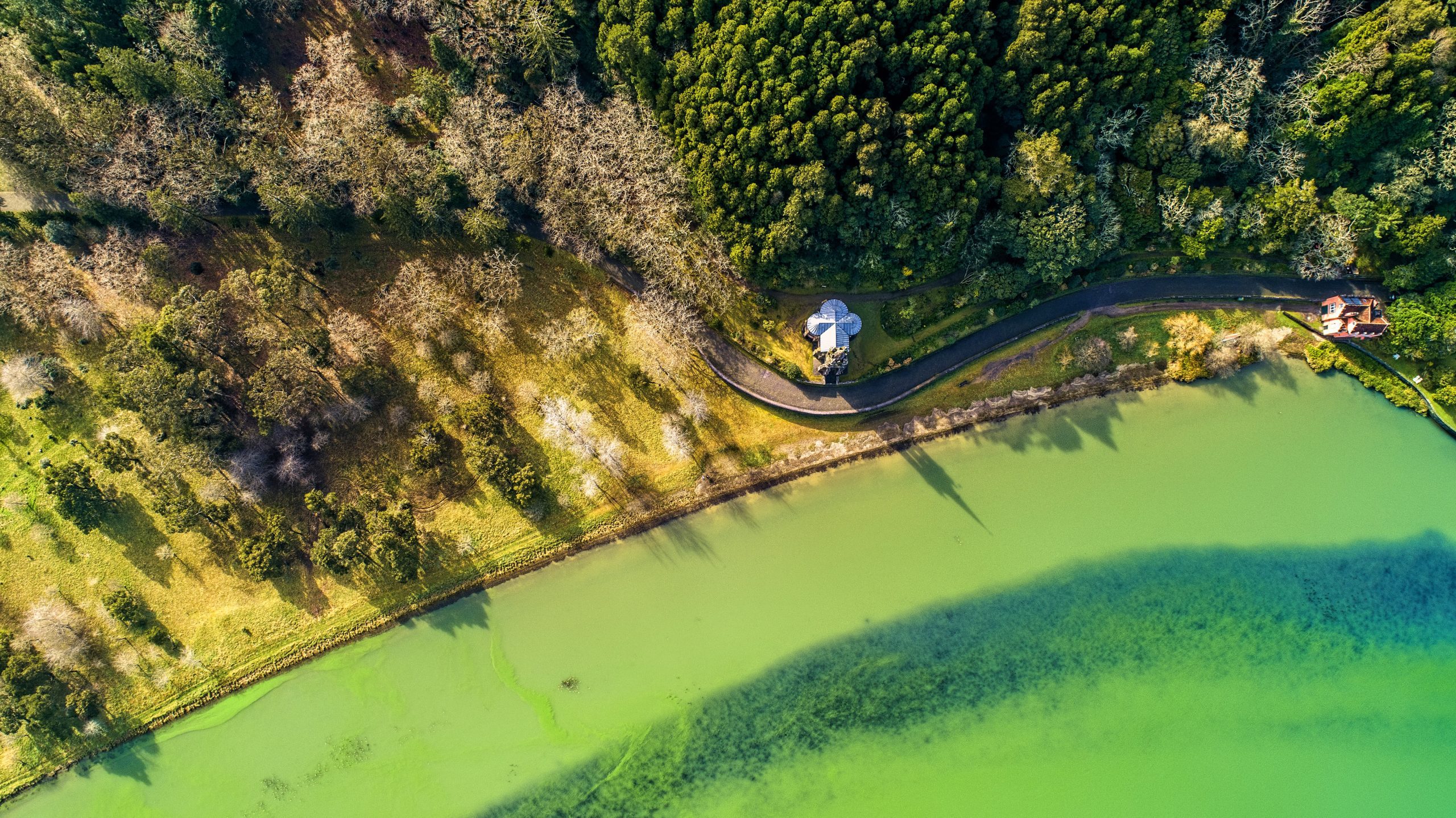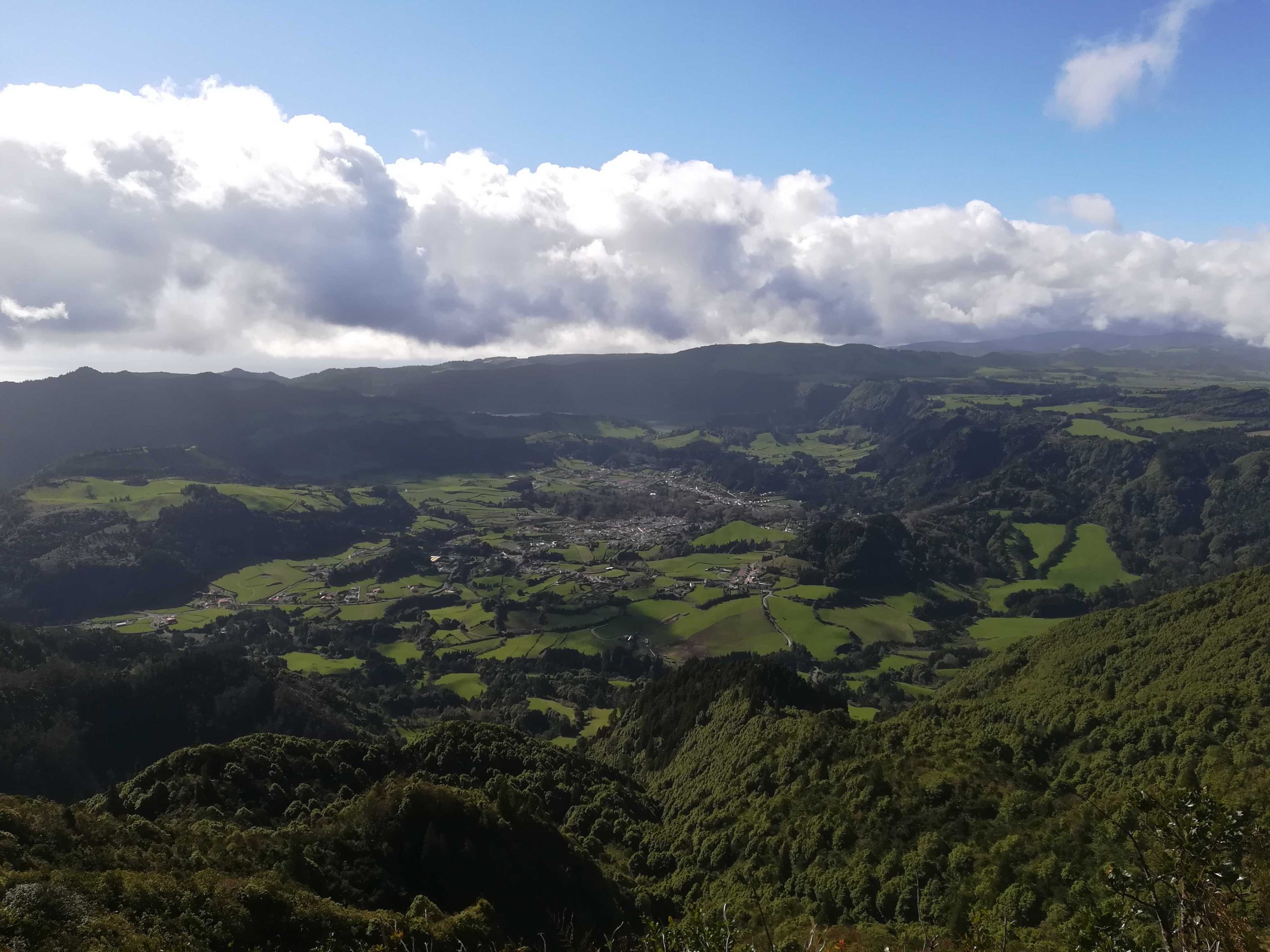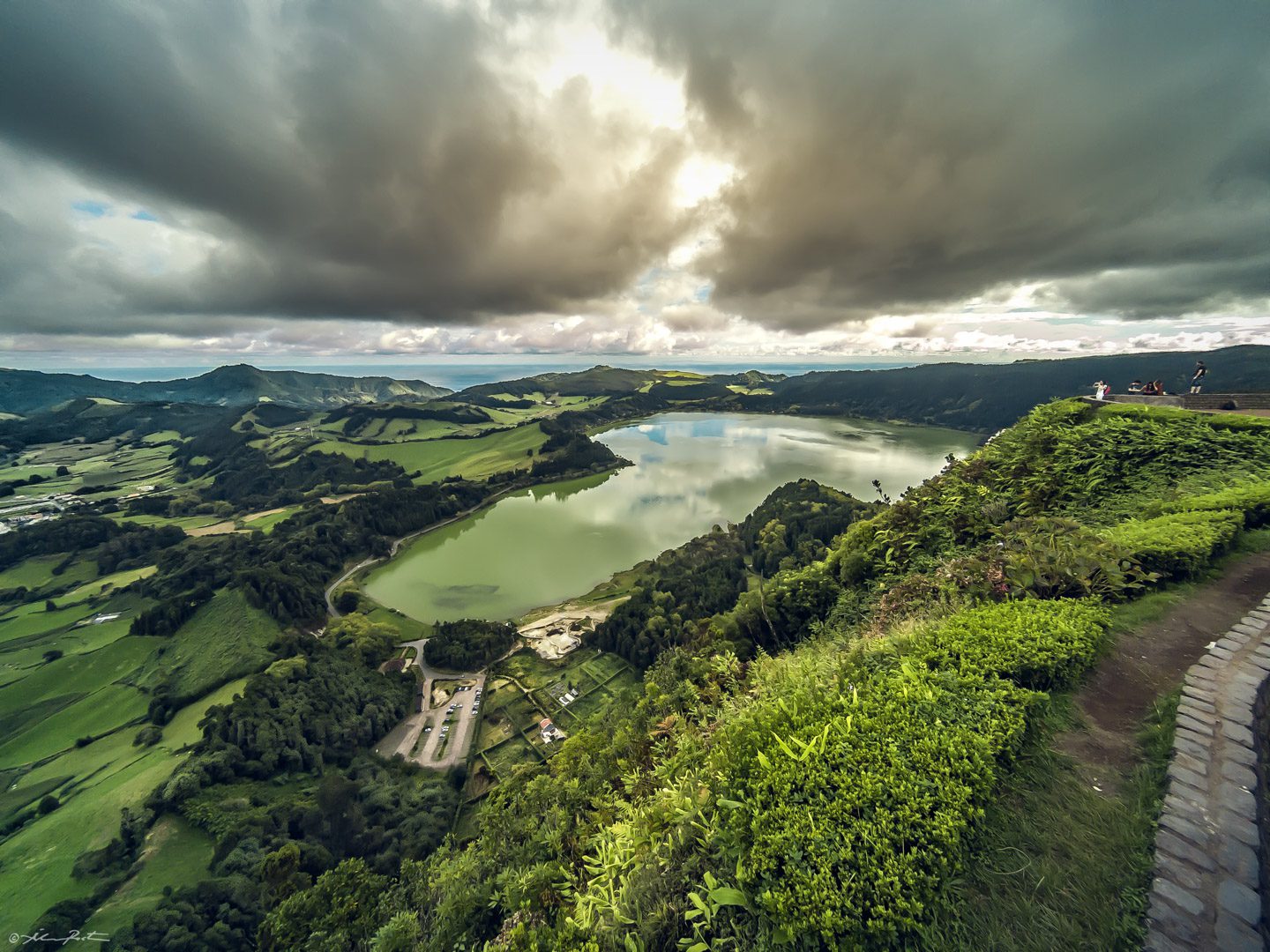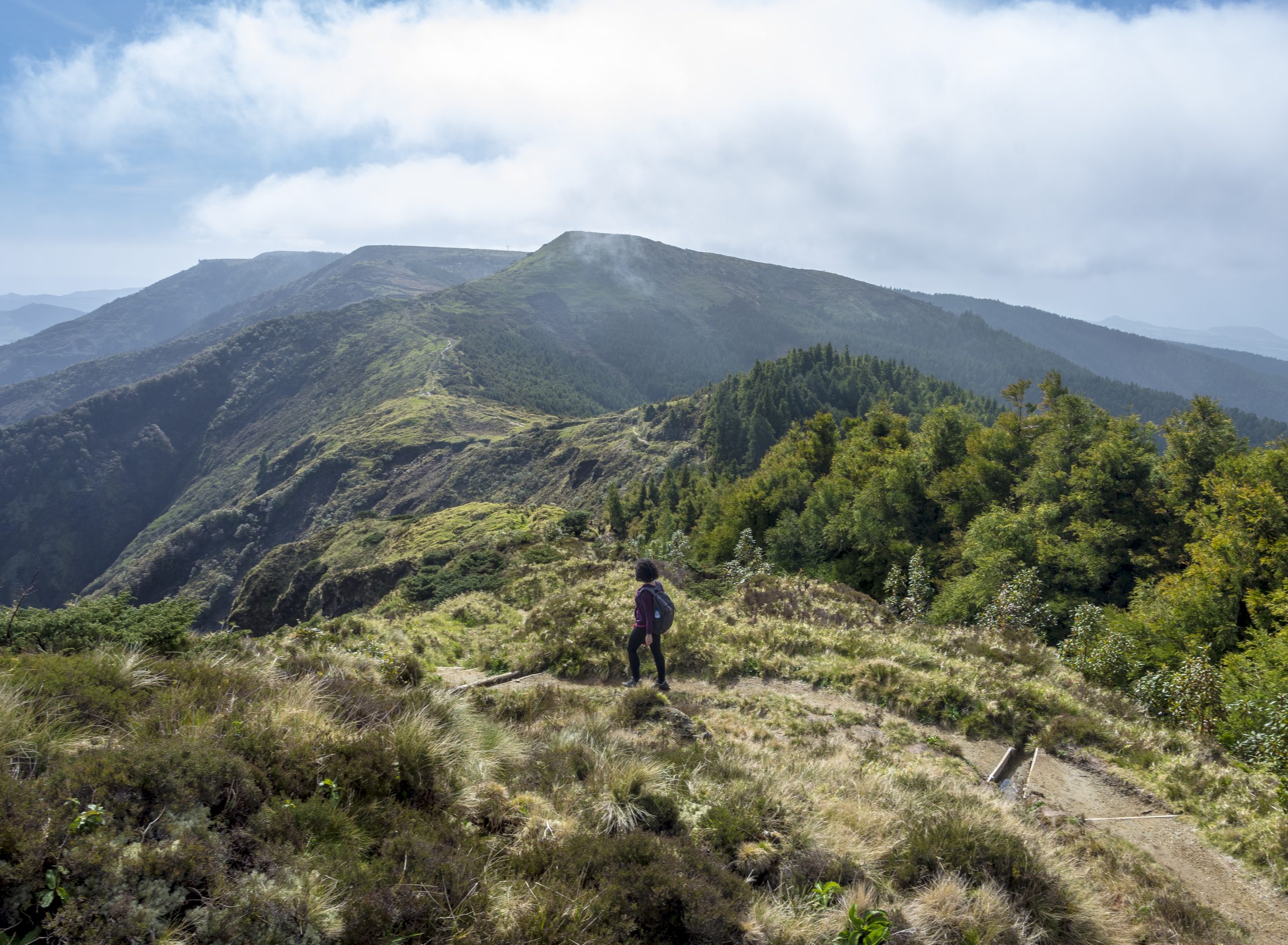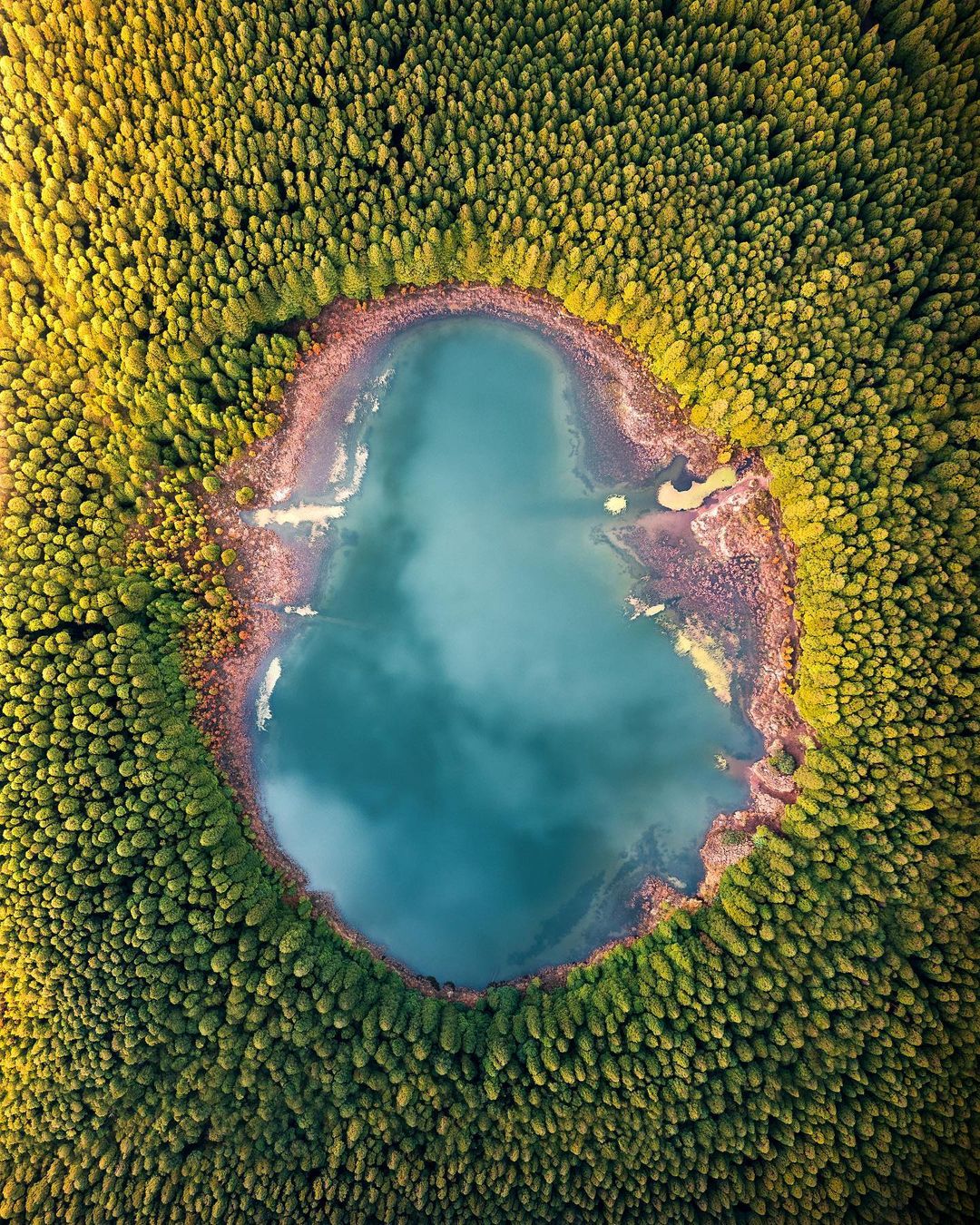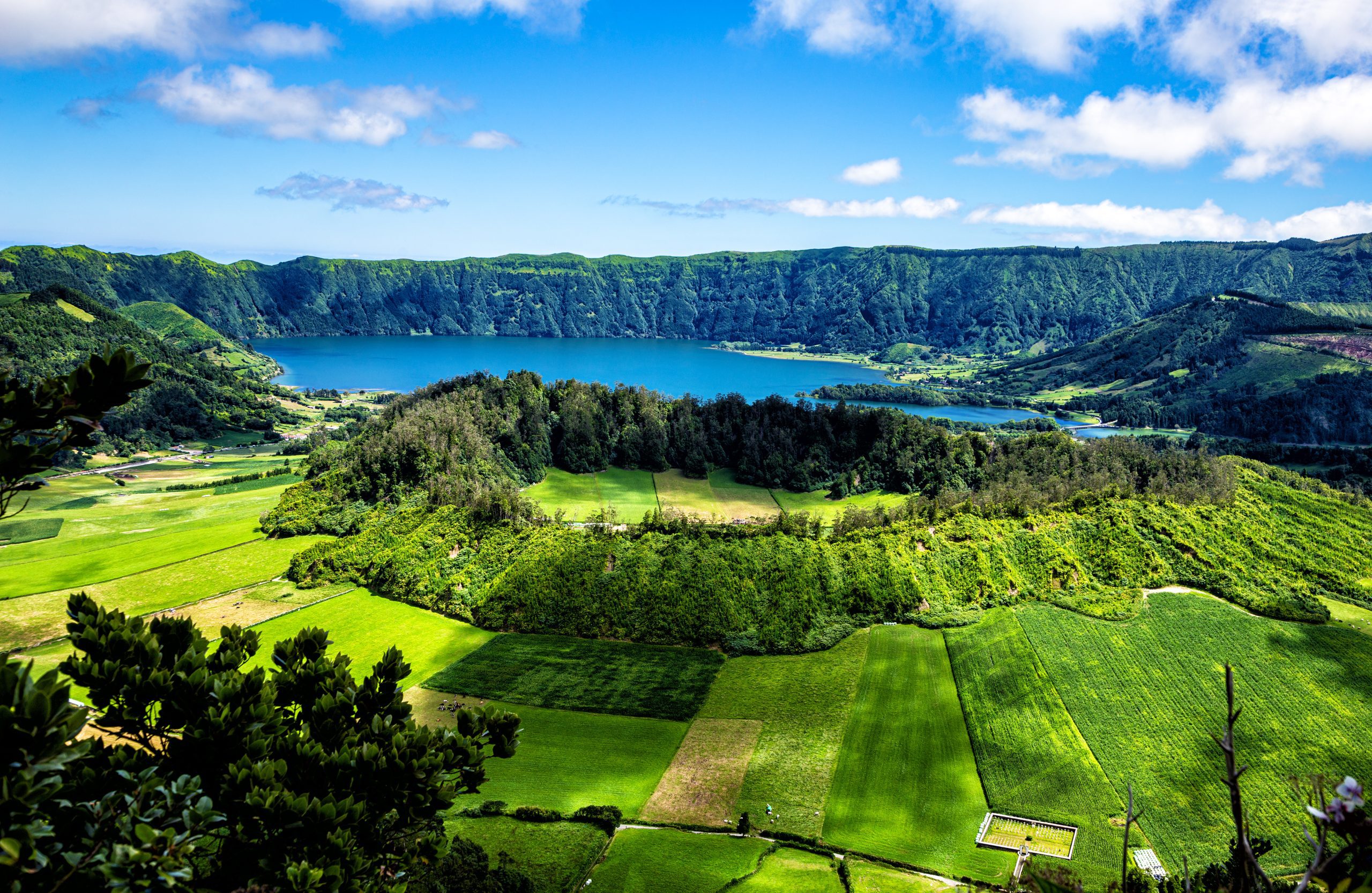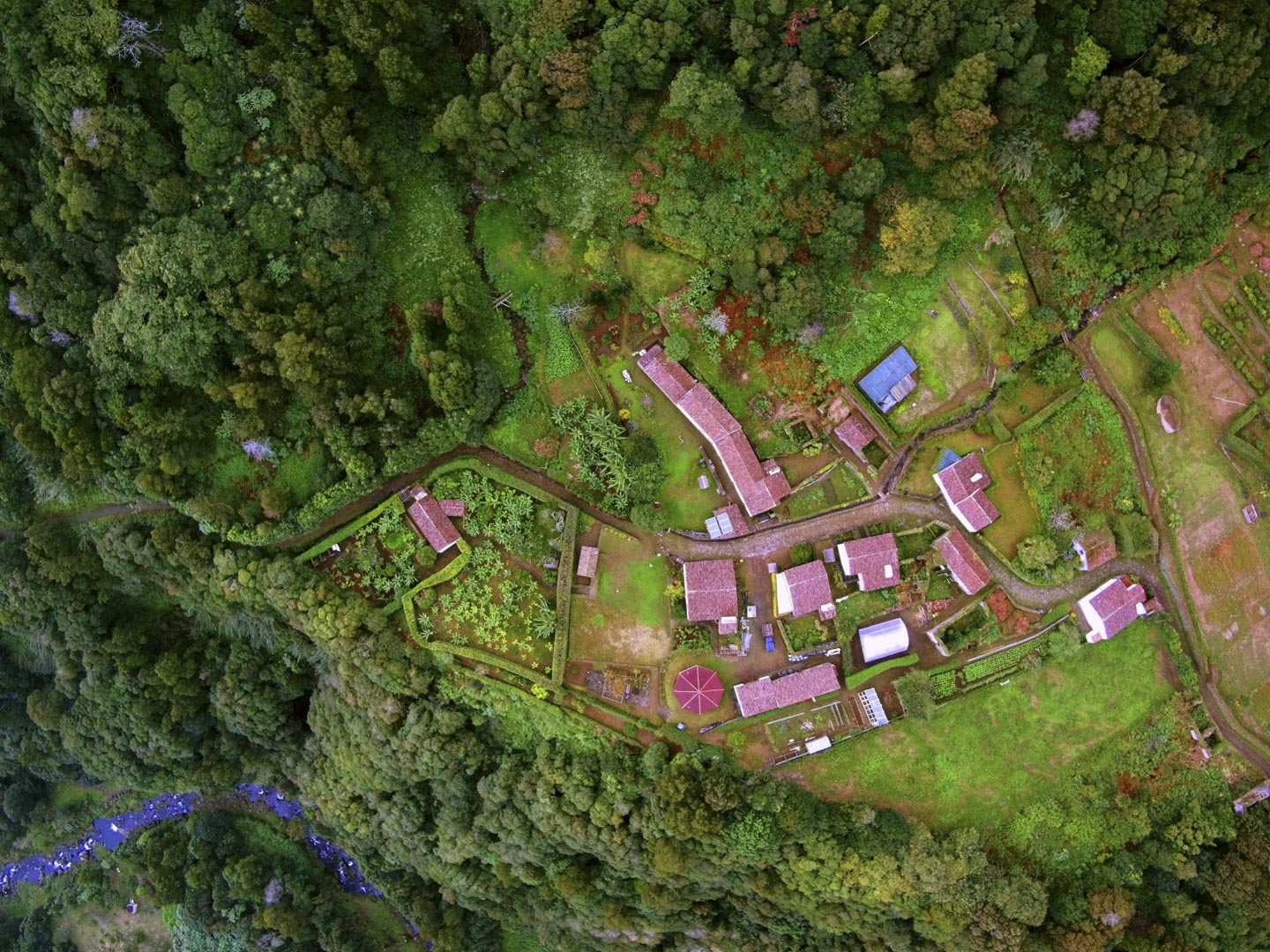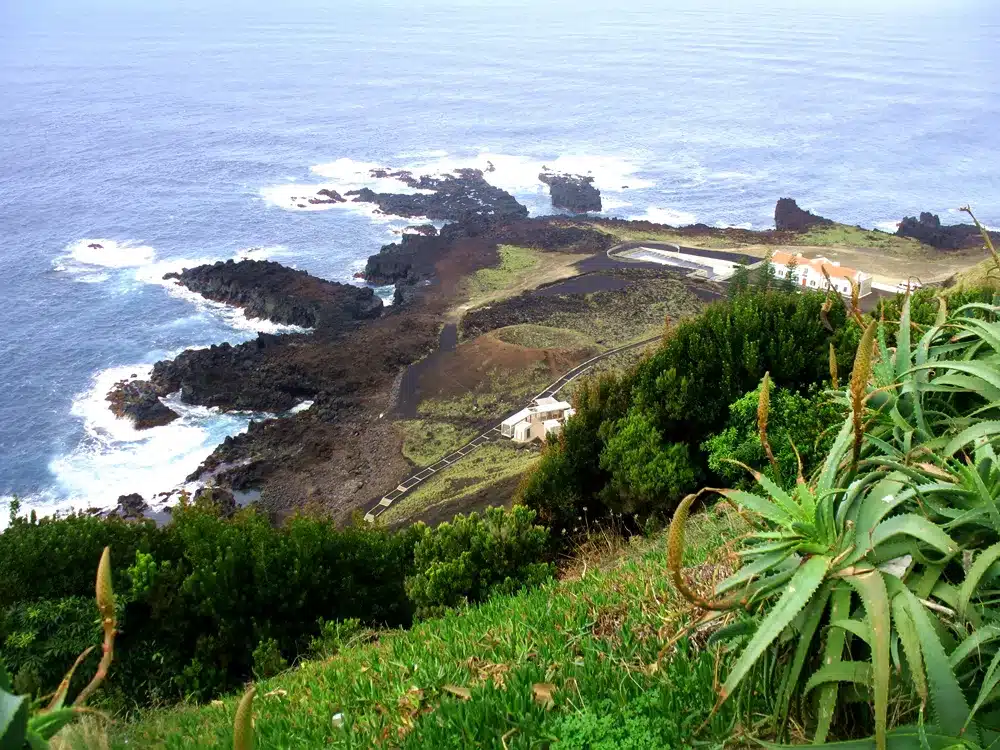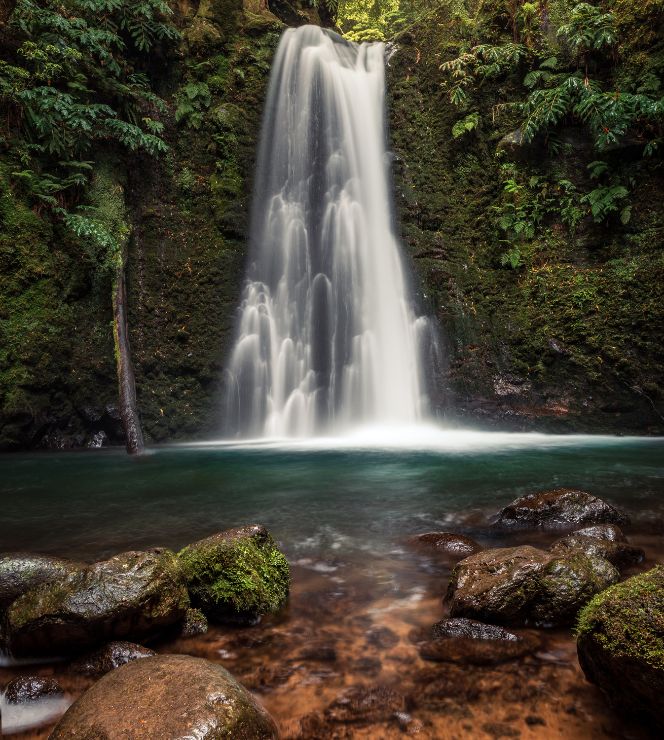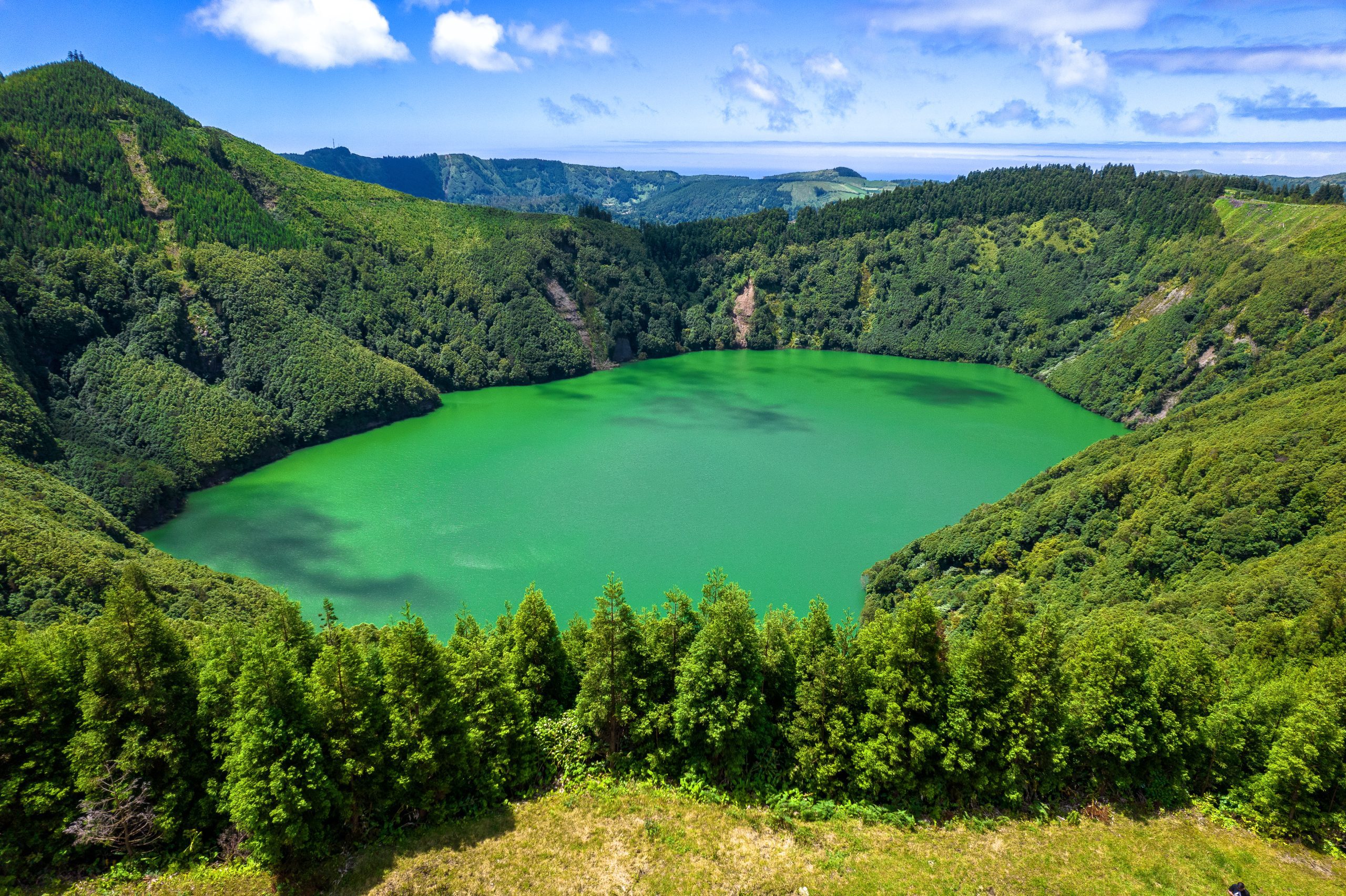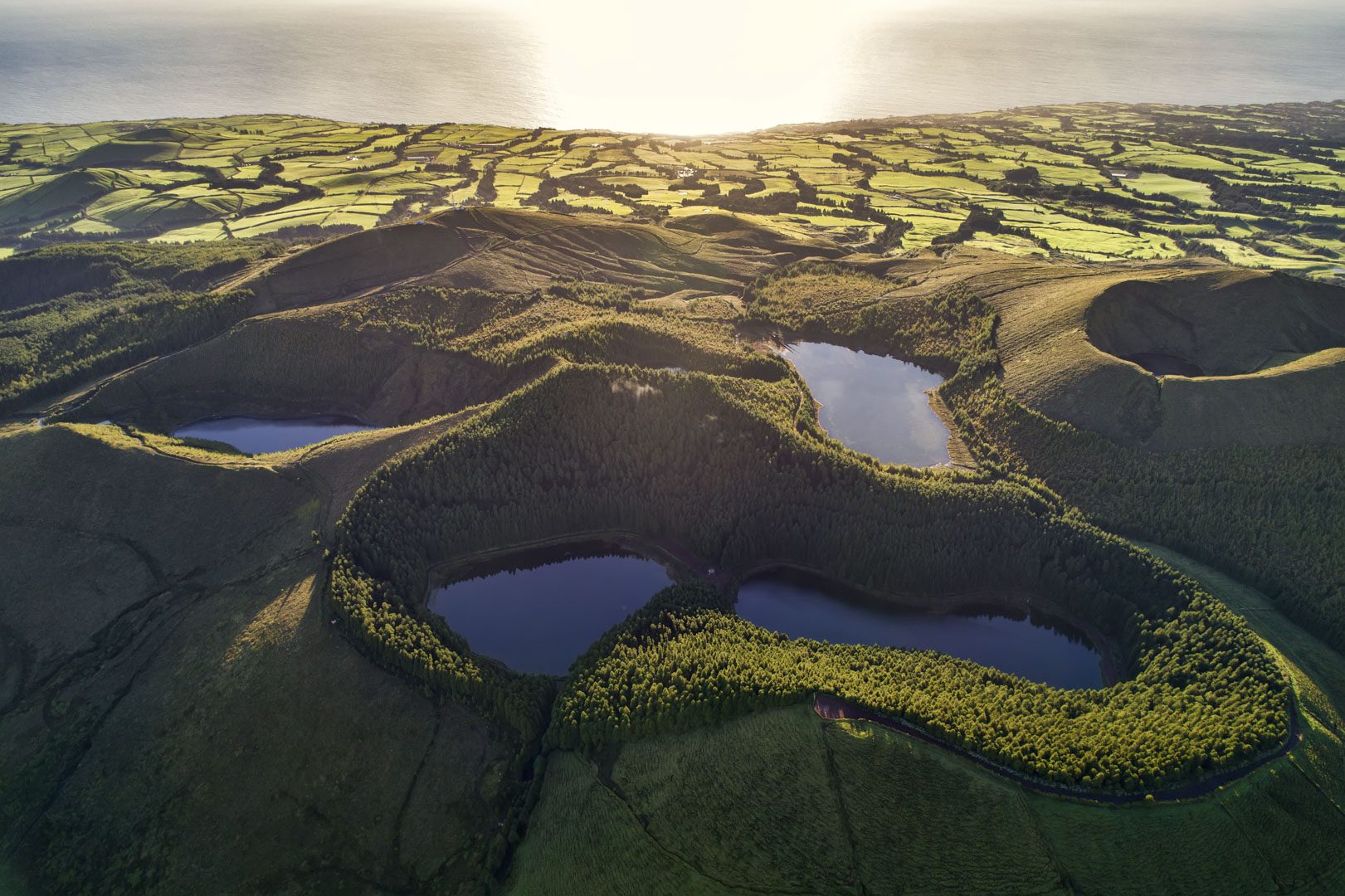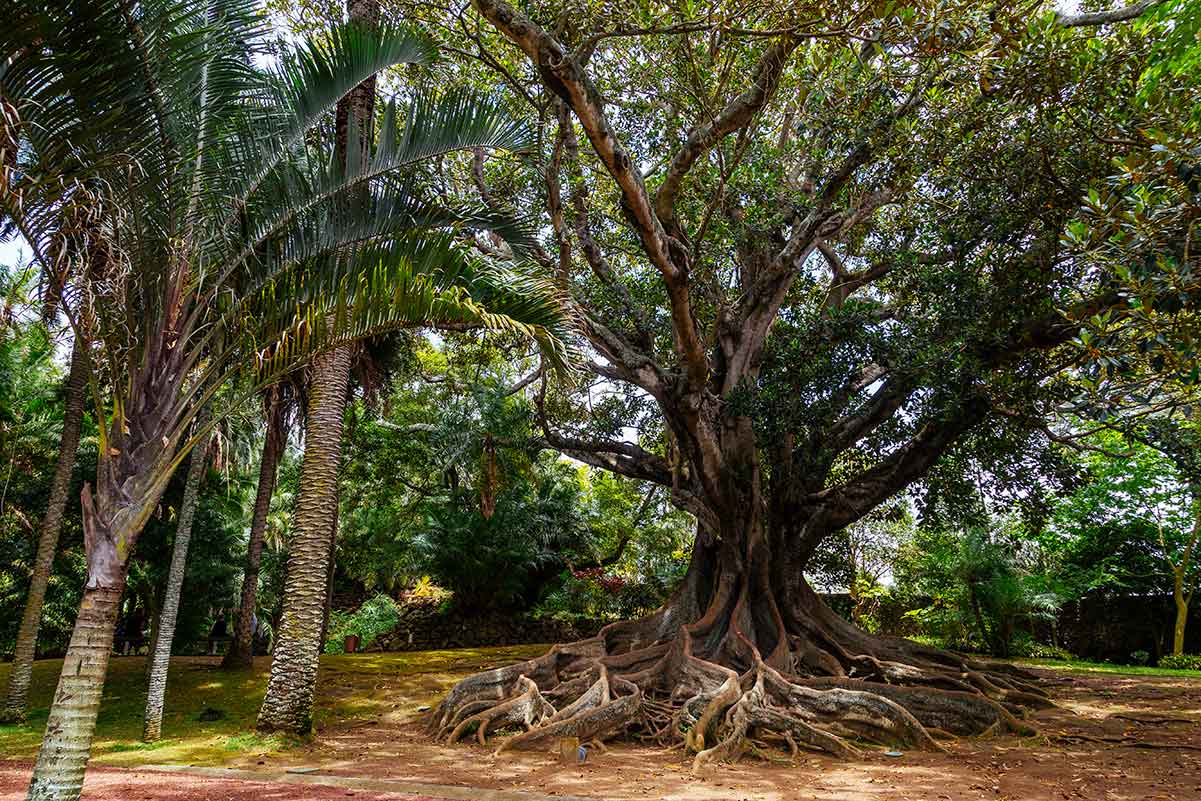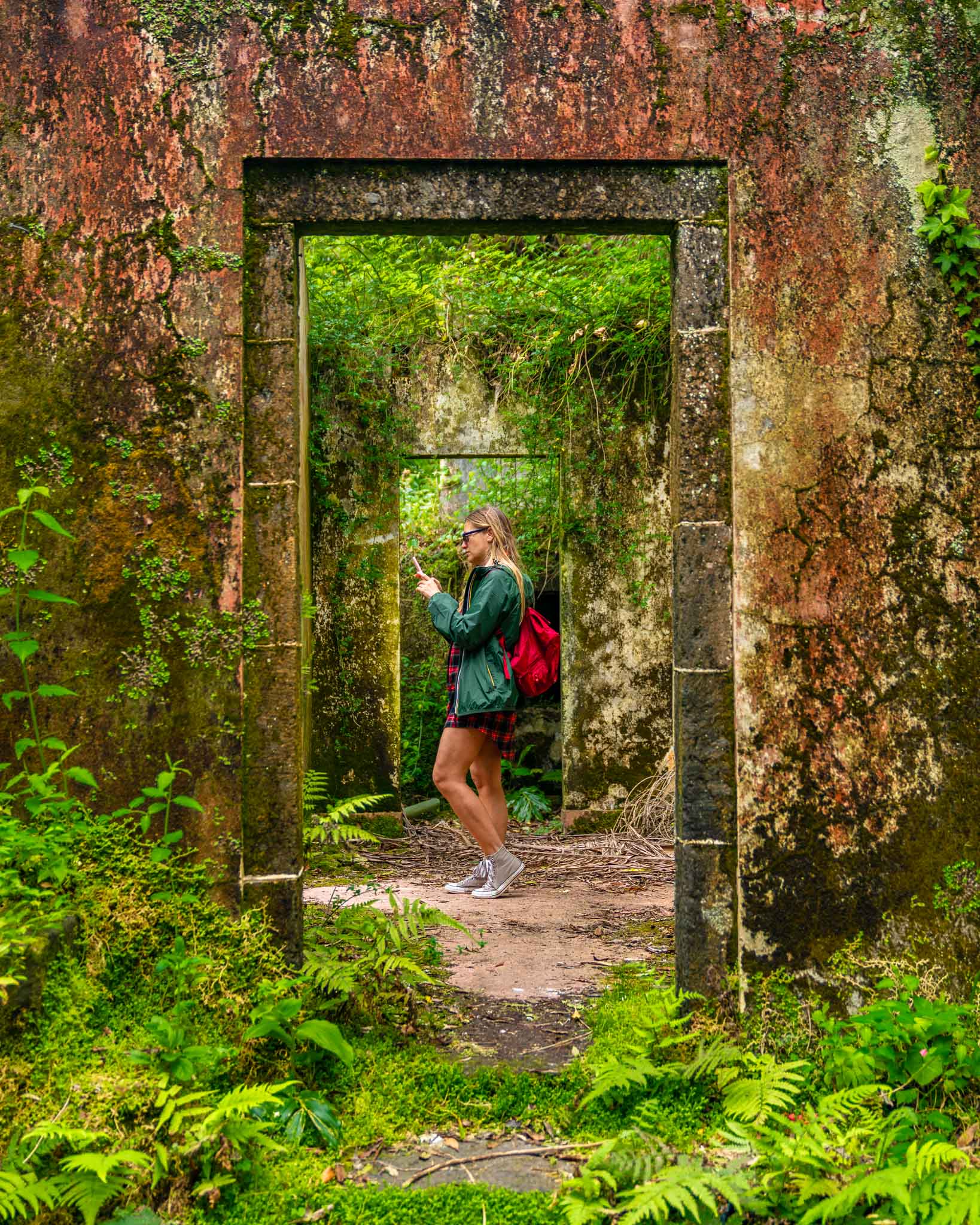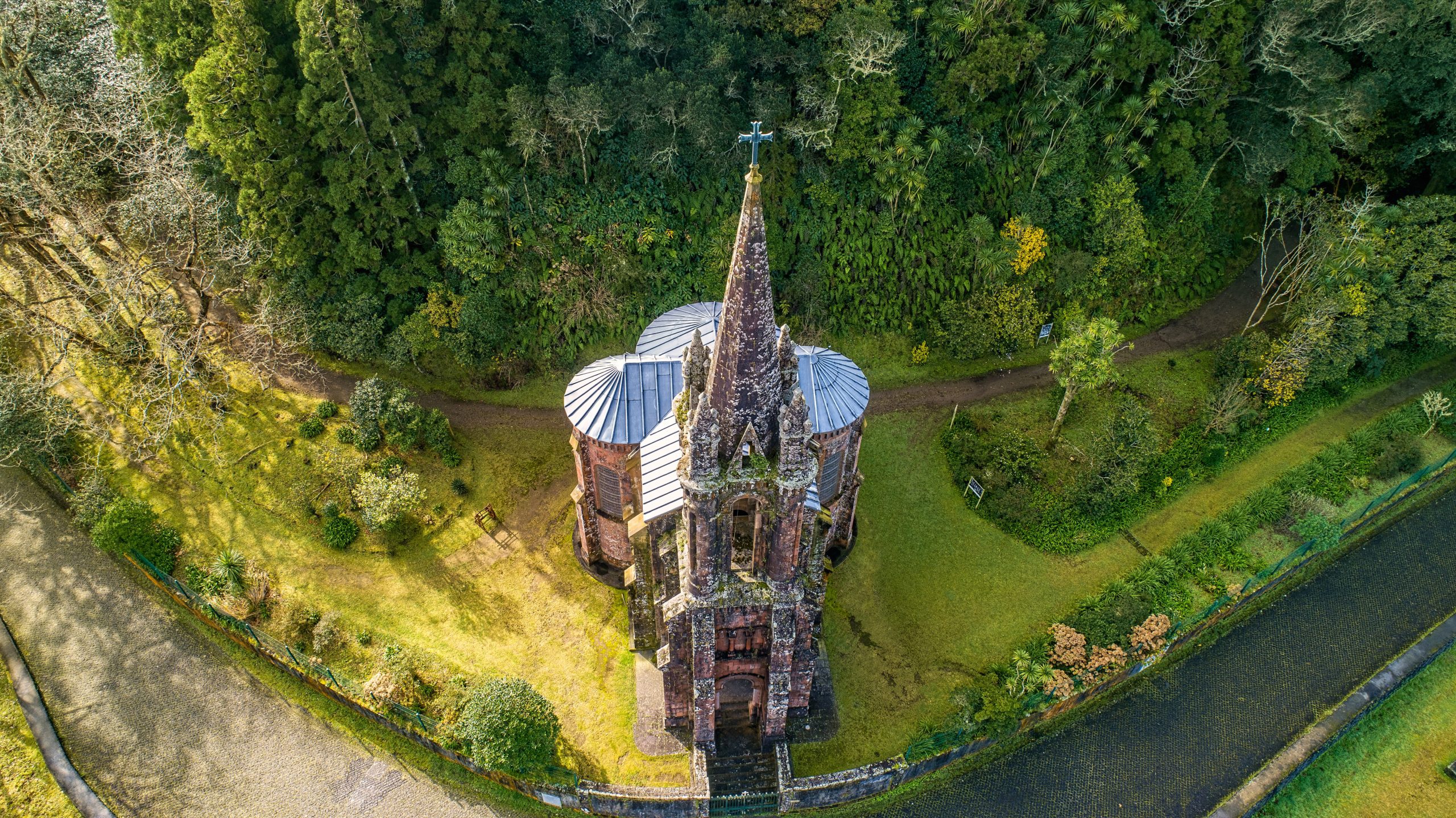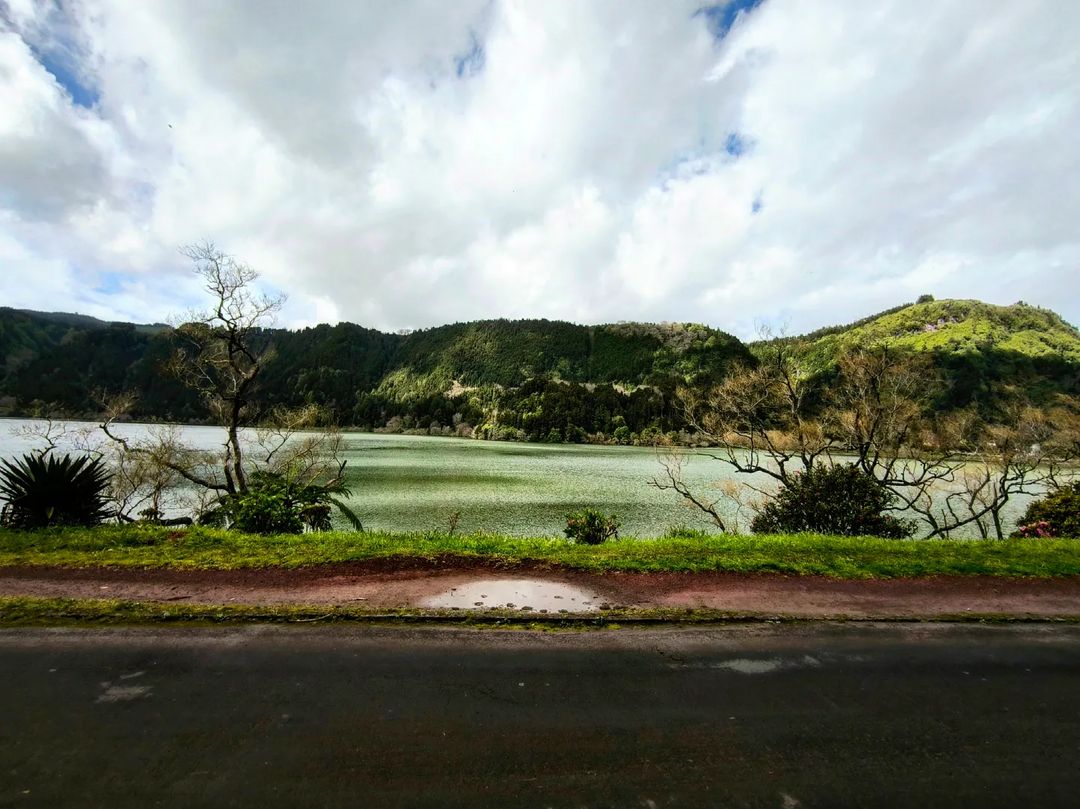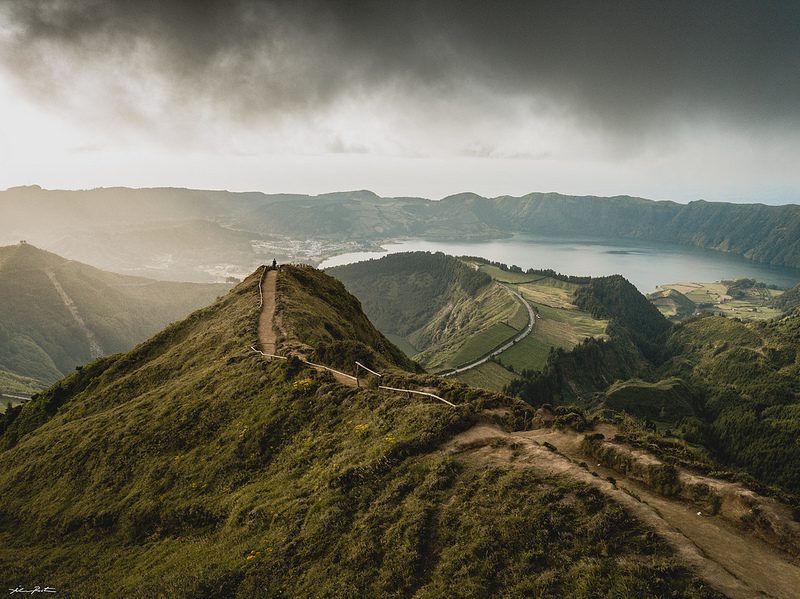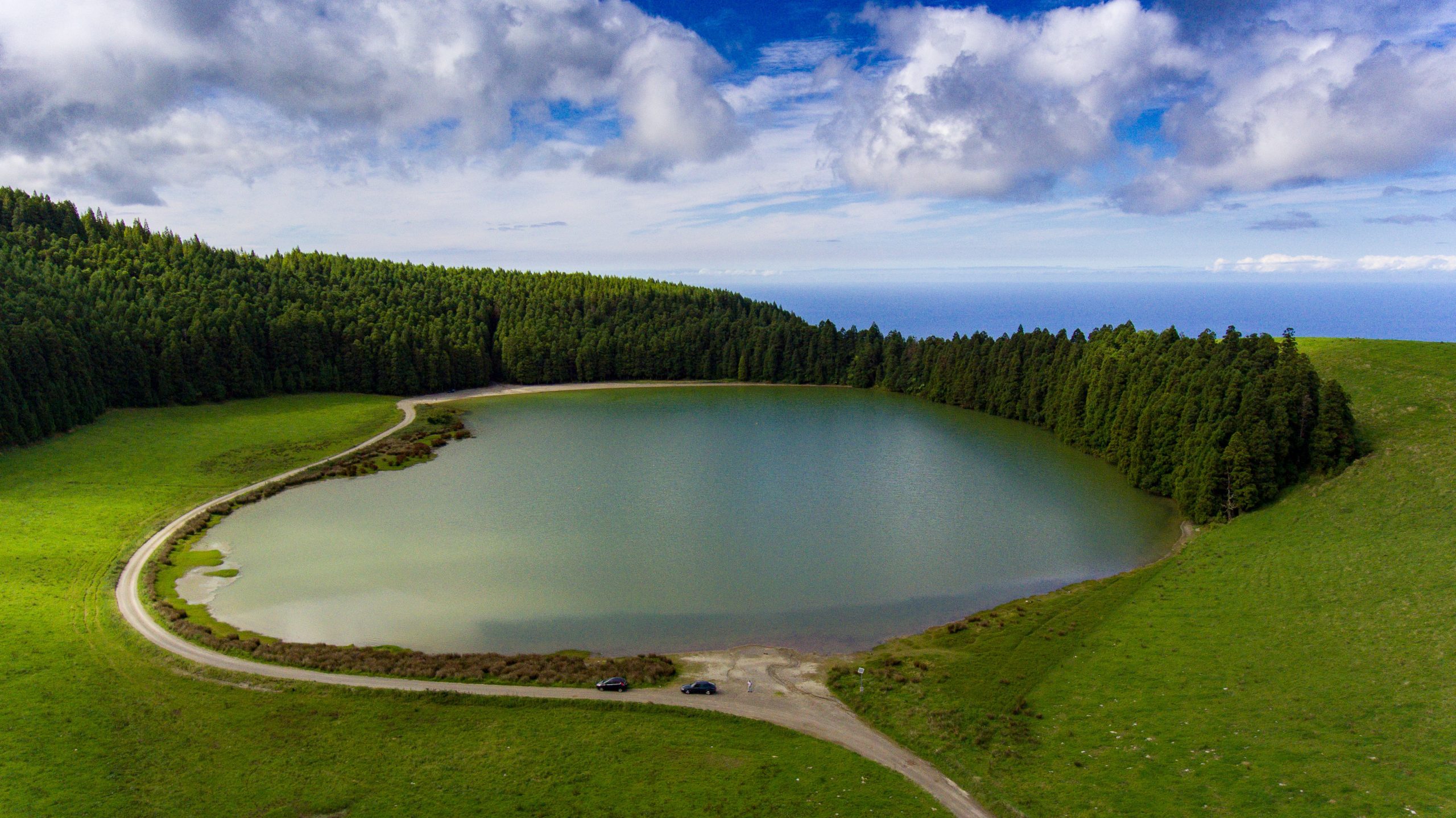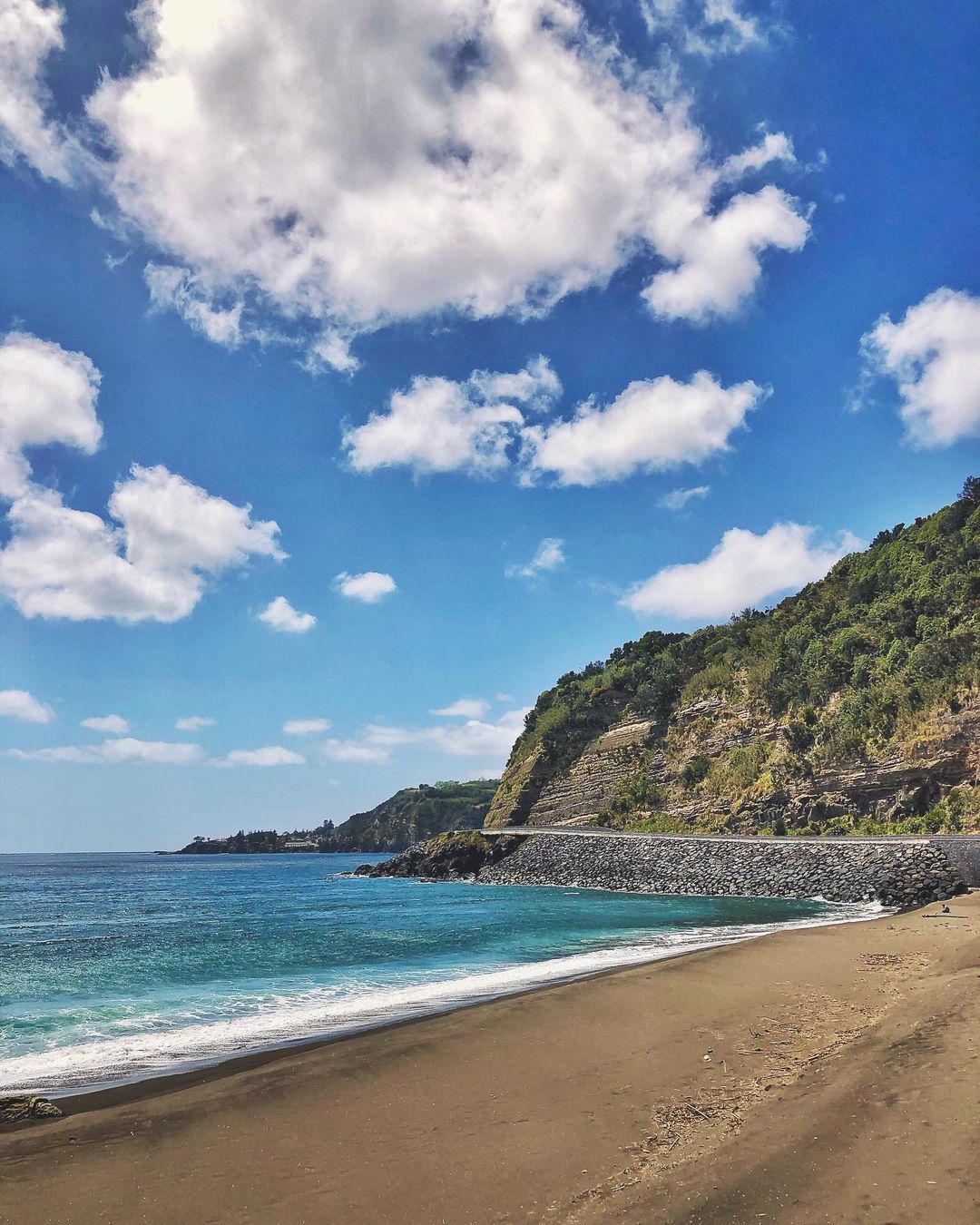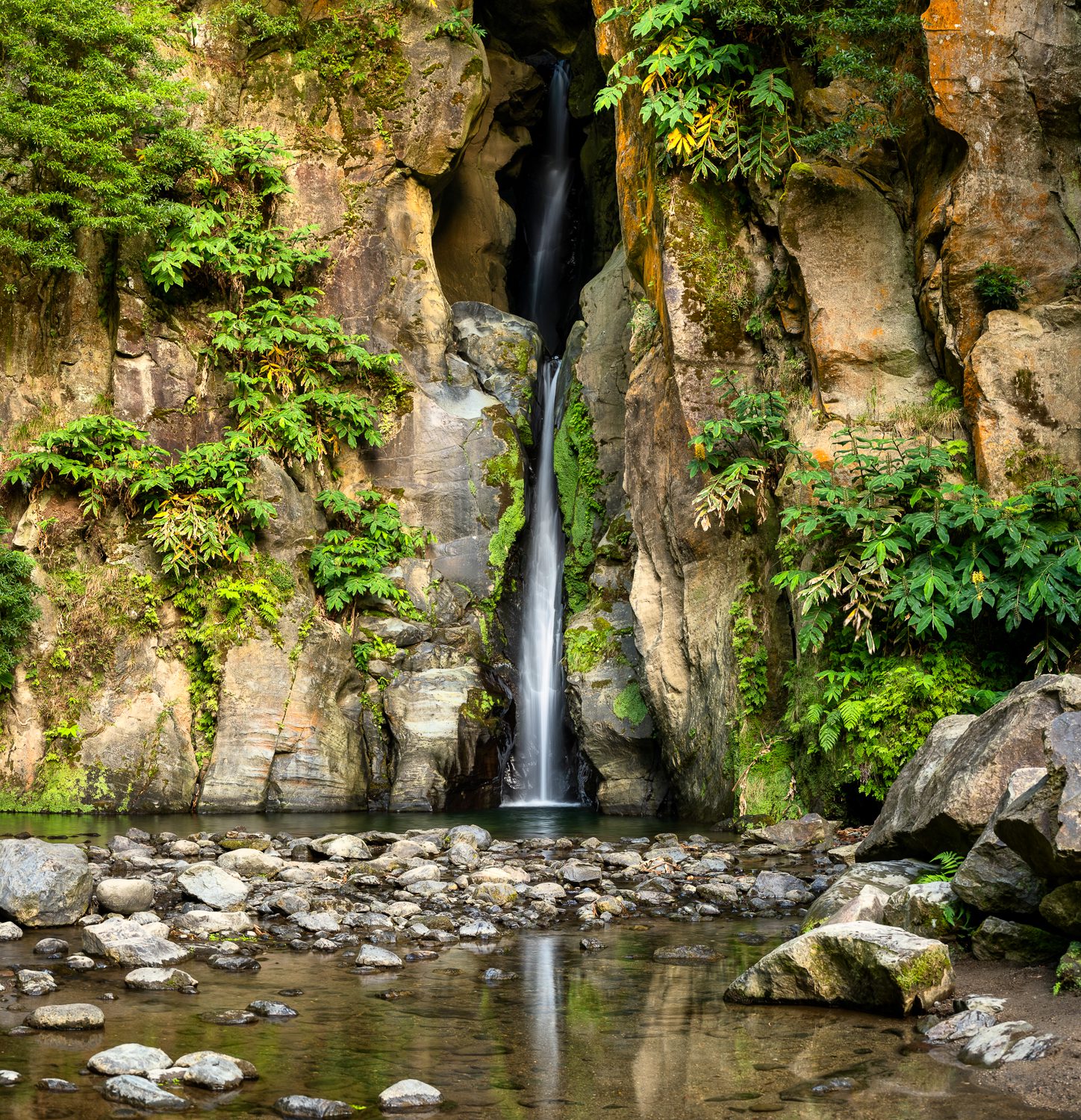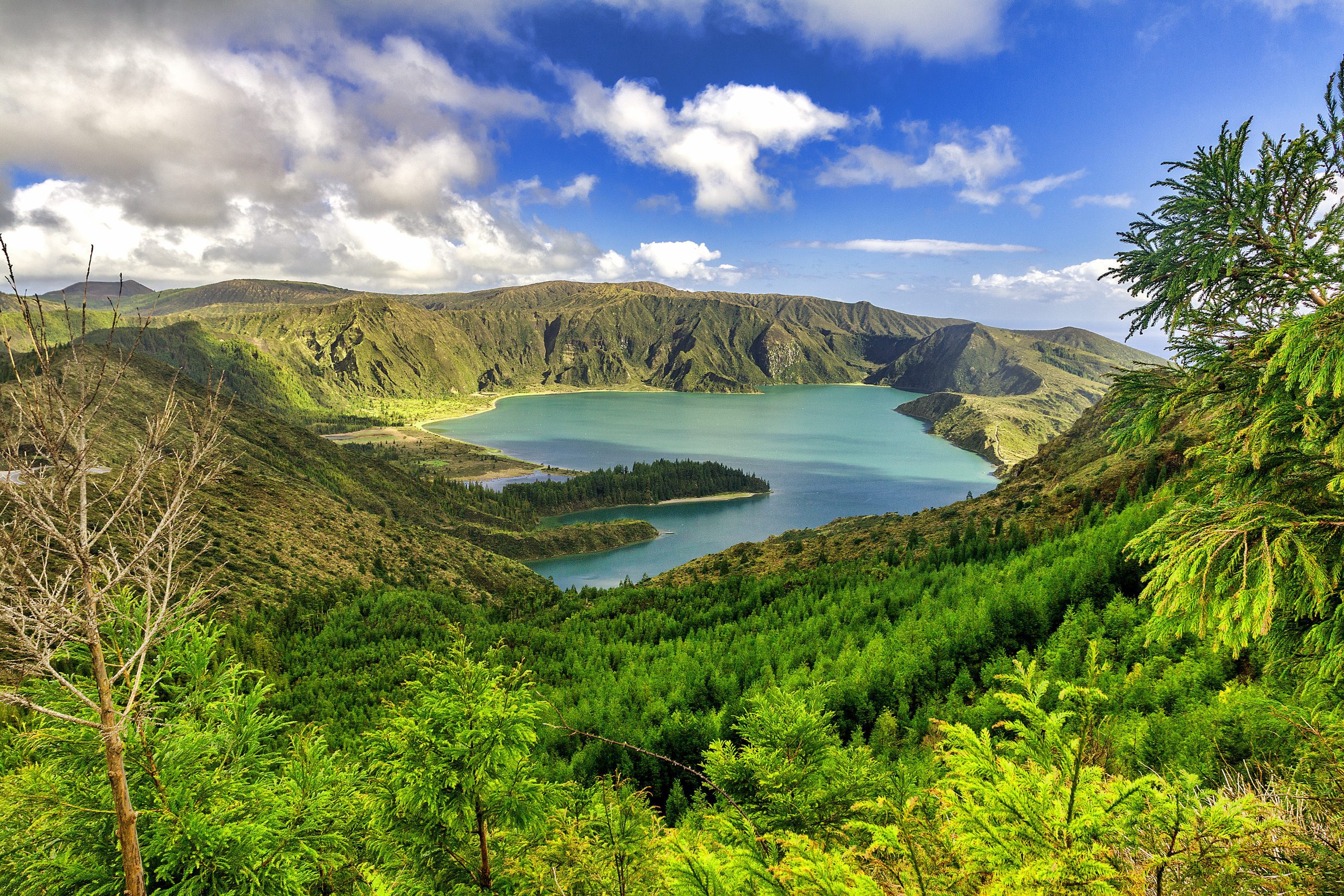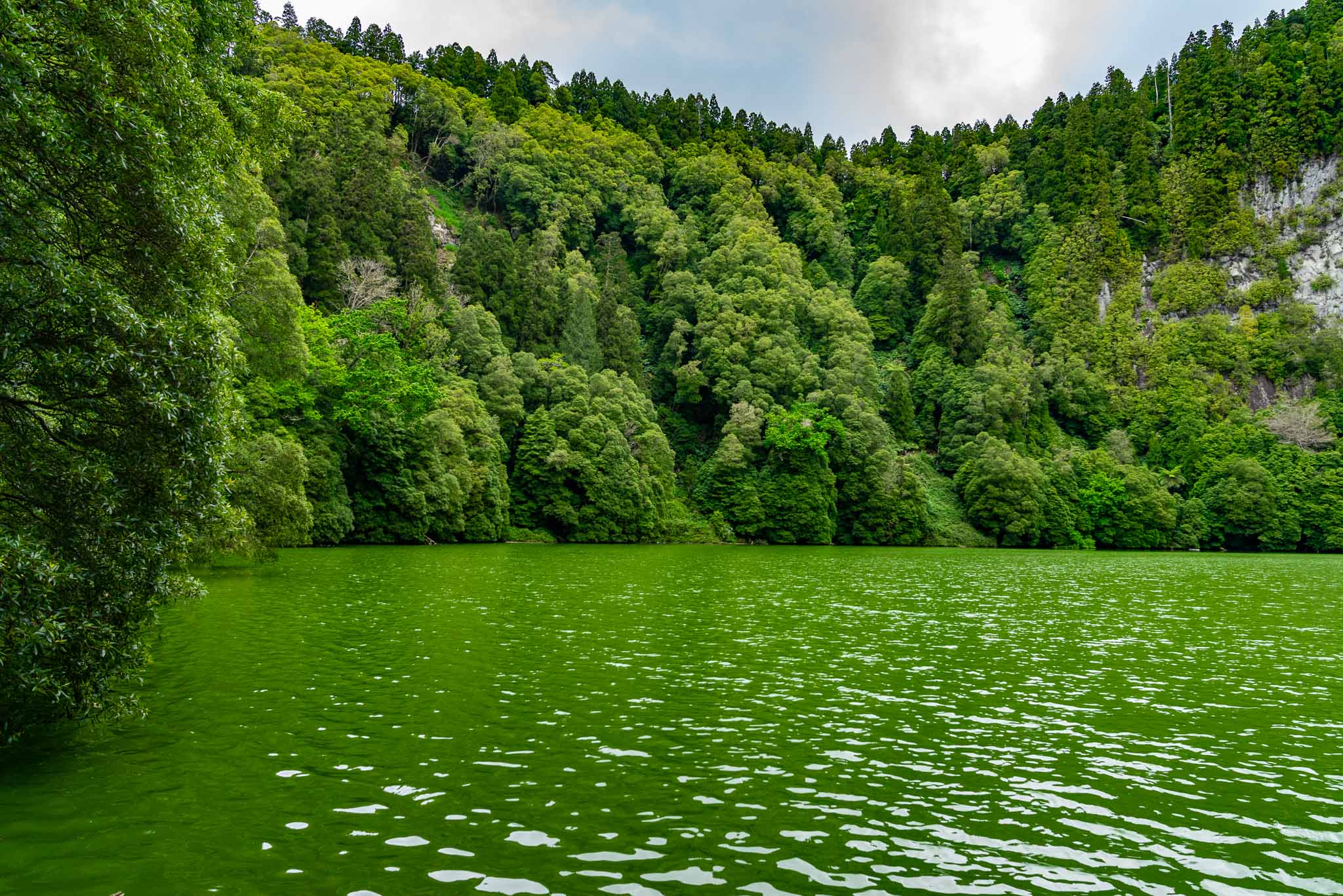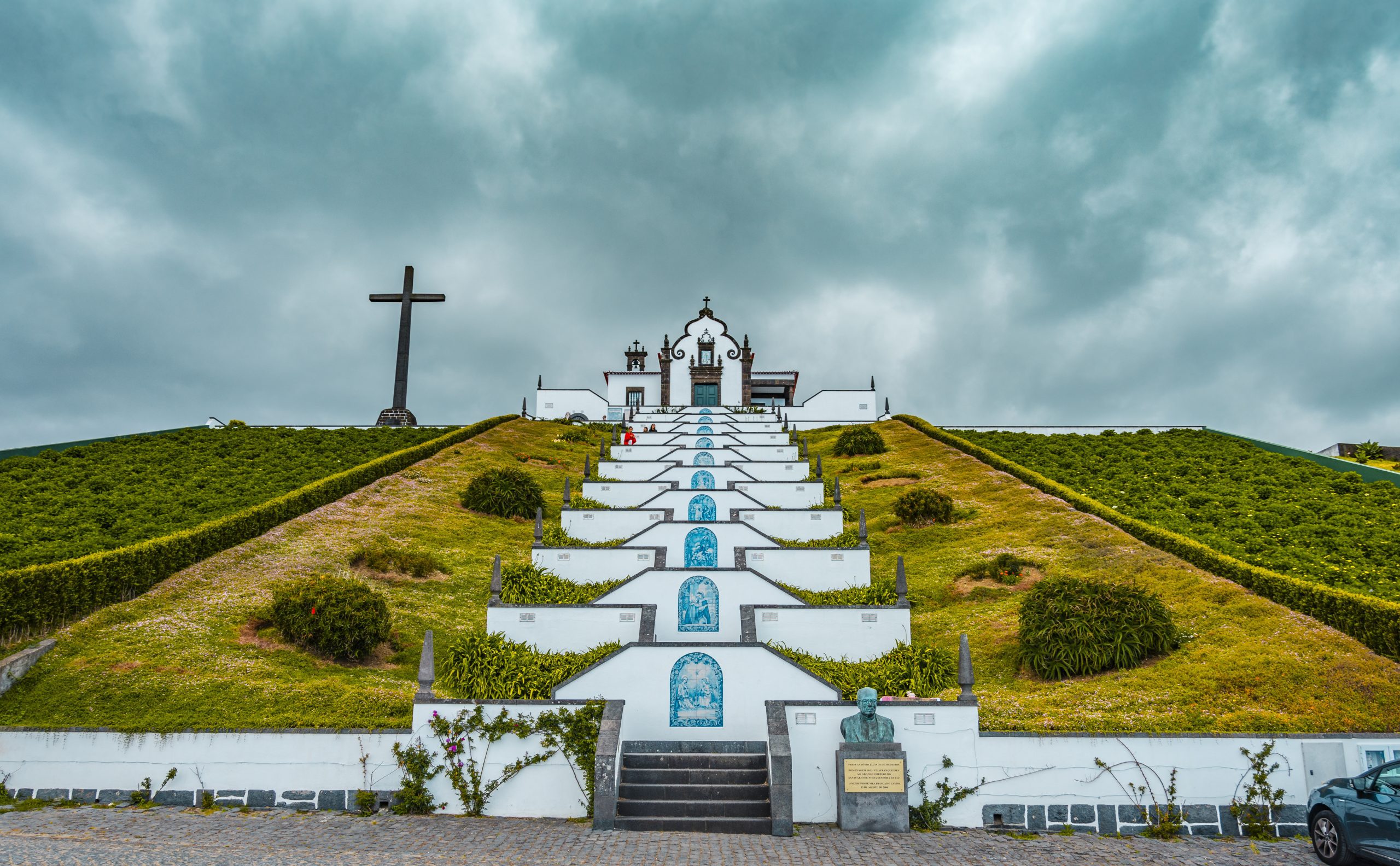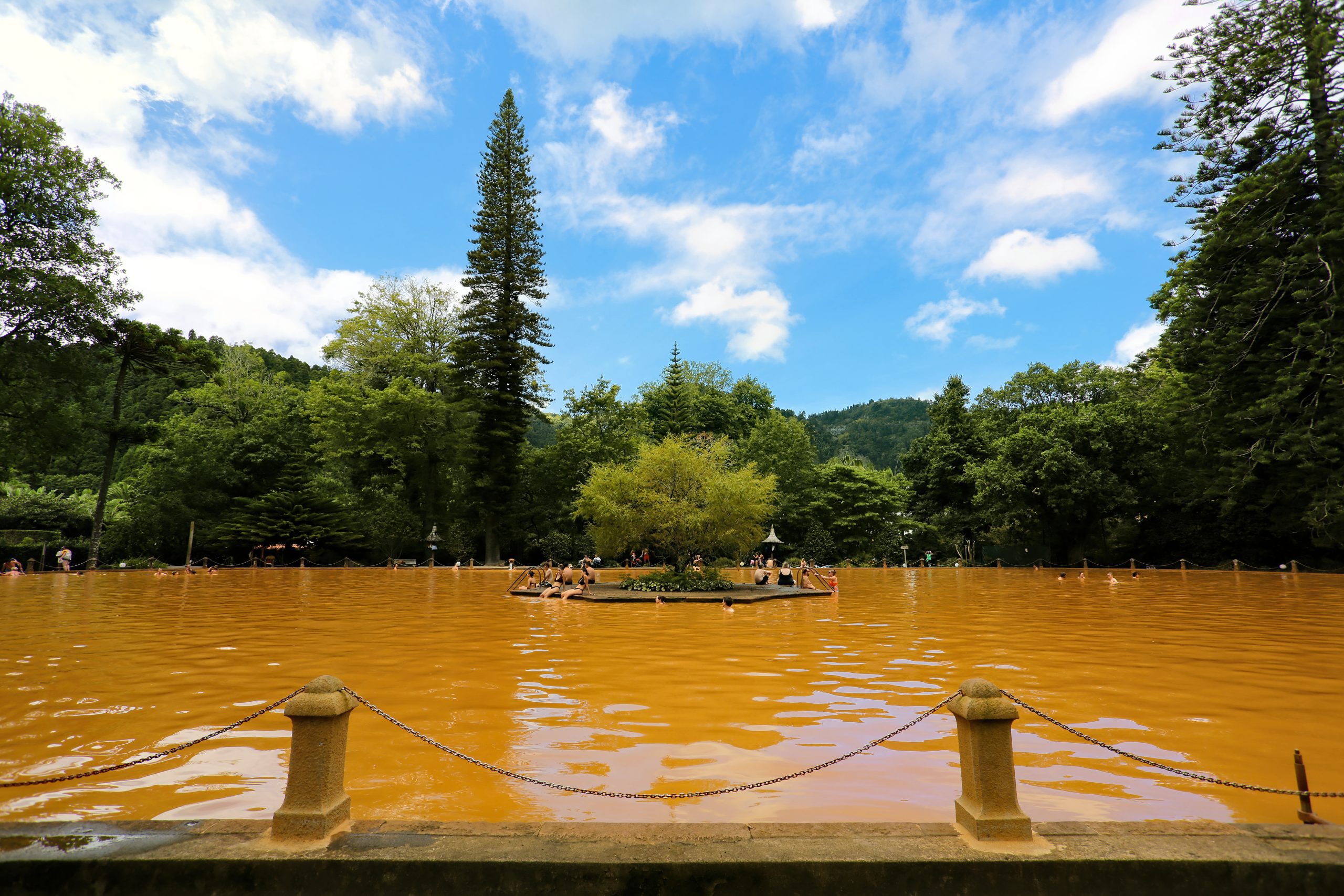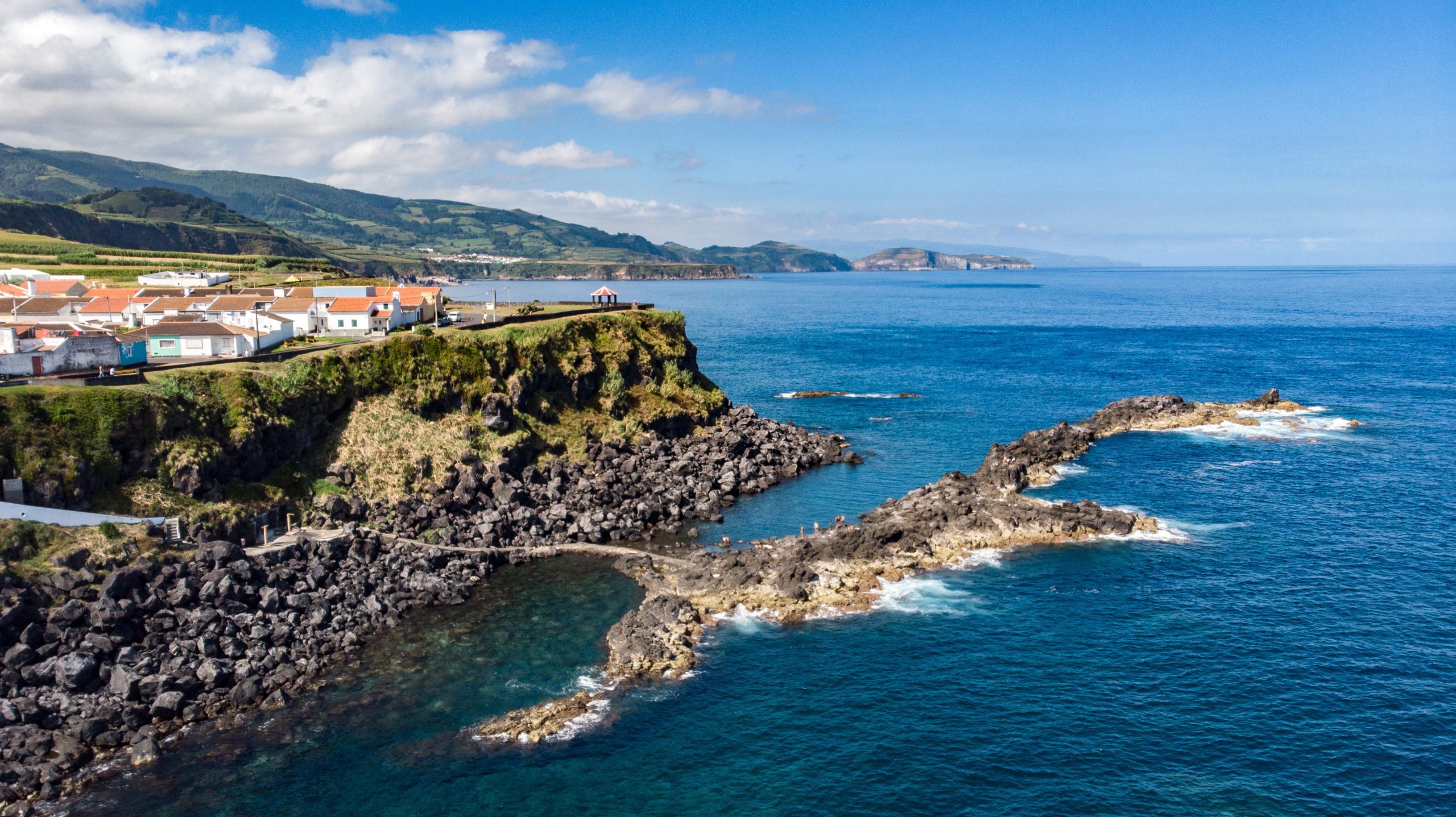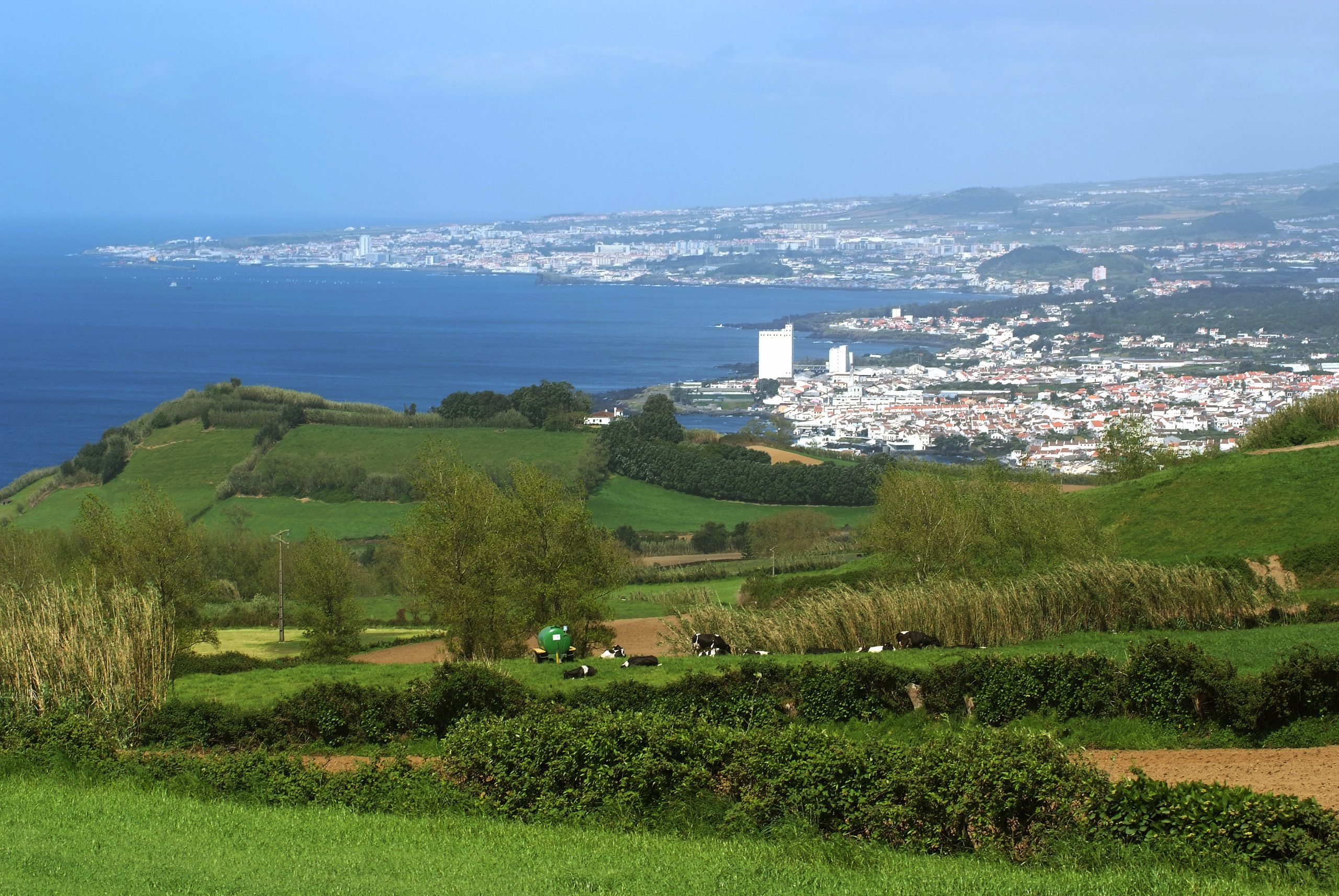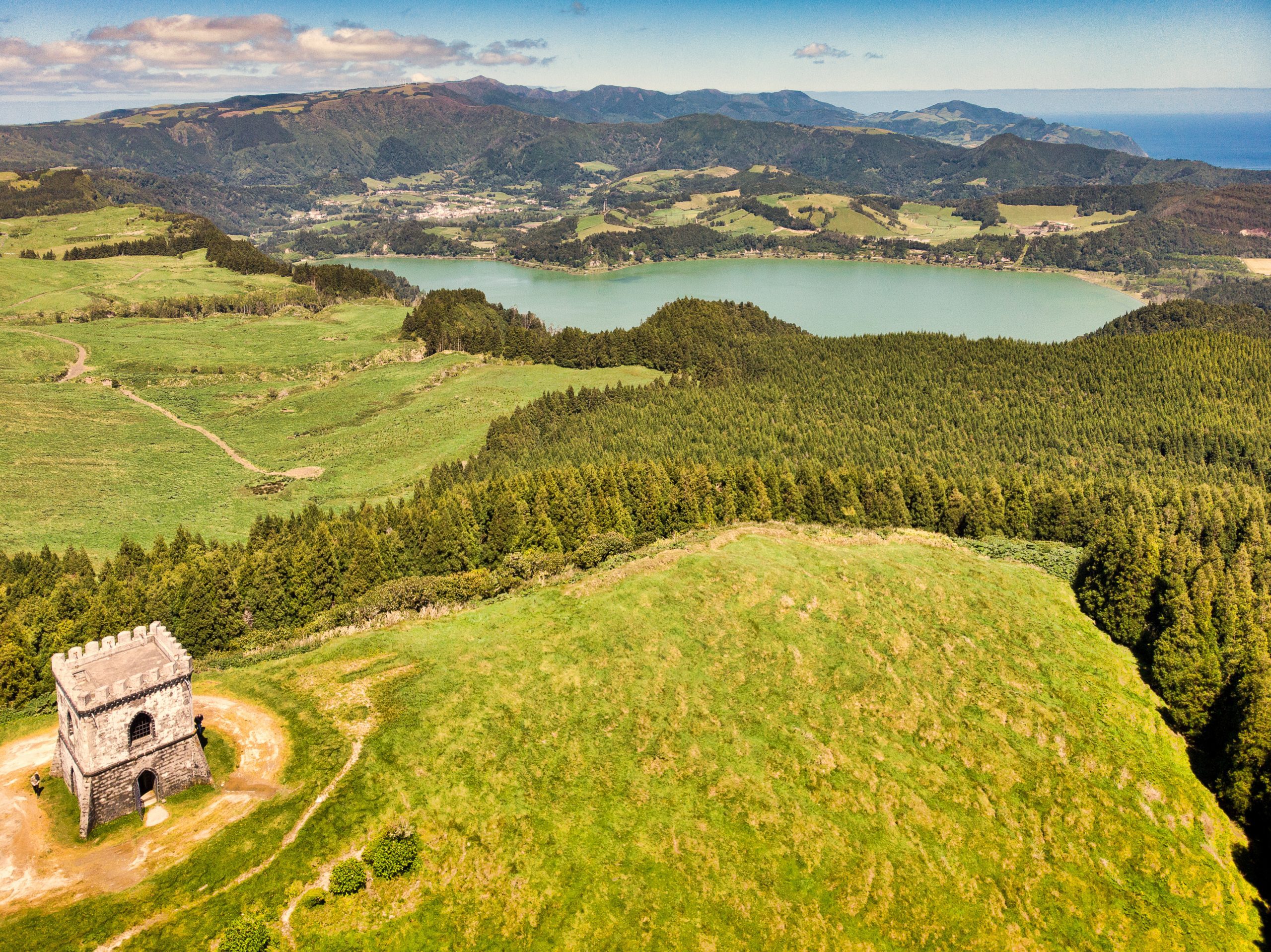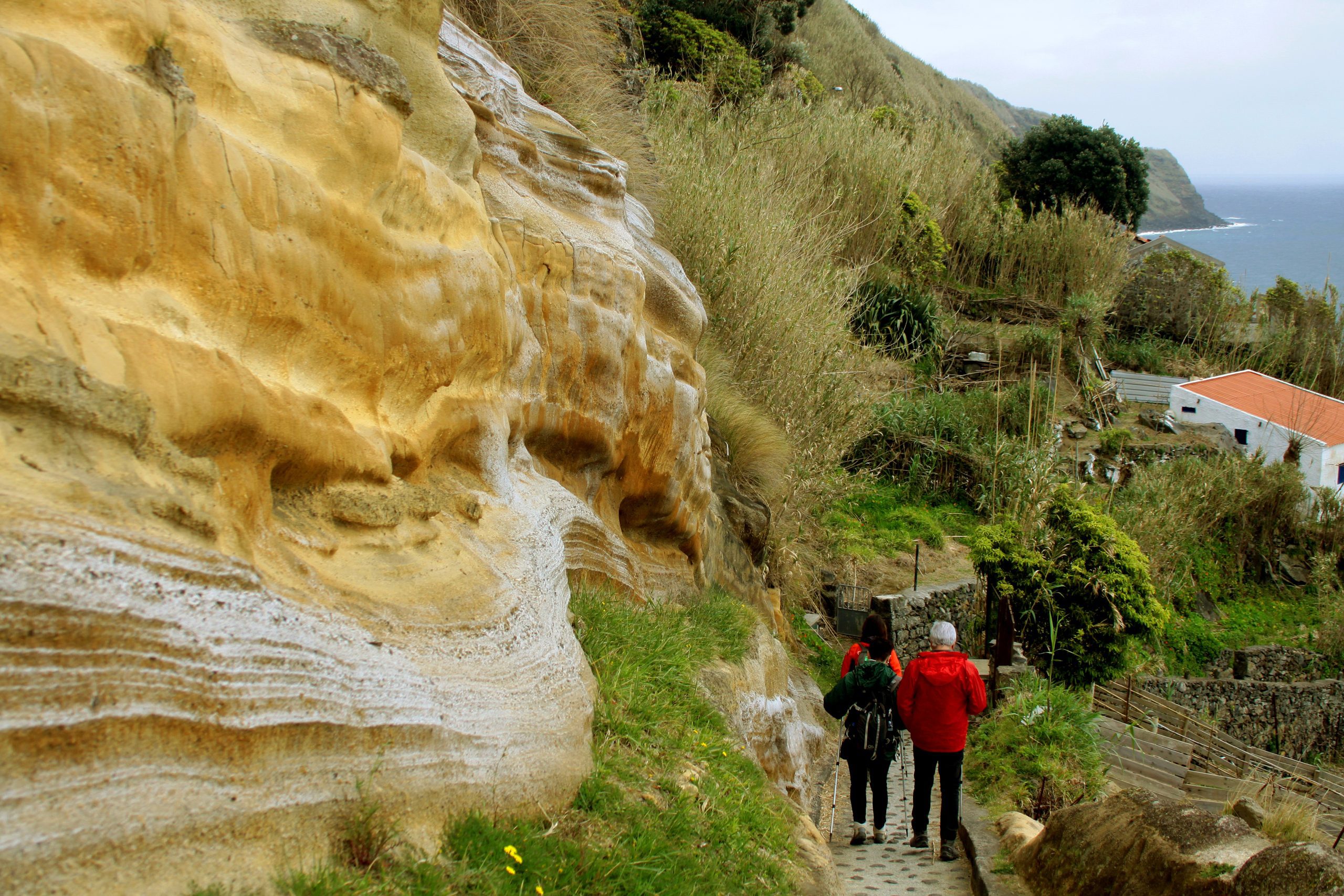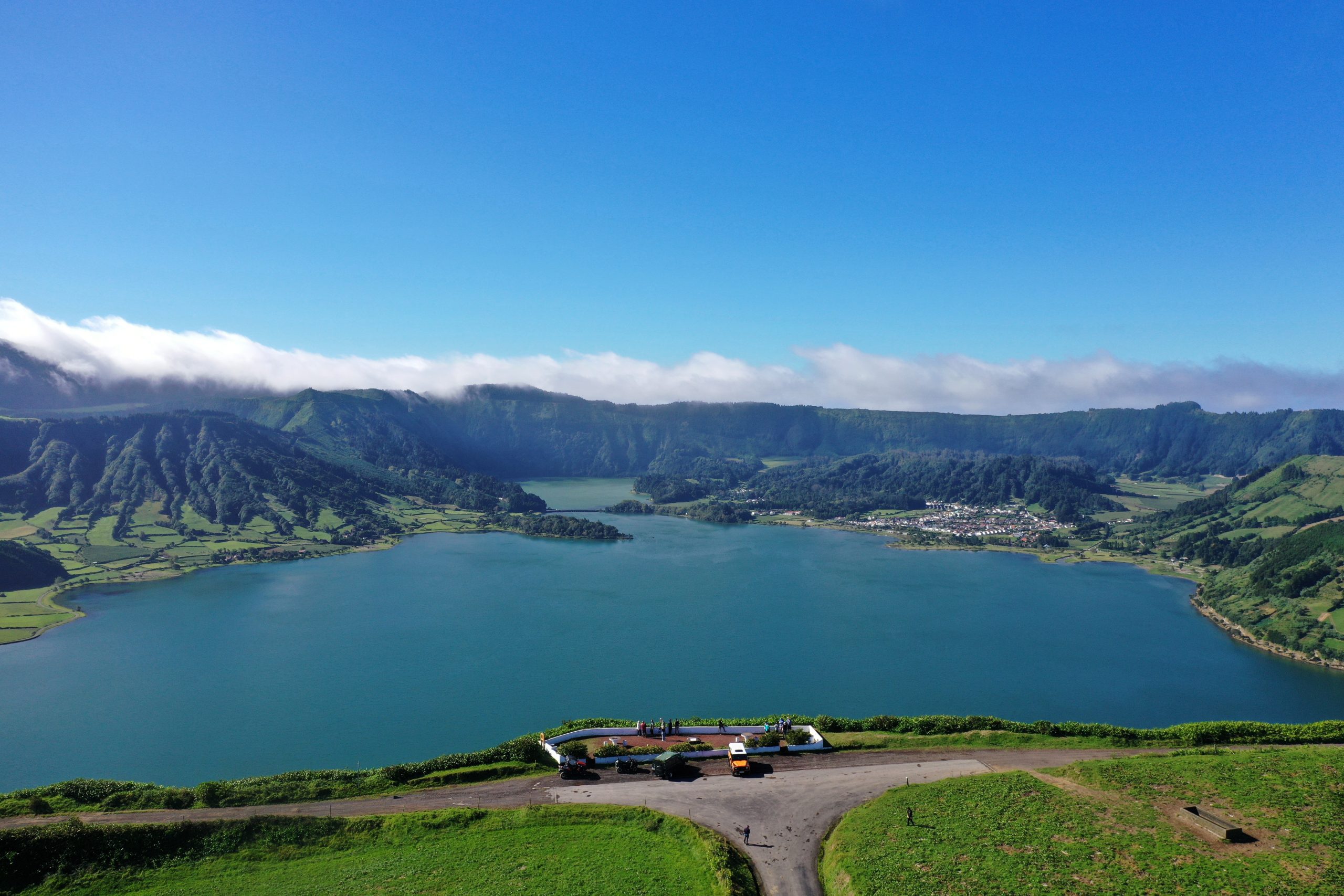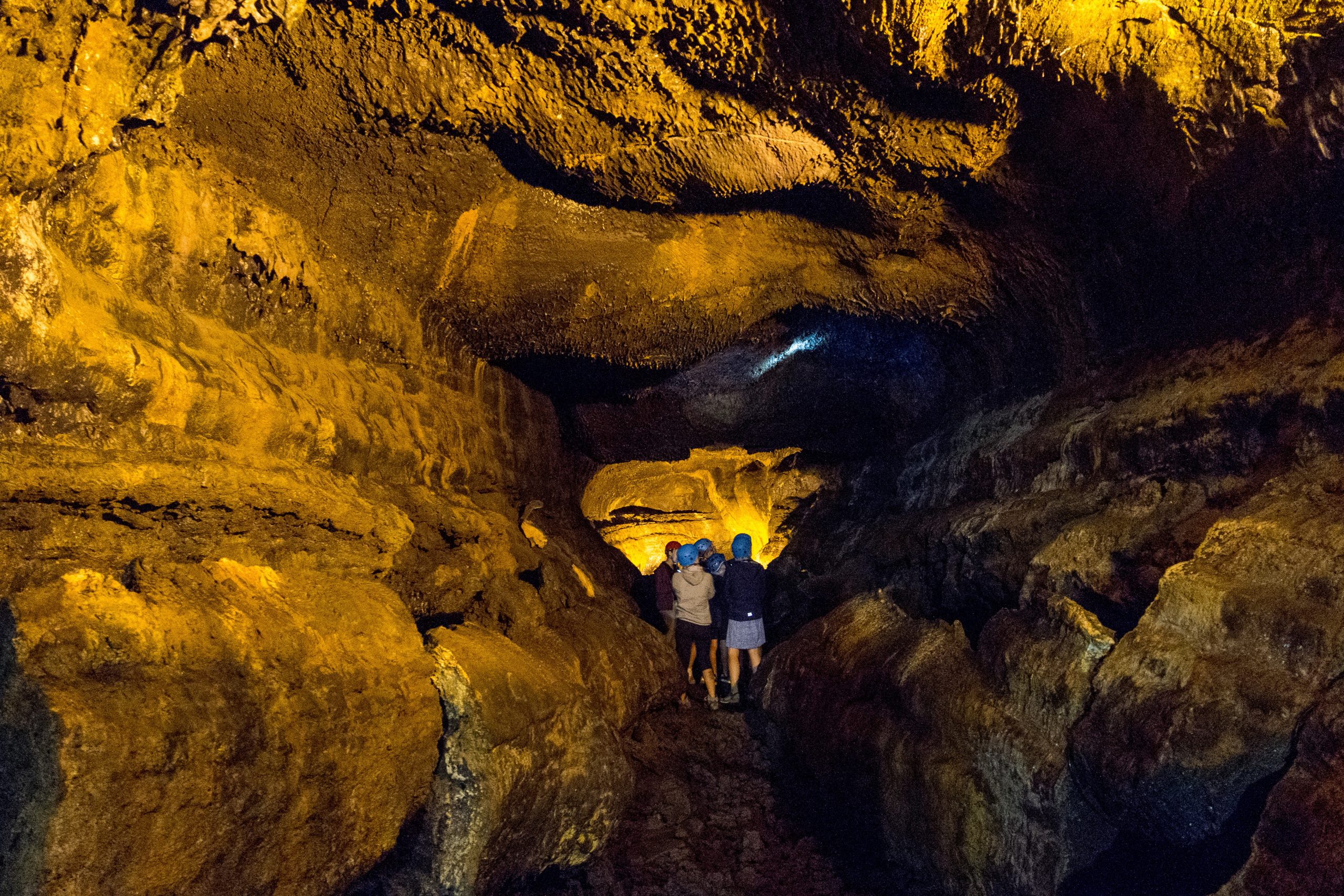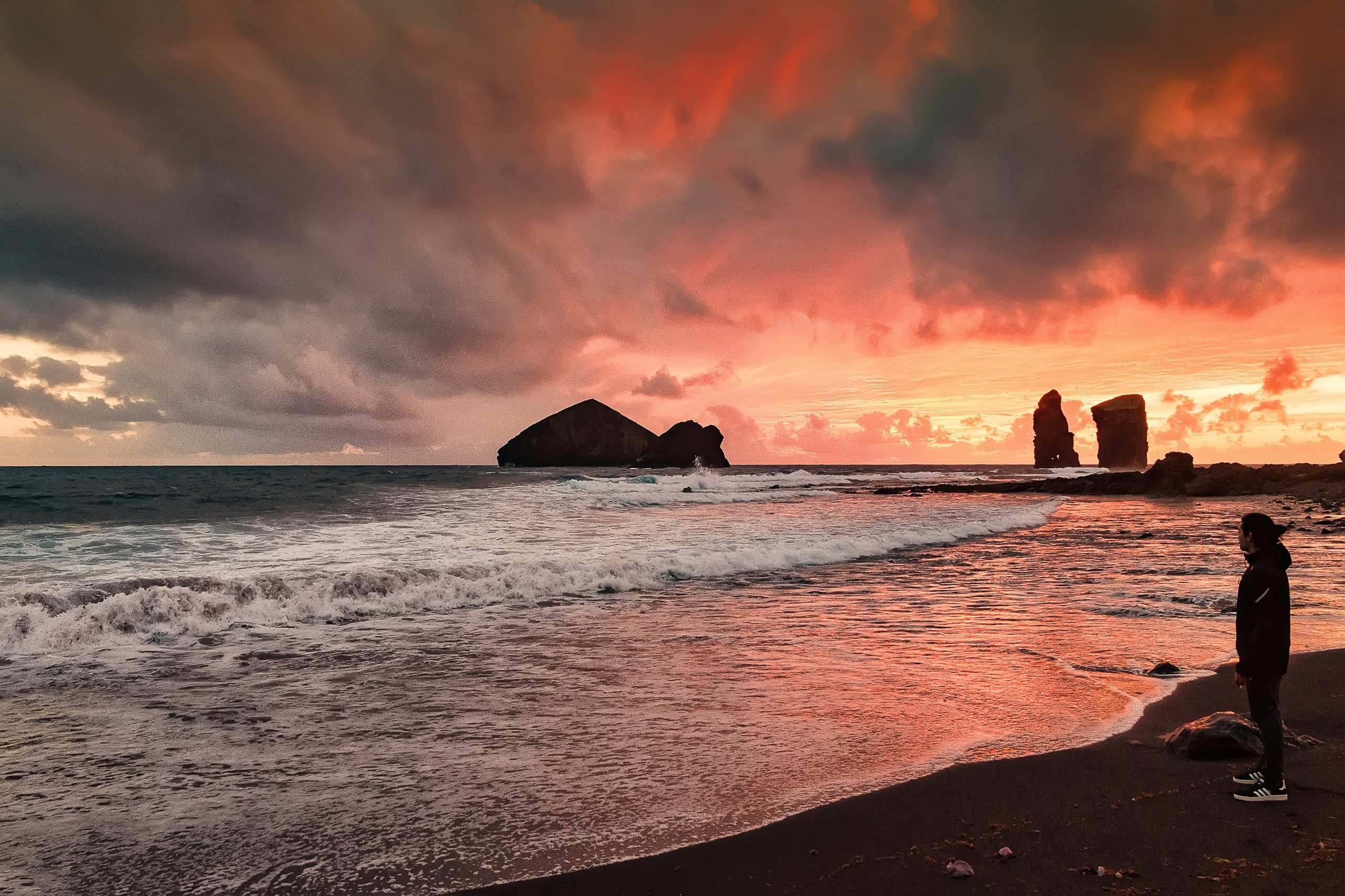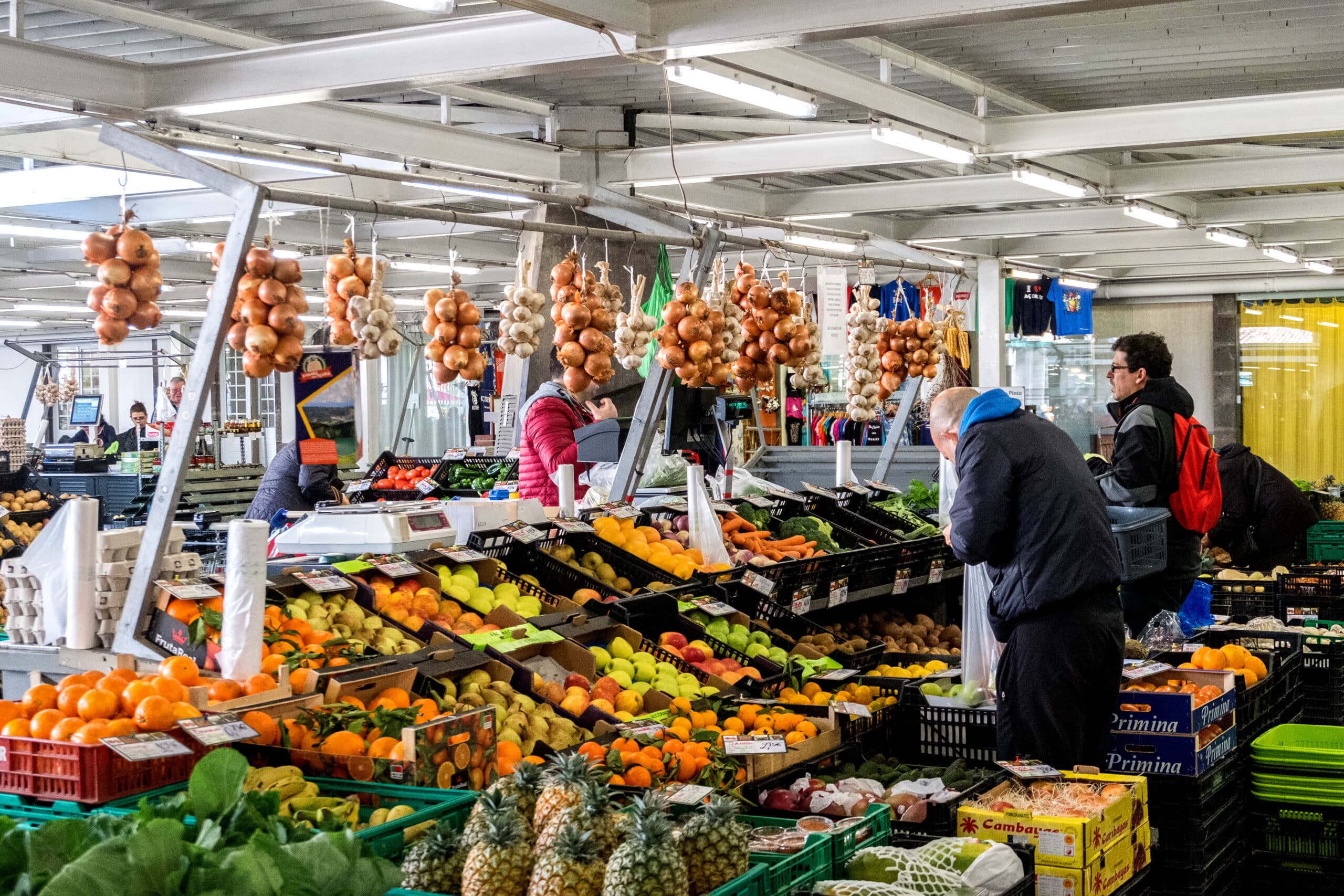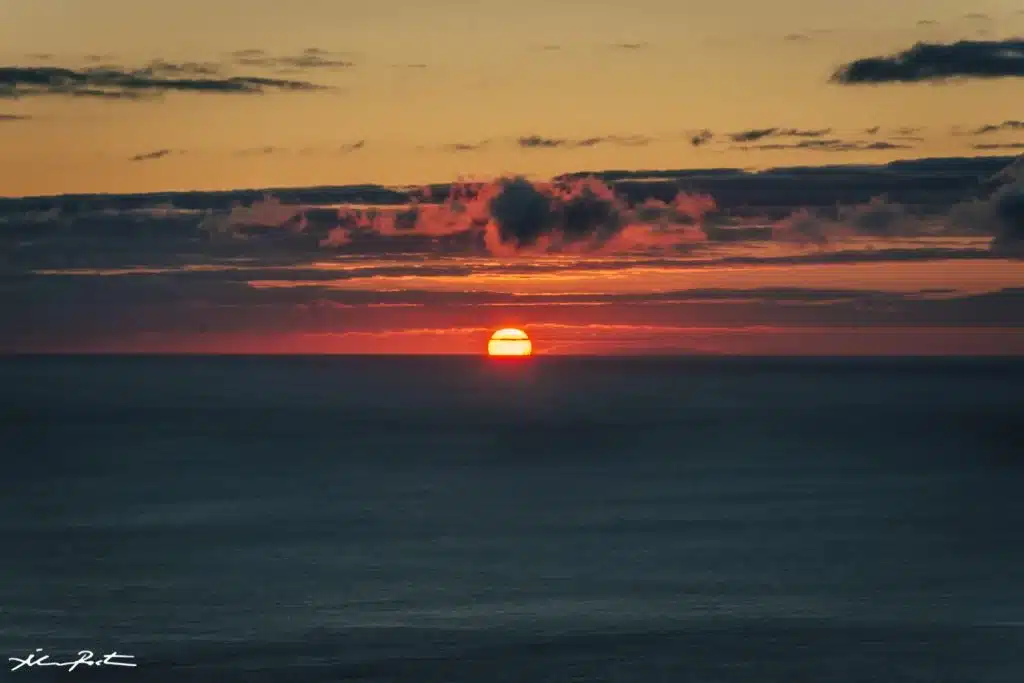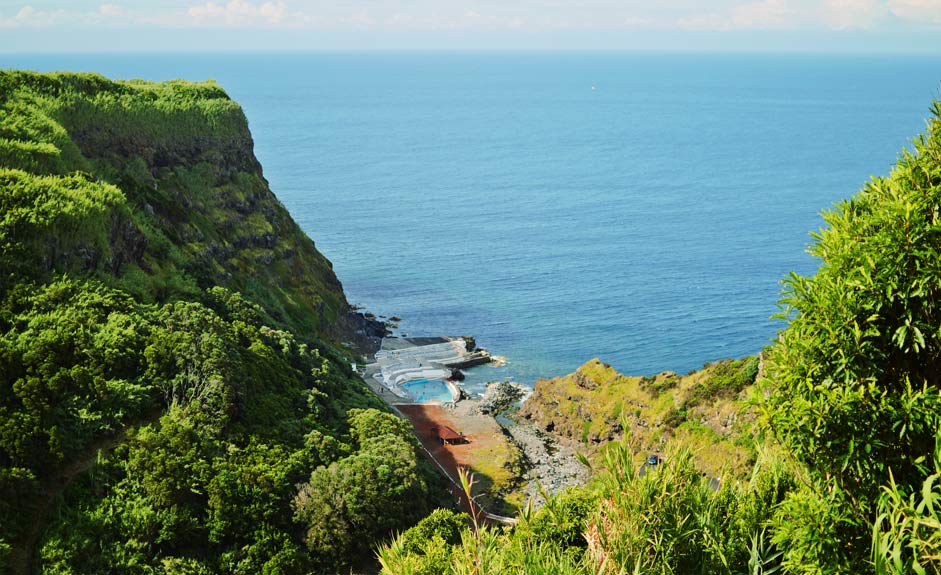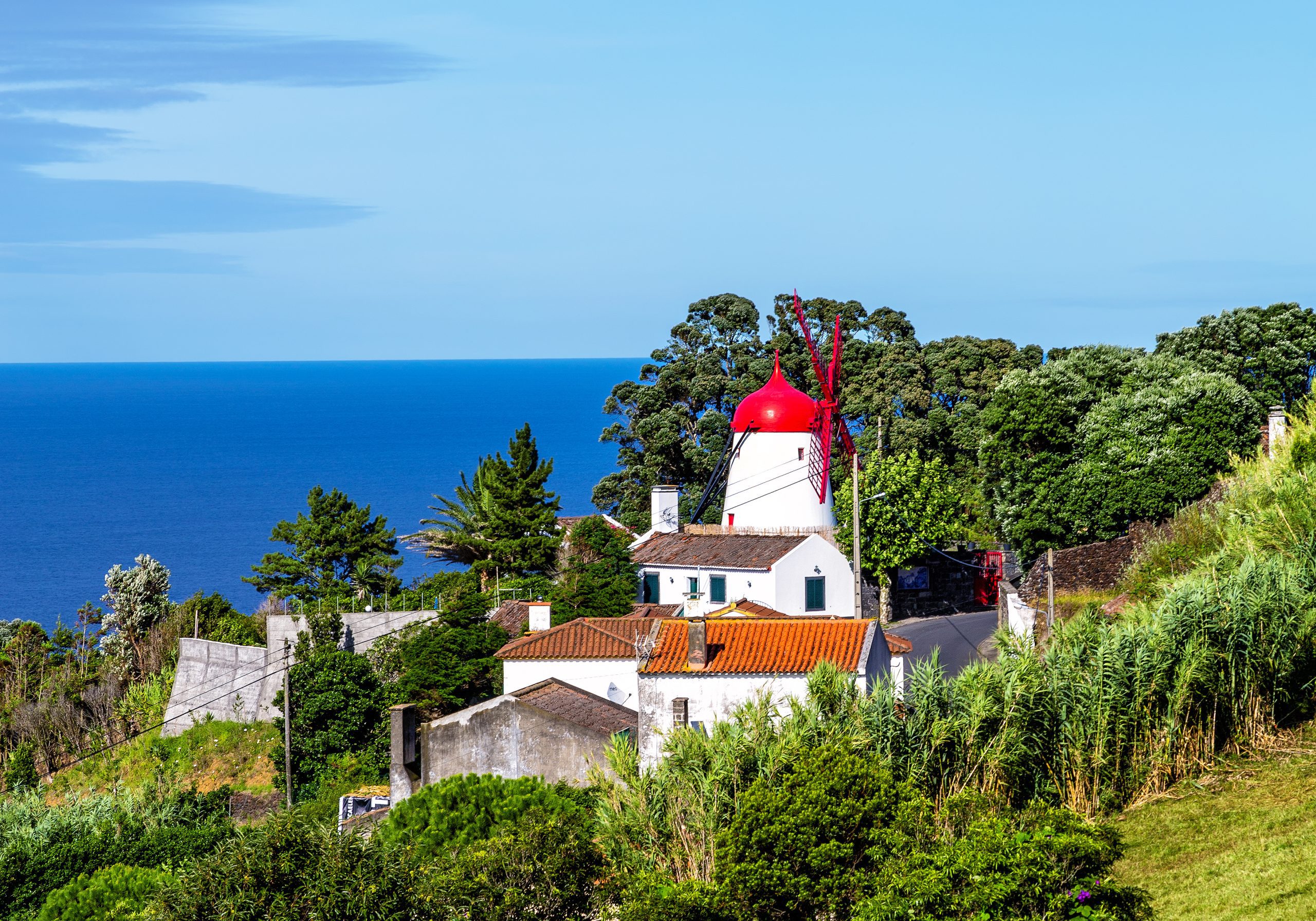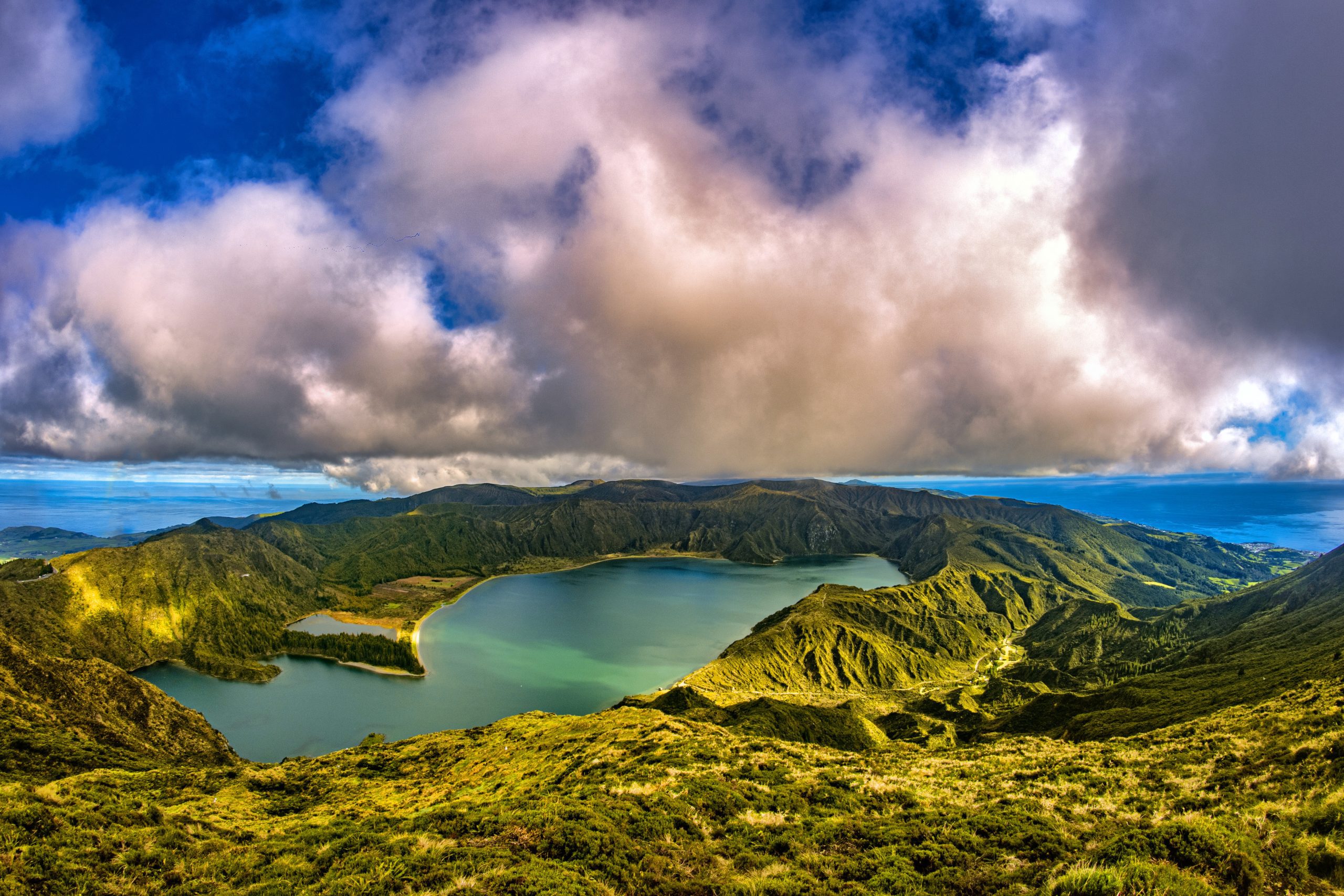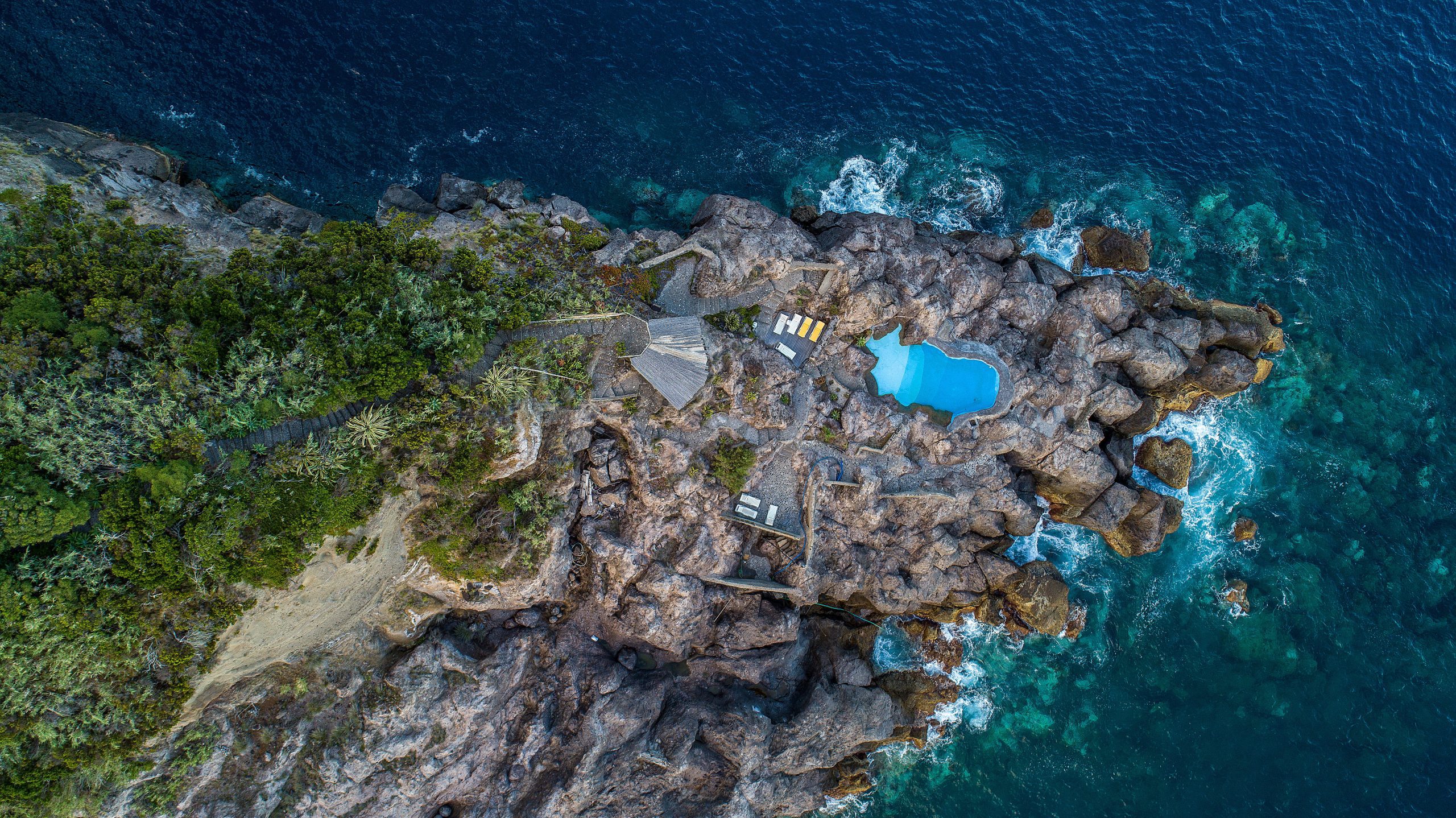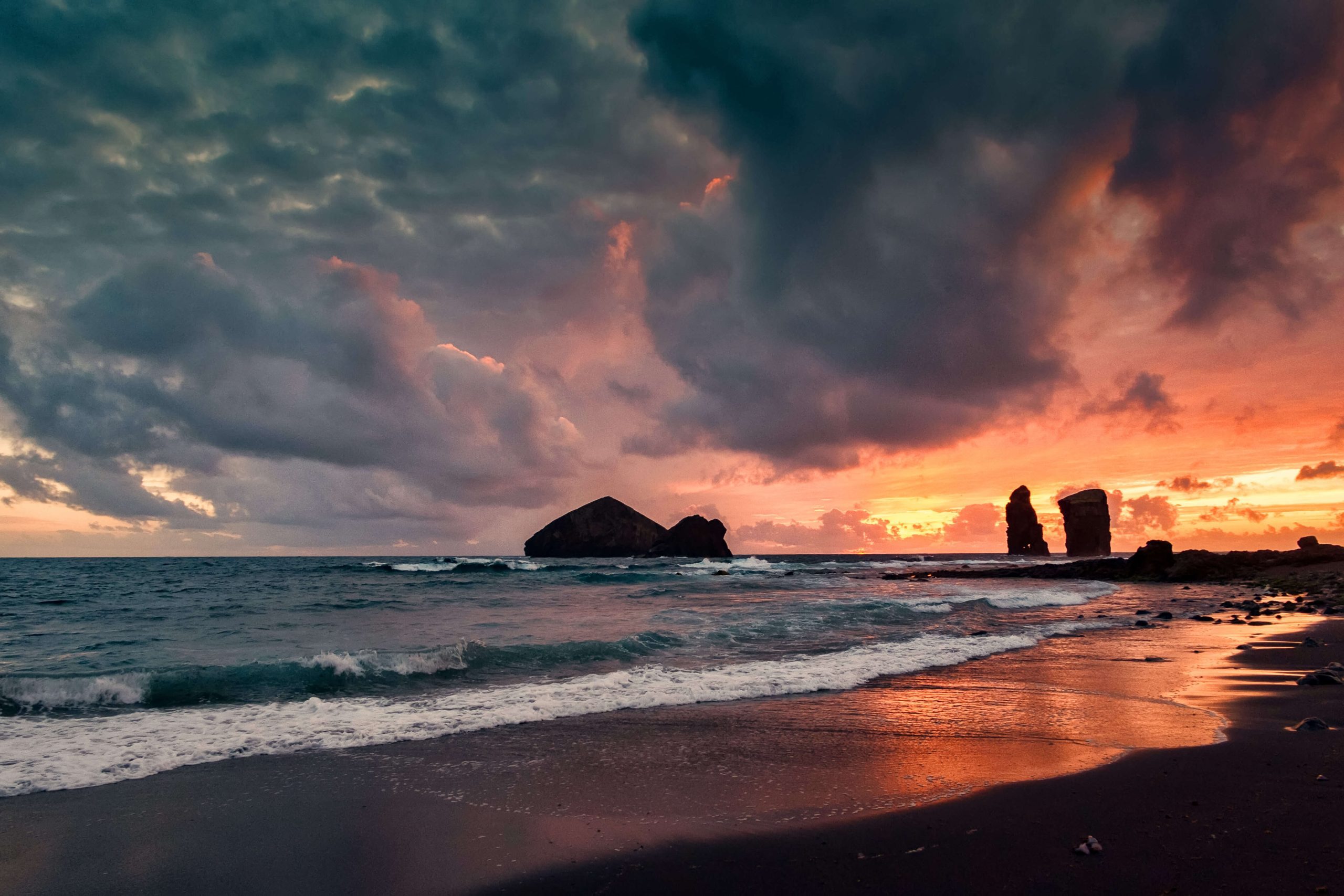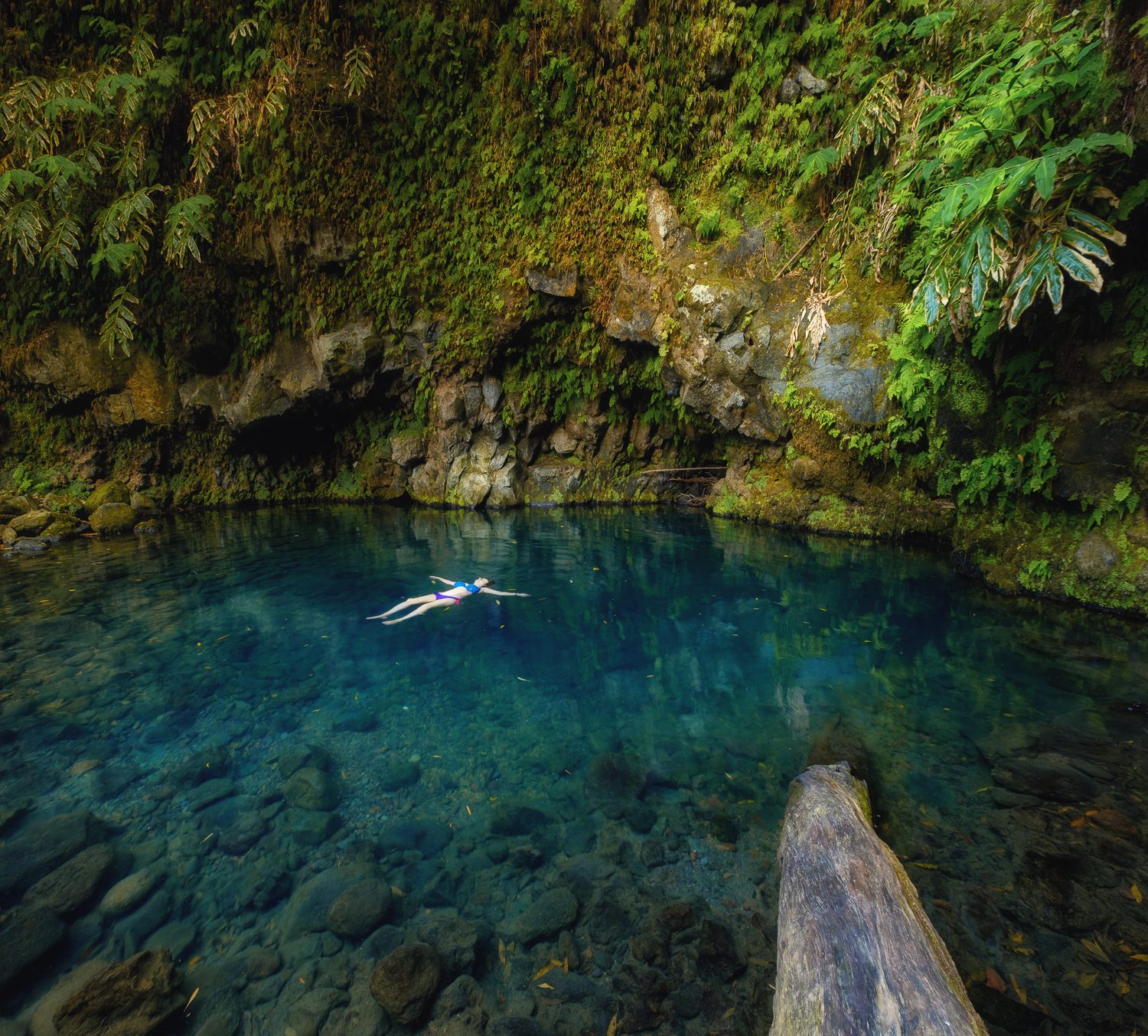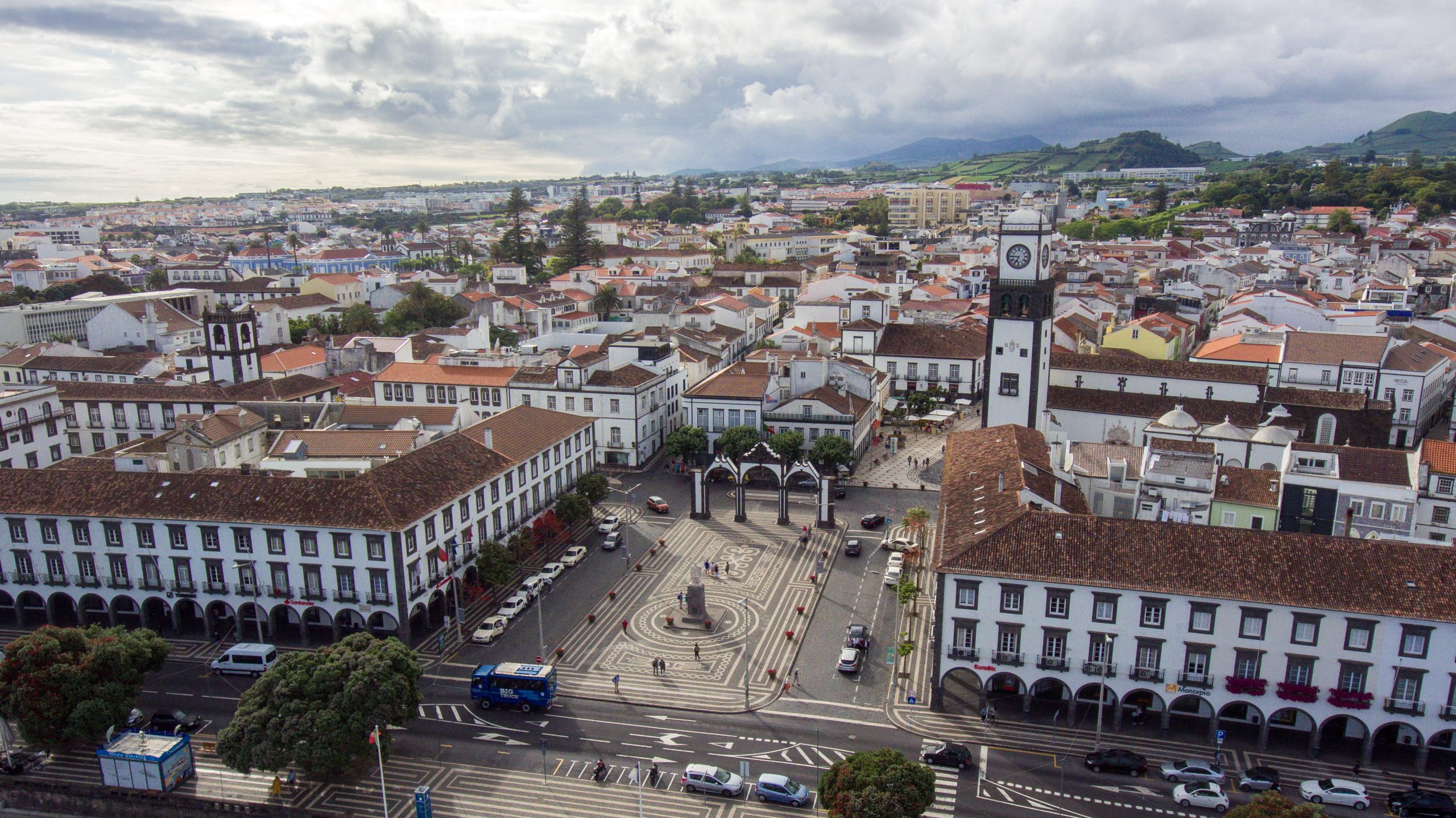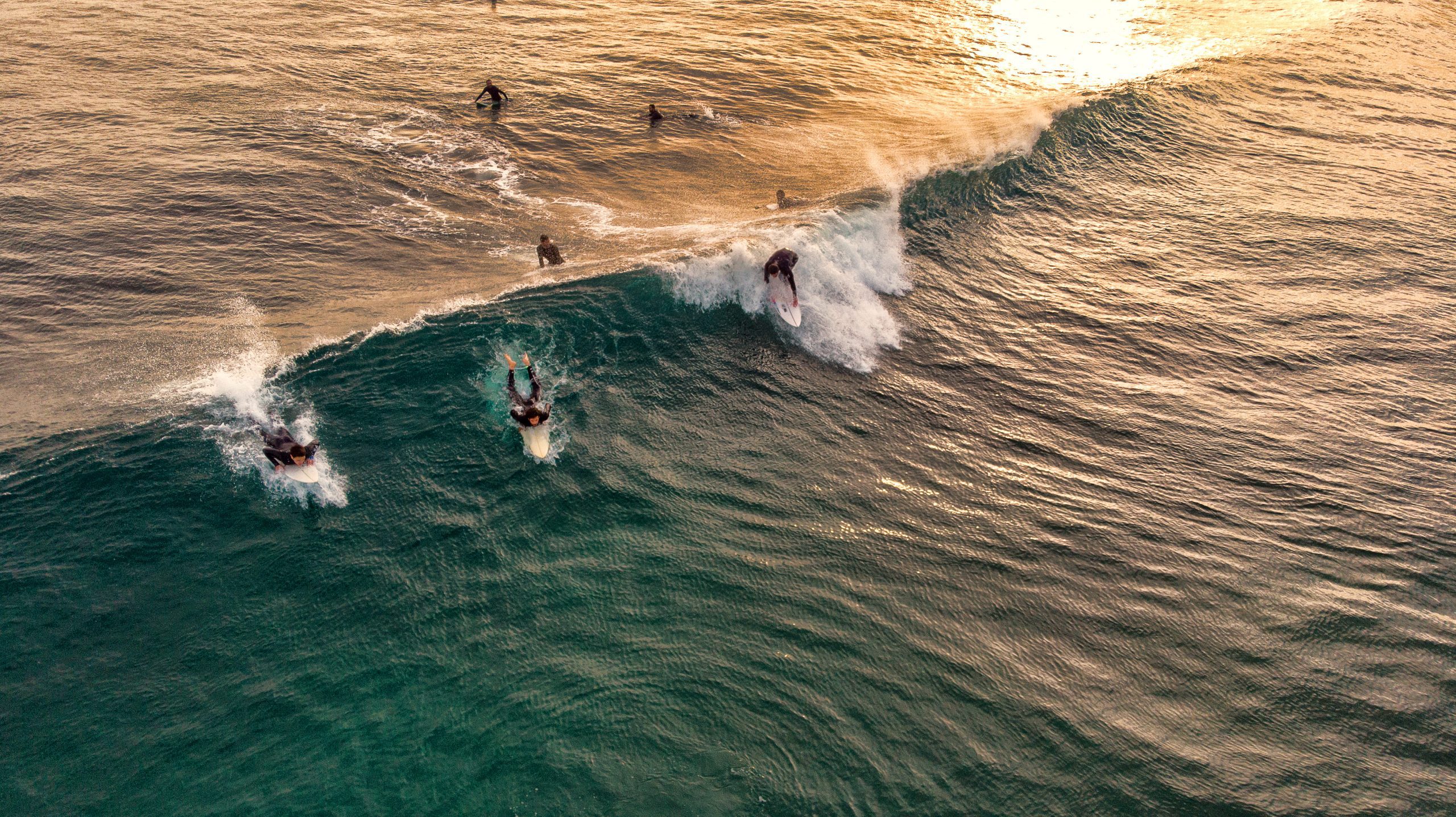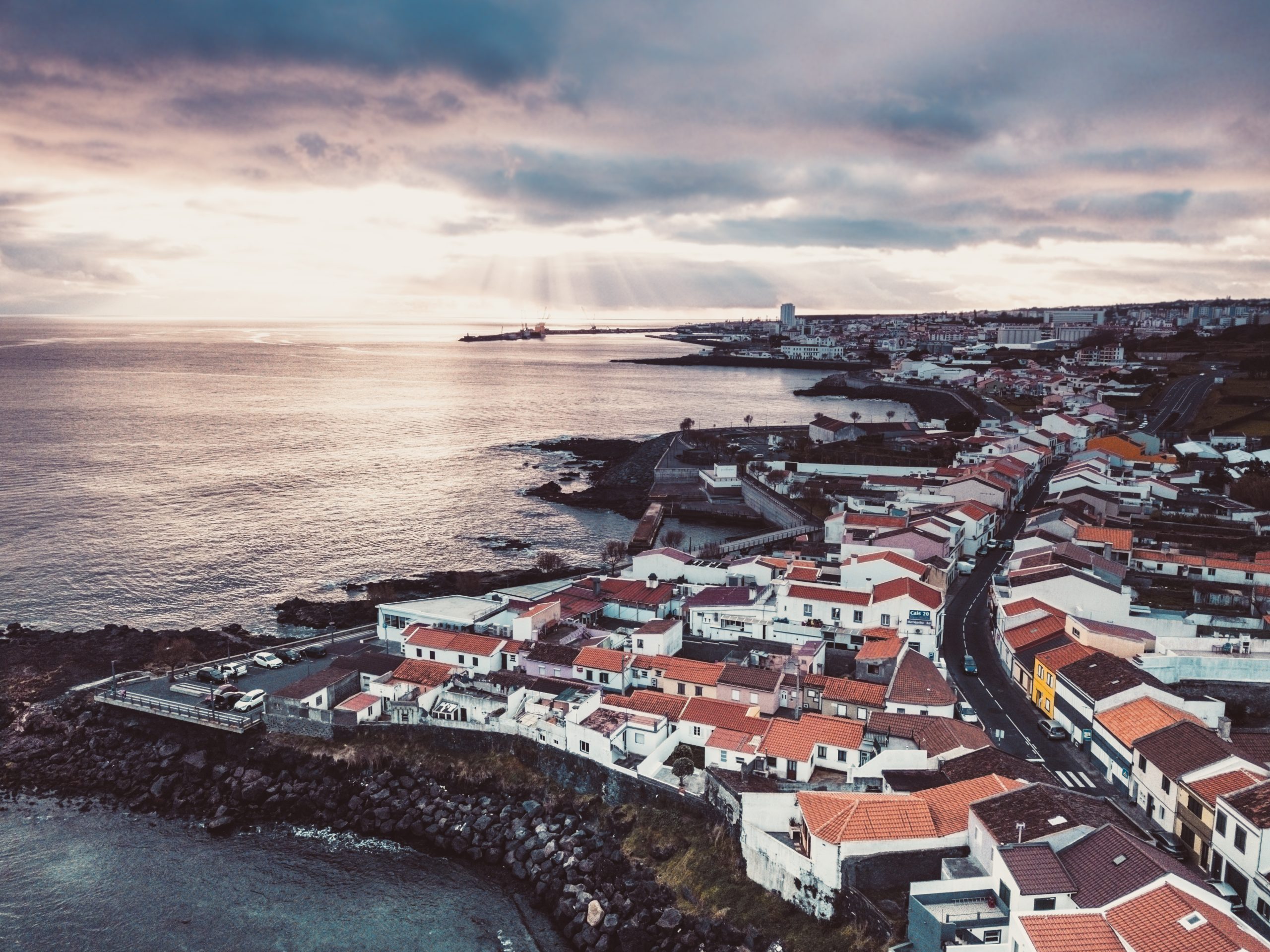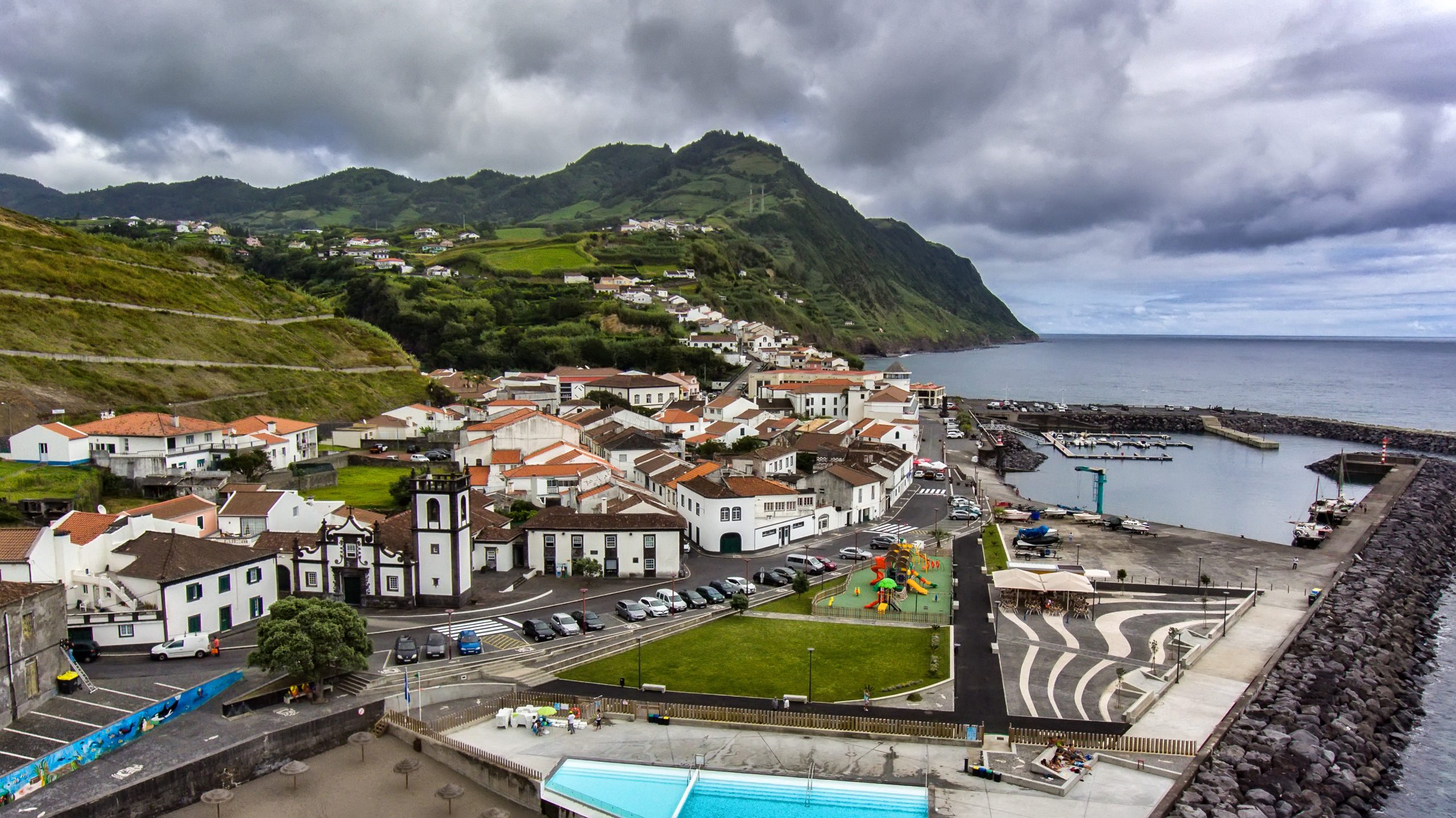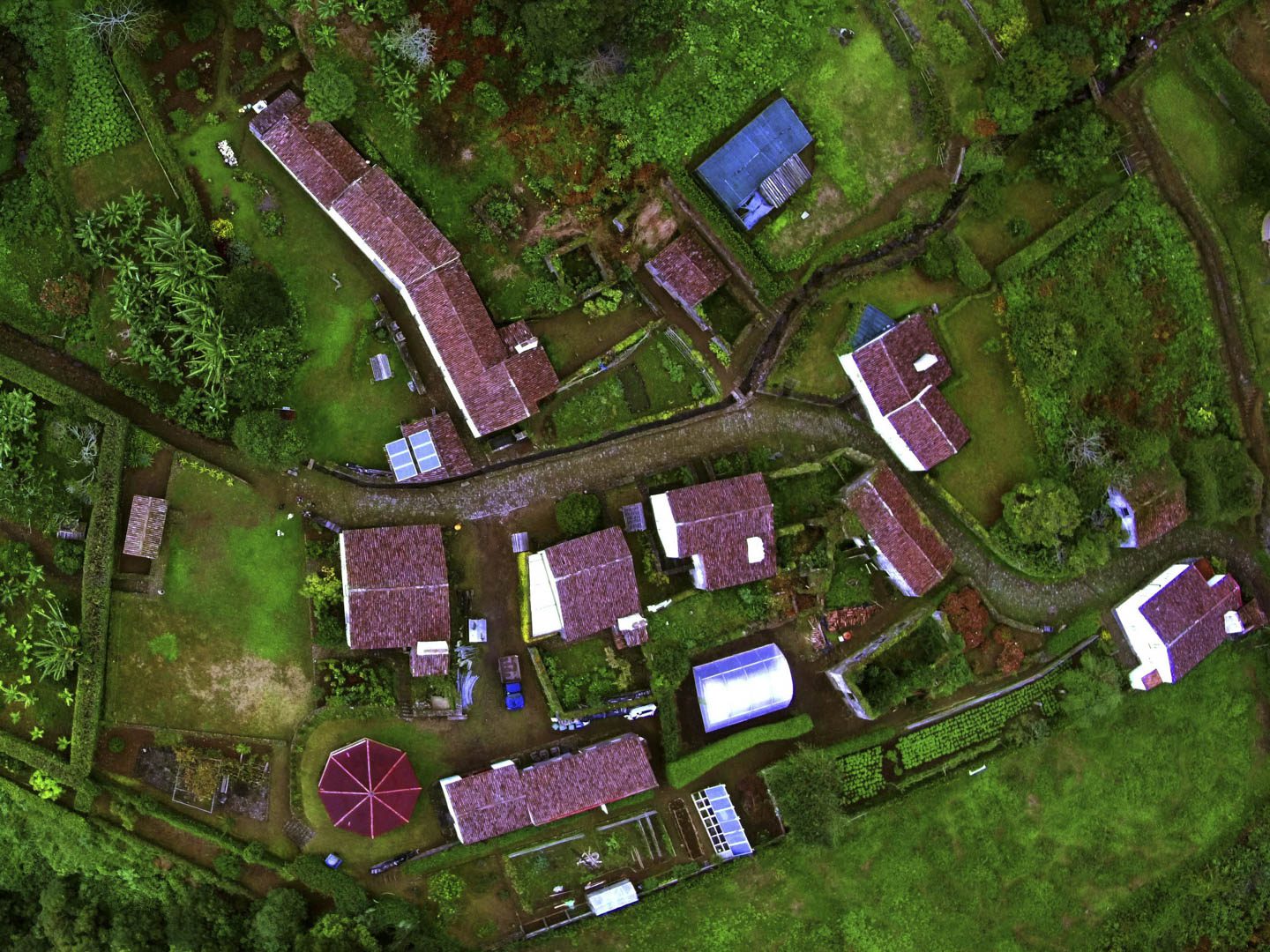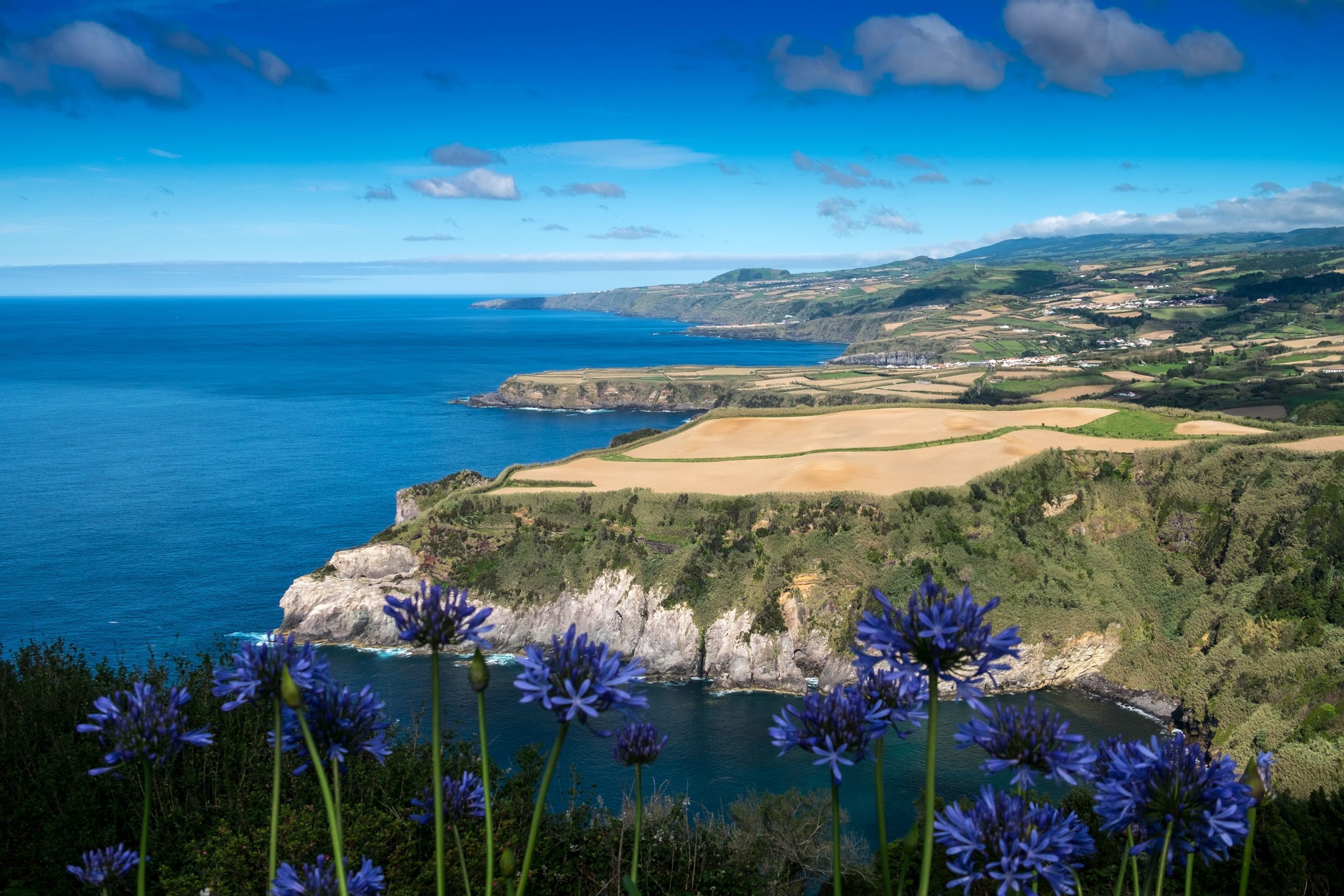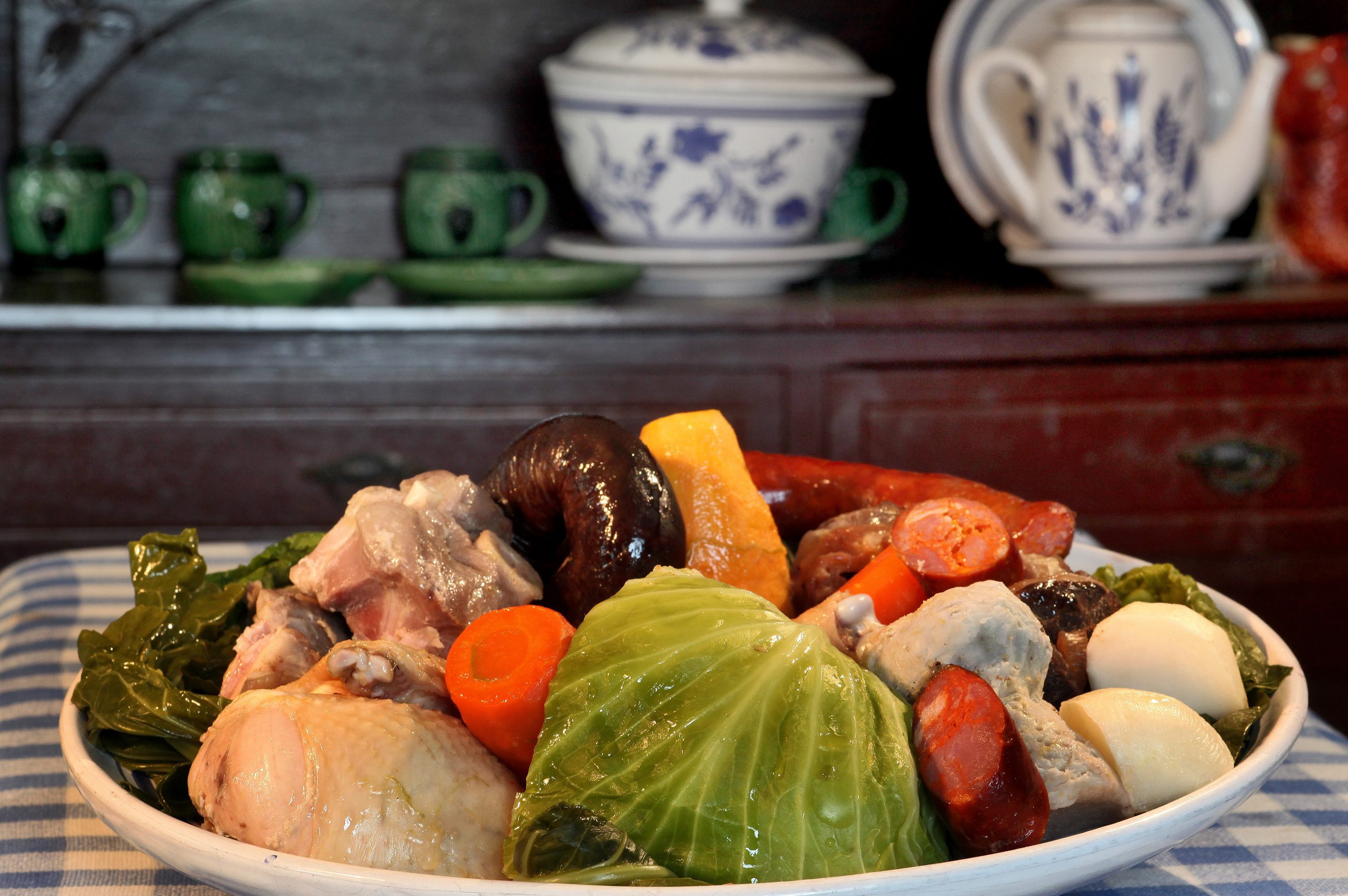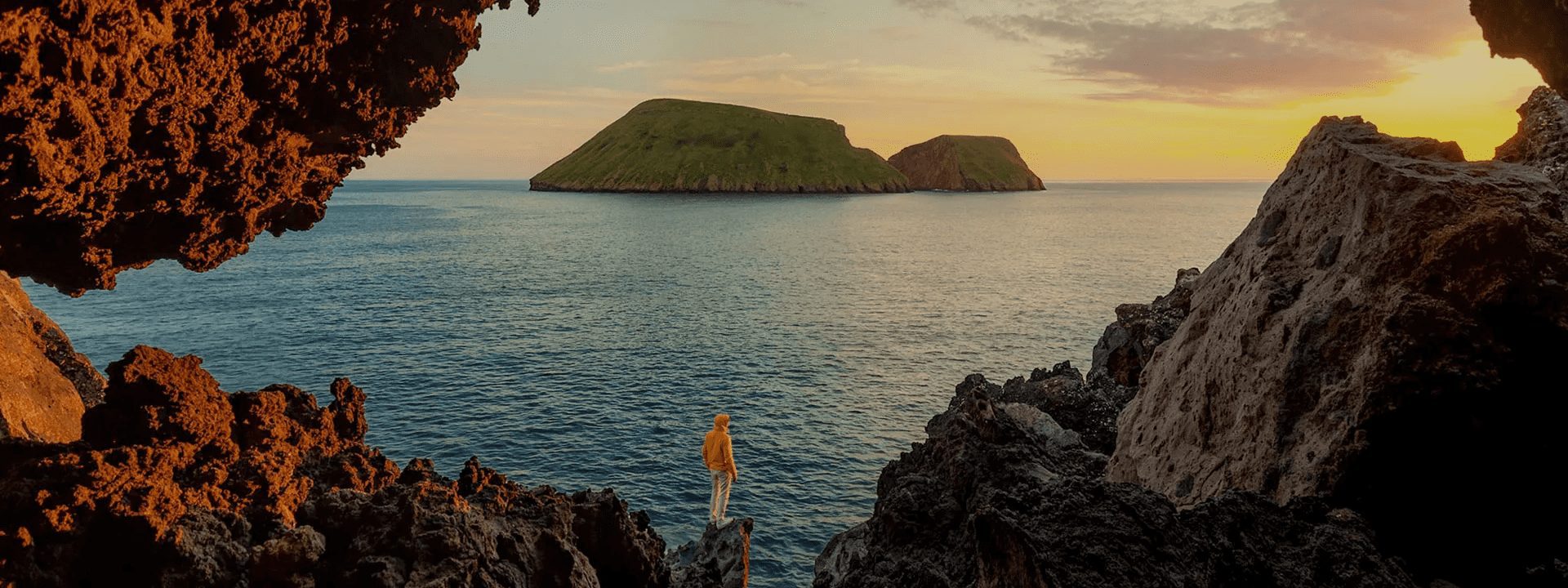Salto do Rosal is a beautiful waterfall with crystal-clear waters. It is located close to the shores of Furnas Lake and is part of the Mata-Jardim José do Canto. This magnificent waterfall is located in the parish of Furnas, in the municipality of Povoação, in São Miguel. So, to help you discover this imposing waterfall’s unique beauty, we’ve prepared a guide with the most relevant information about it and some tourist attractions you can’t miss in this part of the island.
What is Salto do Rosal

Salto do Rosal is a clear, icy waterfall inside the Mata-Jardim José do Canto, and it is one of the most popular places to visit. Despite the scarcity of water, tourists are surprised by the unique natural beauty of this space — it is undoubtedly one of the best waterfalls on the island of São Miguel.
When you reach the waterfall, you’ll realize that this is the ideal place to take a short break and enjoy the view and the waterfall. You can also take a refreshing dip in the lagoon in front of Salto do Rosal.
Note: Enjoy the tranquility of Salto do Rosal, savor a Bolo Lêvedo of Furnas, and take photographs to eternalize moments and memories.
What to Do in Salto do Rosal
Exploring Salto do Rosal is always a viable option for those searching for a unique experience to enjoy unforgettable moments with family or friends. Activities that appeal more to your spirit of adventure and permanent contact with nature, giving you more peaceful and relaxing experiences, are available. To complement your visit, we’ve decided to show you the activities you can’t miss during your time there.
Adventure on the Salto do Rosal Hiking Tour
To get to Salto do Rosal, you’ll have to walk along a small path that leads from the Vale dos Fetos to the waterfall. The trail is approximately 3.5 kilometers long and is surrounded by an immensity of endemic flora species. The route is moderately complex and takes approximately 1 hour 05 minutes to complete.
Moreover, on the way back to the starting point, it’s worth taking a short diversion to the Tornino Spring and enjoying the Ginkgo Biloba. Here, the icy water from the Salto do Rosal carved lush vegetation and sculptures into volcanic rock.
Plan Your Visit to Salto do Rosal Waterfall

Best Time to Visit
Temperatures in São Miguel are generally mild all year round. However, in the autumn and winter months, periods of rain and lower temperatures become more frequent.
In this sense, the best time to visit Salto do Rosal is during the summer months, between May and September, when the days are warmer and more inviting for swimming in the crystal-clear waters of the waterfall and for nature walks. However, it is between December and May that you can contemplate the beauty of the camellias in bloom in the extensive gardens of Mata-Jardim José do Canto.
However, it’s important to note that cloudy skies are a common feature of all the islands of the Azores archipelago, regardless of the season, so you may sometimes find it challenging to appreciate the beauty of some viewpoints.
How to Get to Salto do Rosal
If you’re traveling from Ponta Delgada to Salto do Rosal, you’ll have various transport options and routes. You can choose to travel by car (your own/rented vehicle or taxi), bus, or bicycle. To reach your destination, you’ll have to travel around 35 kilometers along the EN1-1A.
The journey takes approximately 35 minutes by car, 1 hour and 23 minutes by bus, and 2 hours and 50 minutes by bicycle. In any case, you can make this journey on foot, but you should expect to walk for around 8 hours.
What to Bring
Have you planned your visit to Salto do Rosal? Now it’s time to find out what essential items you can’t do without if you want your experience to be the best it can be. In this regard, we recommend that you take comfortable clothes and equally comfortable footwear suitable for the trail — hiking shoes and a swimsuit if you want to dive into the waterfall.
You should also take a rucksack with you:
- An extra warm garment;
- Waterproof or windbreaker;
- Towel so you can dry off and sit on the floor;
- Camera to eternalize moments;
- Sun cream;
- Some snacks;
- Water.
Where to Eat
If you need somewhere to eat near Salto do Rosal, click here. In this link, you’ll find the 10 best restaurants on Tripadvisor.
Where to Stay
To make your life easier, we’ve filtered the search by:
What to Do Around the Salto do Rosal Waterfall
Explore Mata-Jardim José do Canto

Mata-Jardim José do Canto is on the south side of Furnas Lake. It was planted by the man who gave it its name in 1861 in an arid area affected by the Lagoa Seca volcano, which has been silent since 1630. Barrillet-Deschamps, a “pop star” of French landscaping who had already signed such hits as the gardens of the Champs-Élysées in Paris (co-author), designed the project.
This ten-hectare woodland garden includes centuries-old camellias and sequoias and the Salto do Rosal trail — a 2 km path to a crystal-clear waterfall. The site has been open to the public since August 2014.
The flora at Mata-Jardim is exceptional. Here, you can see a vast collection of camellias planted along the property’s extensive boulevards and in the new camalieto, coexisting with many remarkable trees and endemic plants, some Indigenous and others from temperate and subtropical regions.
Visit the Ermida de Nossa Senhora das Vitórias

The Ermida de Nossa Senhora das Vitórias is a unique neo-Gothic chapel, the only one of its kind in the Azores. Built in the 19th century, it graces the south shore of Furnas Lake and forms part of Mata-Jardim José do Canto.
Quick Info
José do Canto commissioned the chapel as an act of faith, hoping to aid his wife, Maria Guilhermina, in recovering from a serious illness. Later, both were laid to rest within its walls.
Inspired by the grand neo-Gothic churches of Europe’s capitals, this architectural masterpiece is a testament to devotion and artistry. Be sure to step inside to admire its remarkable design and craftsmanship. A woodland garden surrounds the chapel, enhancing its charm. Stroll through the area to discover intricately carved tree trunk statues and information plaques about the local flora.
Explore the Vale dos Fetos
The parents of the current owner of Mata-Jardim José do Canto created Vale dos Fetos in the mid-20th century. This stunning garden is home to countless fern species and endemic plants, offering visitors a lush botanical paradise.
The original fern valley, initially located outside the property, suffered destruction. Ernesto Hintze Ribeiro and Maria Josefa Gabriela Borges de Sousa Jácome Corrêa replanted it within the estate. Their work restored its beauty and preserved its legacy. Vale dos Fetos is perfect for botany lovers or anyone seeking a peaceful retreat. Visitors can explore the rich diversity of plant life and enjoy nature’s beauty in this magical garden.

Visit Casa dos Barcos and Casa da Lagoa

Casa dos Barcos, originally a cottage-inspired by Nordic (Anglo-Flemish) architecture, is now a charming rural tourism resort. Formerly known as the Navigation Pavilion, it combines elegance with a nod to maritime history. Casa da Lagoa, also converted into a rural tourism space, began as the “Fishing Pavilion.” This Franco-Swiss chalet reflects the picturesque architectural style of its era, offering guests a unique blend of charm and history.
Both lodgings within the Mata-Jardim José do Canto on the southern shore of Lagoa das Furnas provide an unforgettable experience. Surrounded by exceptional botanical diversity, the garden is also home to the stunning Chapel of Nossa Senhora das Vitórias. Whether exploring São Miguel or seeking a peaceful retreat, these rural accommodations offer a perfect escape. They combine stunning natural beauty with historical charm, creating a memorable experience for every visitor.
Enjoying the Tranquility of Furnas Lake
Furnas Lake is an ex-libris of the island of São Miguel, known for its tranquil setting and permanent contact with nature. This is why it attracts thousands of visitors annually who explore the region. Located in an ancient volcanic crater, Furnas Lake occupies a considerable part of the Furnas Volcano caldera.
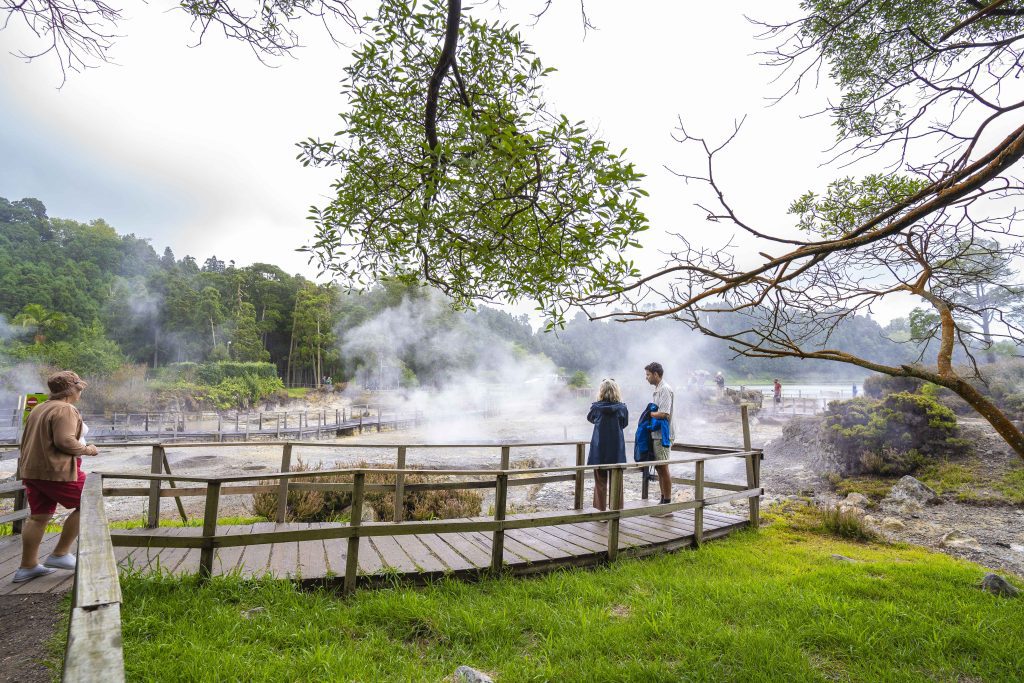
Did you know
Although Furnas Lake is surrounded by constant volcanic activity, Furnas Volcano has been “dormant” since its last eruption in 1630.
In this landscape, we can still see several intra-caldera volcanic cones, domes, thermal springs with medicinal properties, mud or clear water boilers with high temperatures, geysers, and volcanic fumaroles. There are also the well-known natural kitchens where the famous Furnas stew is made.
Complementary Information
Best Season to Visit the Azores
The Azores Archipelago boasts a unique climate that shapes its lush landscapes, making it a splendid year-round destination. With mild temperatures and minimal fluctuations, each season offers something unique. Spring averages 16 °C, summer reaches 21 °C, autumn cools to 18 °C, and winter remains mild at 14 °C.
→ For a detailed breakdown of the weather by month, check the following links 🌤️☔️: January | February | March | April | May | June | July | August | September | October | November | December
How to Get to the Azores
The Azorean Archipelago is easily accessible through numerous flight routes. Lisbon and Porto are the main entry points to the continent, with direct flights available to São Miguel (PDL), Terceira (TER), Faial (HOR), Pico (PIX), and Santa Maria (SMA). To find the best flight, use search engines like eDreams or Skyscanner. These platforms enable you to compare prices and schedules from various airlines in one convenient location.
For more details on how to get to the Azores, take a look at our complete guide. But what if you want to explore beyond your arrival island? We’ve got you covered!
- Azores airports 🛬
- Flights between islands ✈️
- Ferries between islands ⛴️
- Which island to choose? 🏝️
- What airlines fly to the Azores? 🛩️
→ Once you’ve found the perfect route, book your tickets and get ready to experience one of the world’s most stunning island groups!
Travel Essentials
Essential Information for your Azores trip: Azorean Language & Phrases 🗣️ | Currency & Banks 💵 | Credit Cards & Traveler’s Cheques 🏧 | Driving in the Azores 🚗 | Electricity 🔌 | Experiences & Tours 🗺️ | Health & Safety 🩺 | Internet & Wi-Fi Access 🛜 | Phones & Mobile Service 📞 | Post Offices & Buying Stamps ✉️ | Public Holidays 🏖️ | Shopping 🛒 | Time & Daylight 🕒 | Whale Watching Guide 🐳 | Best Island to Visit 🏞️
Useful Tools & Apps
The weather in the Azores can be variable, so it’s helpful to use some apps before visiting the islands. Spotazores provides live camera feeds from the main tourist attractions, allowing you to check the weather and plan your visit. For accurate weather predictions, use Windy or Windguru — they provide the most reliable predictions.
Video
Conclusion
The Salto do Rosal waterfall is a beautiful cascade of crystalline waters that fascinates all who visit it. It is, therefore, considered a must-see for anyone visiting the stunning island of São Miguel. Salto do Rosal has beautiful natural surroundings. Here, you can enjoy leisure moments with your family and friends, surrounded by nature. Then, set off to discover the town of Furnas and enjoy its vast cultural heritage, breathtaking landscapes, gastronomy, and thermal springs, which offer many health benefits.
What are you waiting for? Book your visit to Mata-Jardim José do Canto and Salto do Rosal now to discover this and many other iconic tourist attractions on the island!
Authors’ Note
I am pleased to inform you that all the recommendations in this article are based on my personal experience and observations. As the author, I have personally visited each attraction mentioned, ensuring that every suggestion is grounded in first-hand knowledge and genuine enthusiasm.
Check all our articles about each one of the most relevant points of interest in Furnas: Caldeiras das Furnas | Furnas | Capela da Nossa Senhora das Vitórias | Castelo Branco Viewpoint | Lagoa das Furnas | Lagoa das Furnas Viewpoint | Mata-Jardim José do Canto | Parque Terra Nostra’s Thermal Pool | Pico do Ferro Viewpoint | Poça da Dona Beija | Ribeira Quente | Praia do Fogo | Salto do Cavalo Viewpoint | Salto do Rosal | Terra Nostra Garden
FAQs
Salto do Rosal is located in Mata-Jardim José do Canto, on the southern shore of Lagoa das Furnas, São Miguel Island, Azores.
It is recommended to visit between January and May in spring, when the camellias are in bloom, providing stunning scenery along the trail to the waterfall.
The panoramic trail to Salto do Rosal is approximately 2 km and takes about 1 hour to complete round trip.
Yes, there is an entry fee of 4 euros per person to visit Mata-Jardim José do Canto, which grants access to Salto do Rosal.





